June 27, 2021
Martha O'Kennon
.
We have now had something like three days of rain, some of it torrential. I wrote this first part early, before the blast.
As the "bugs" become more and brighter, the flowers are less evident. But one thing that is not on the wane is the Trumpetvine. Each year I think it has completely died out - the vines are thick but have no buds - until NOW! Here is one of hundreds of buds. Meanwhile the Common Day Lily is blooming its head off. Here is one just about to open fully. And that strangled flowerless Rose Campion that I potted last year after finding it wrapped in weeds - surely one of nature's gems.
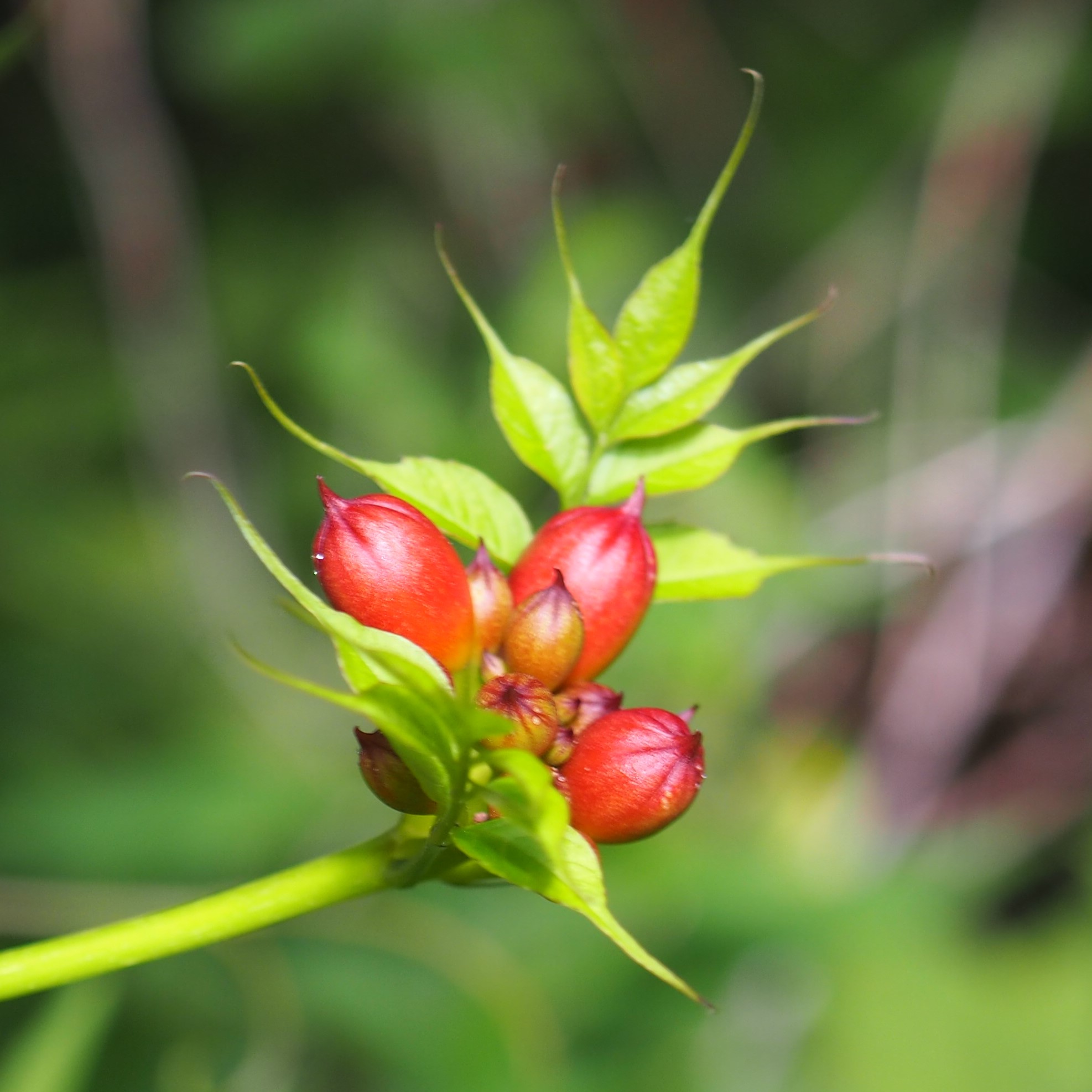
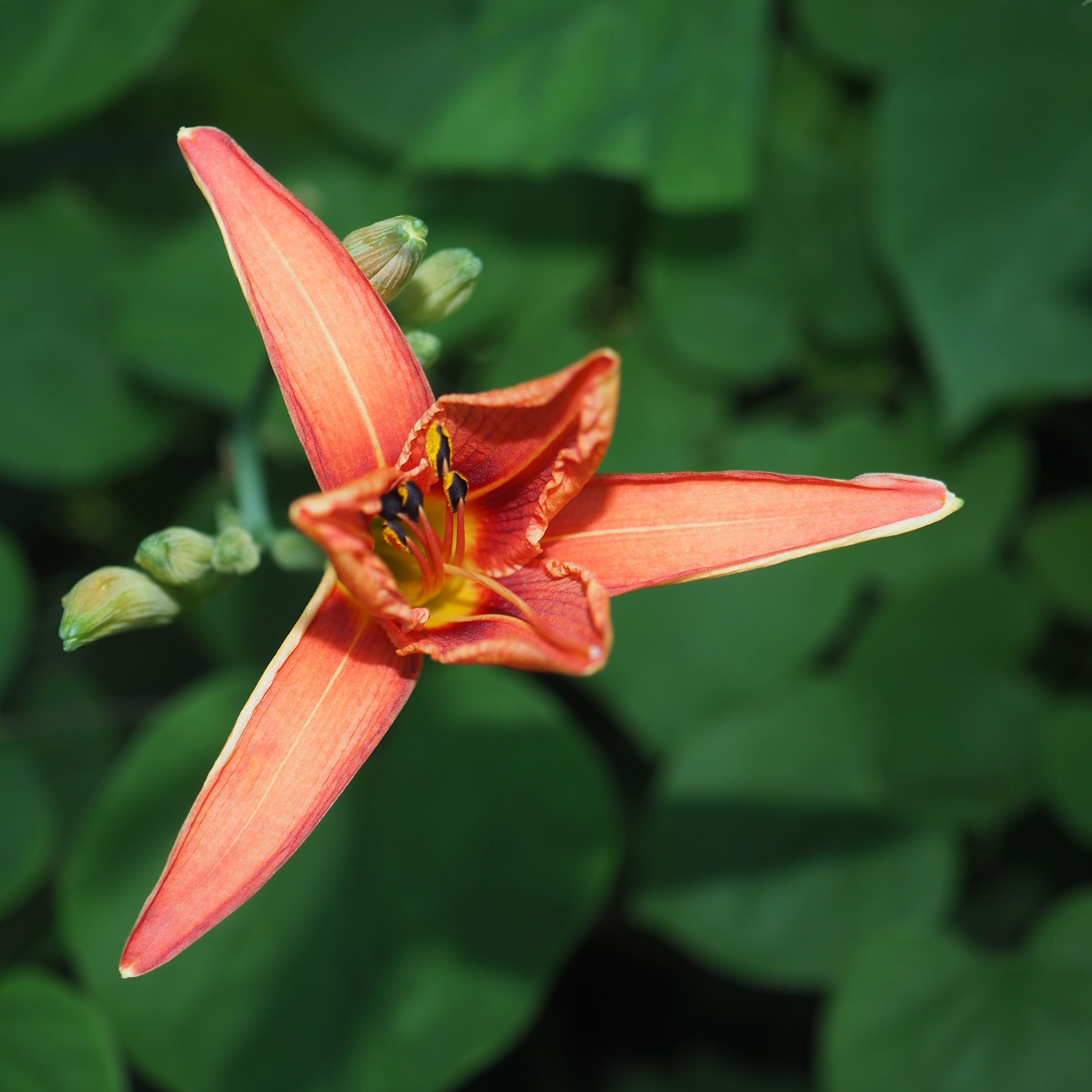
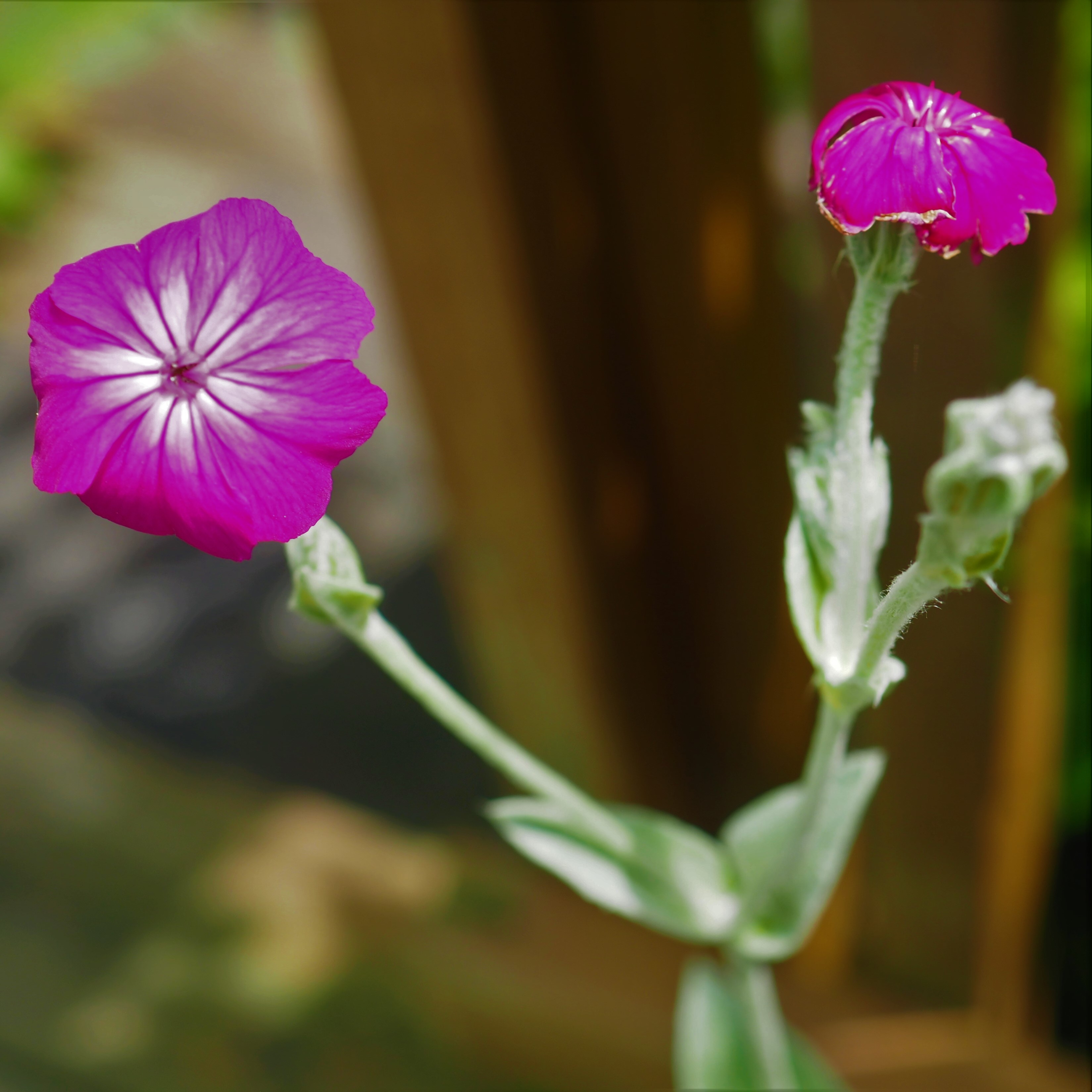
Remember that there is information in the name of the file for each image. You can see it by mousing over the
image - look at the lower left of the screen. Or you can click on the image to get to the (usually) larger image.
Then the info is displayed in the address line above. Sometimes the second click will actually display a
different view of the original image.
The Ants are still fascinating. Remember this picture from last week where the Ant is carrying a big seed filled with custard? Well, Steven Wang filled me in on what's going on. There is a name for the "custard" -
"elaiosome". He says, "This ant appears to be carrying an elaiosome on a seed! Lots of plant species in temperate climates use ant seed dispersal by having a white lipid-protein rich "gift" attached to a well protected seed for ants." That is, the Plants attach this gift, which is much prized by the Ant, to a seed and the Ant carries away the seed with the yummy elaiosome. She eats or carries this to her nest and tosses the seed, which is just some junk to her. The seed has been dispersed, probably far from its origin. I wish I knew what plant produced the seed. If YOU happen to witness this amazing spectacle, and can find out where the seed originated, please write me, OK? And I will pass this prized piece of the puzzle on to Steven. Picture 2 shows an Ant carrying a bug or seed - maybe it has already dropped the elaiosome somewhere. Third shows another Ant carrying another elaiosome, perhaps already having dropped the seed. All these Ants seem to be Smaller Carpenter Ants.
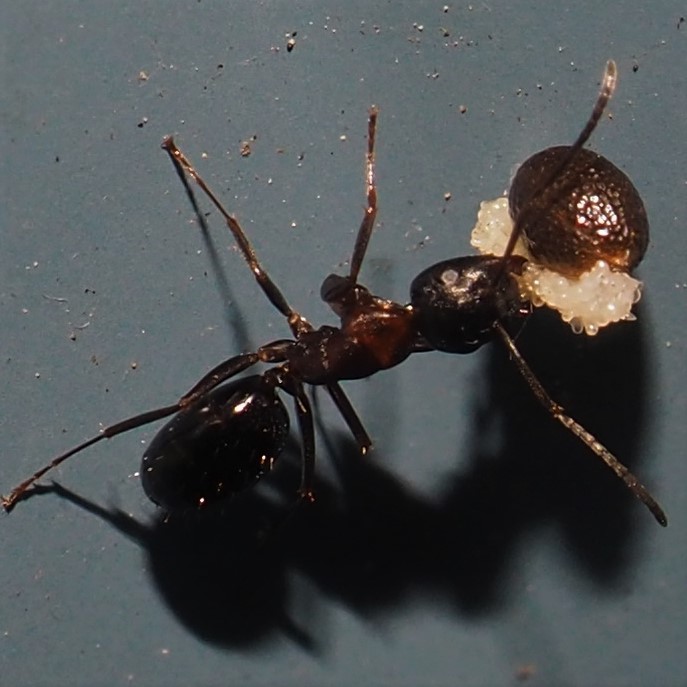
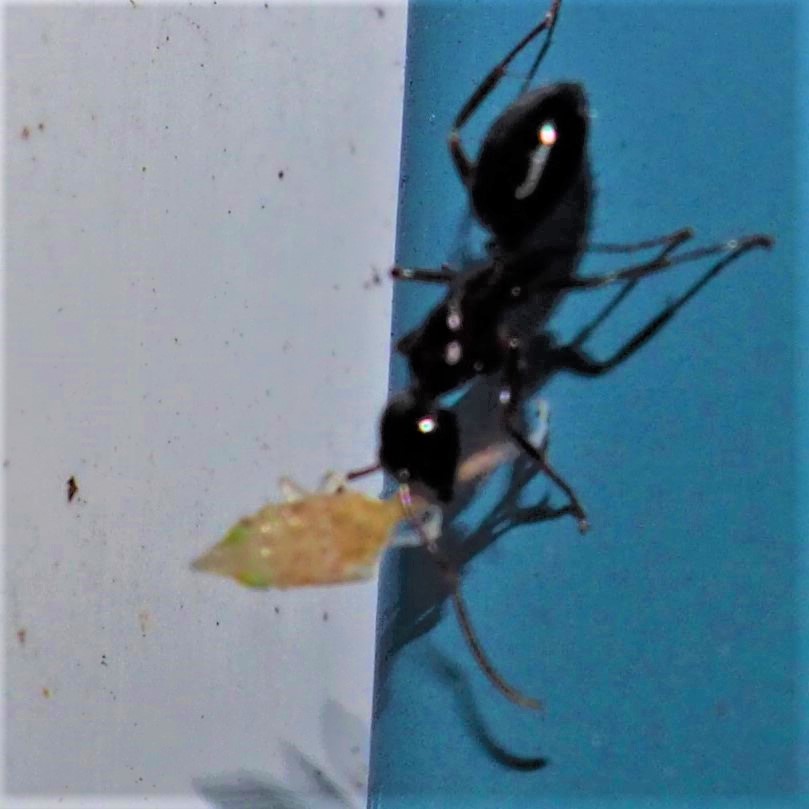
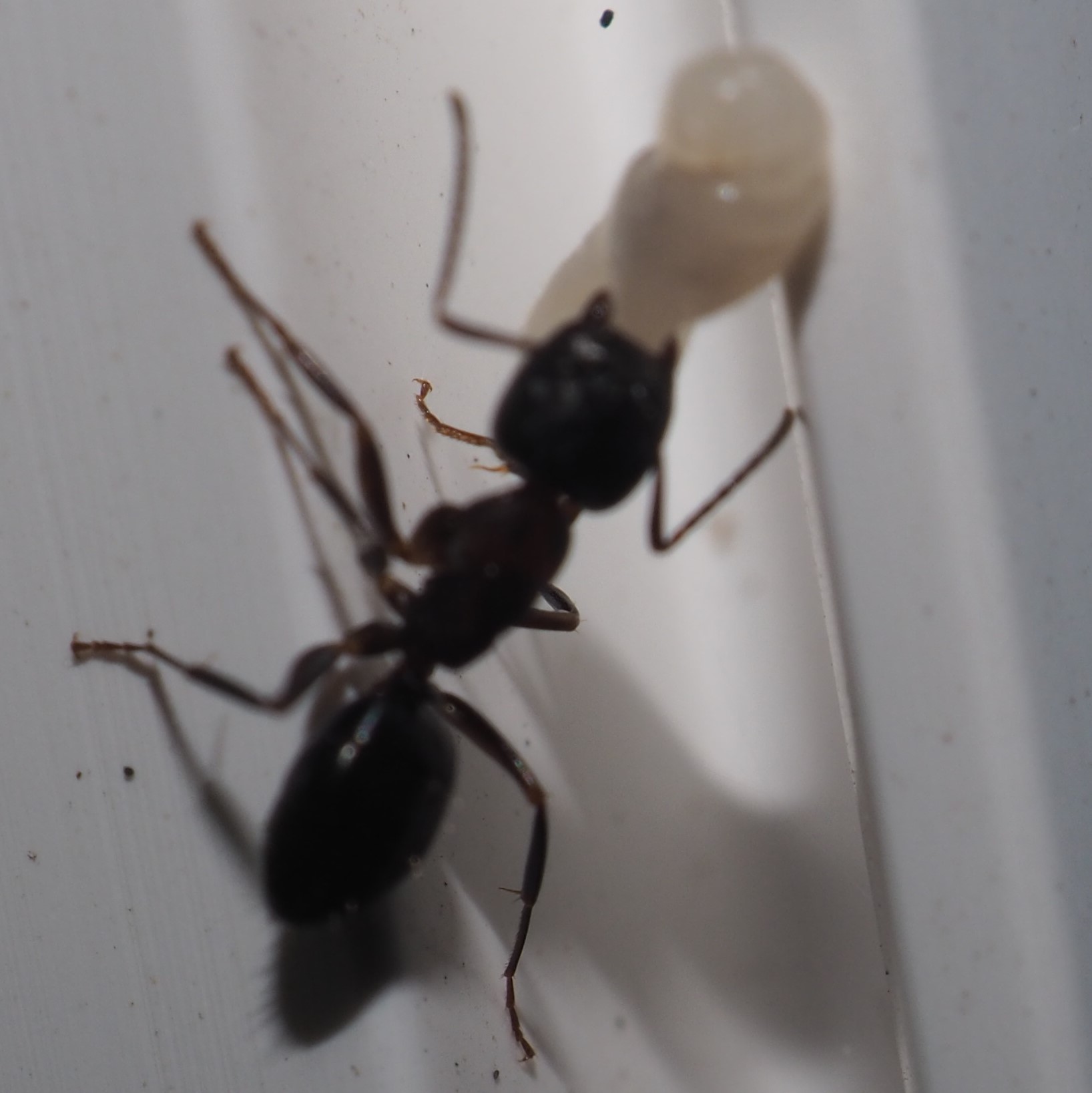
Here is another Smaller Carpenter Ant with a Graphopsocus cruciatus Barklouse. The Ant doesn't seem to have any designs on the Barklouse. The second one seems to be having some kind of dream - but probably the fantasy object is not even in the Ant's attention space. Third is a new Ant. What a huge thorax! I don't know what the little white dots at the end of the Ant's gaster are. Probably an artifact of some kind of quantum disturbance. :-)

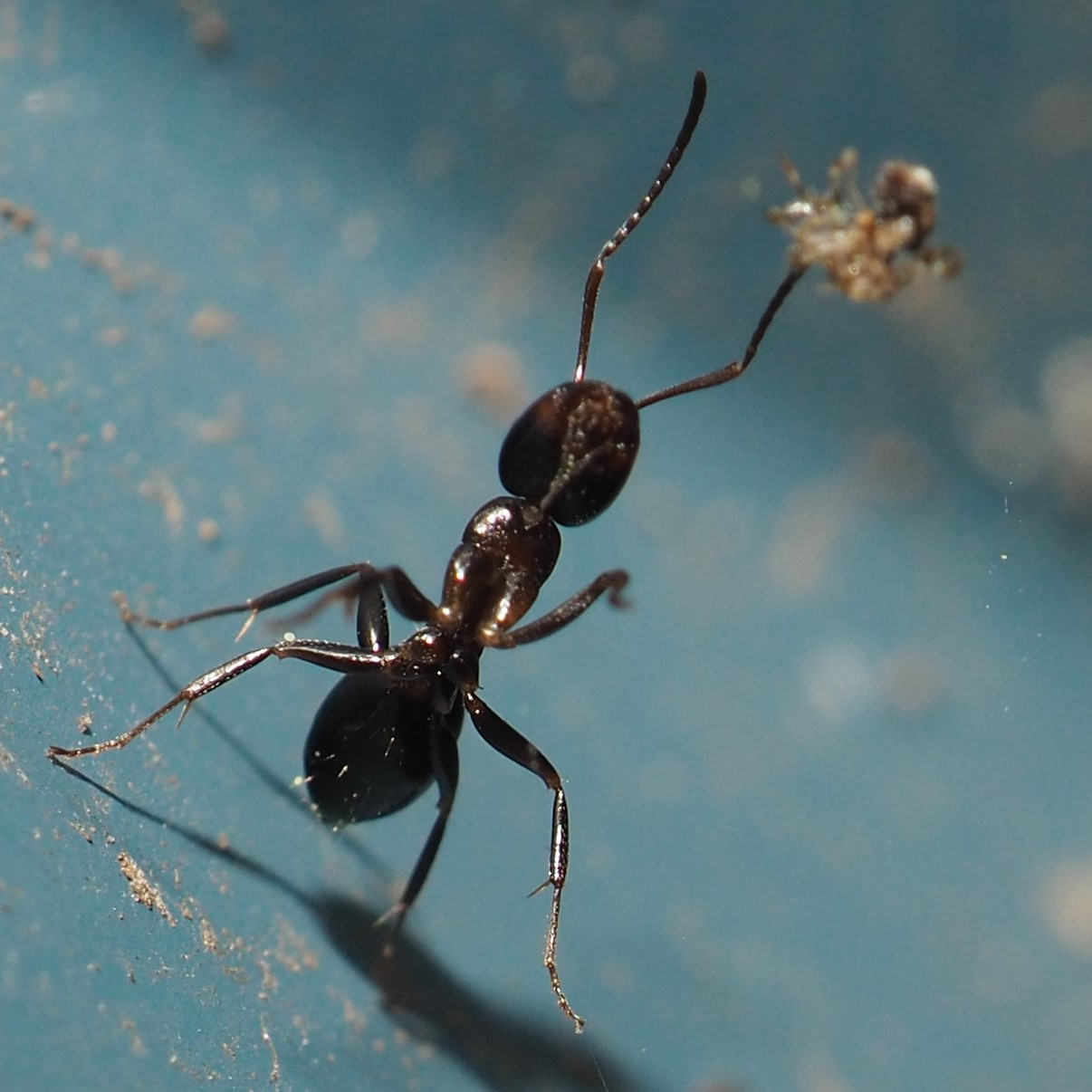

Next, a reddish Aphid in the Goldenrod. I know there is a red Goldenrod Aphid, but maybe this is another more usual kind. You can see that this Aphid has the two little black projections from its rear end (called "cornicles", unlike the Aphid we saw last week. The little white fellow is probably a Wooly Aphid. I used to grab one as it flew by and eat it. It would give you the tiniest taste of sugar. NOT RECOMMENDED! Don't do things just because I did it. I was much younger then!

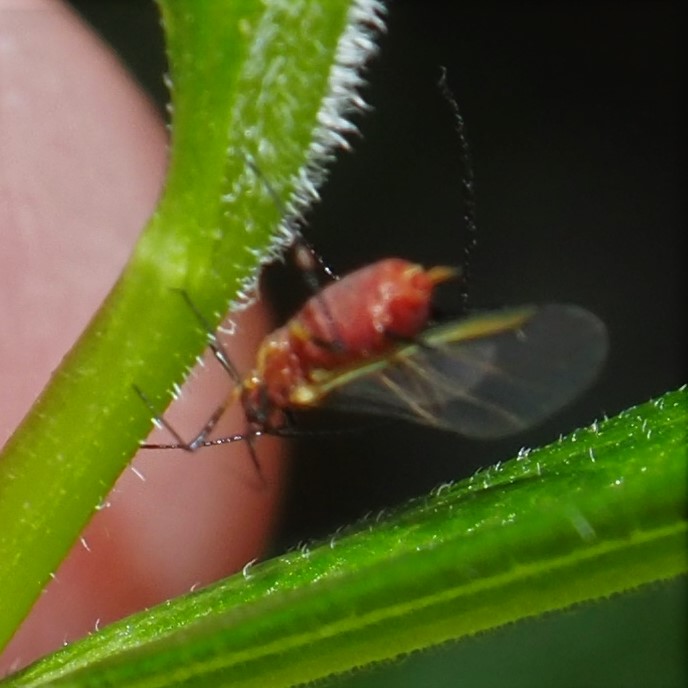
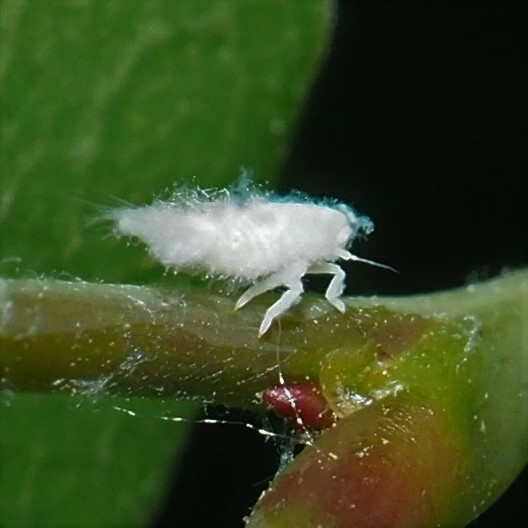
Let's see what our beloved Ectopsocus meridionalis are up to. There are so many of them with their own little egg nests but I'll only show you a few. Once some of these eggs begin to hatch, we will be able to follow their nymphs from hatching to adulthood. Second and third are adults. I mentioned this last year, but want you to remember that unlike most Barklice, E. meridionalis is parthenogenetic (doesn't need to mate with a male in order to lay eggs). That's why I never mention sex differences. I don't know what a male would look like!

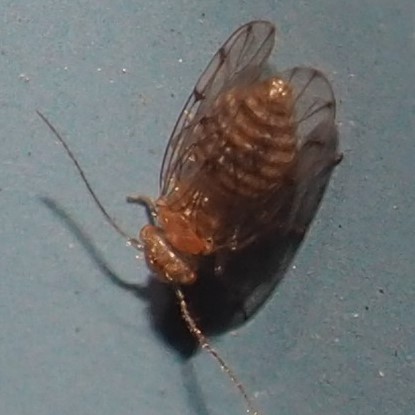
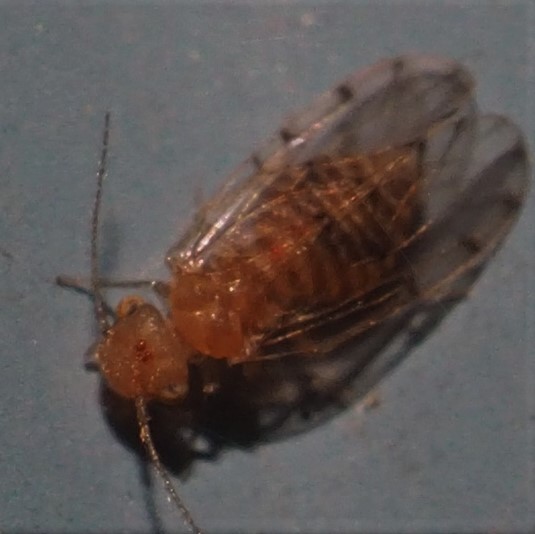
Our Polypsocus corruptus is doing well. Haven't seen any egg-laying from them yet. Here's a red-eyed female, a male with its black eyes, and another female.
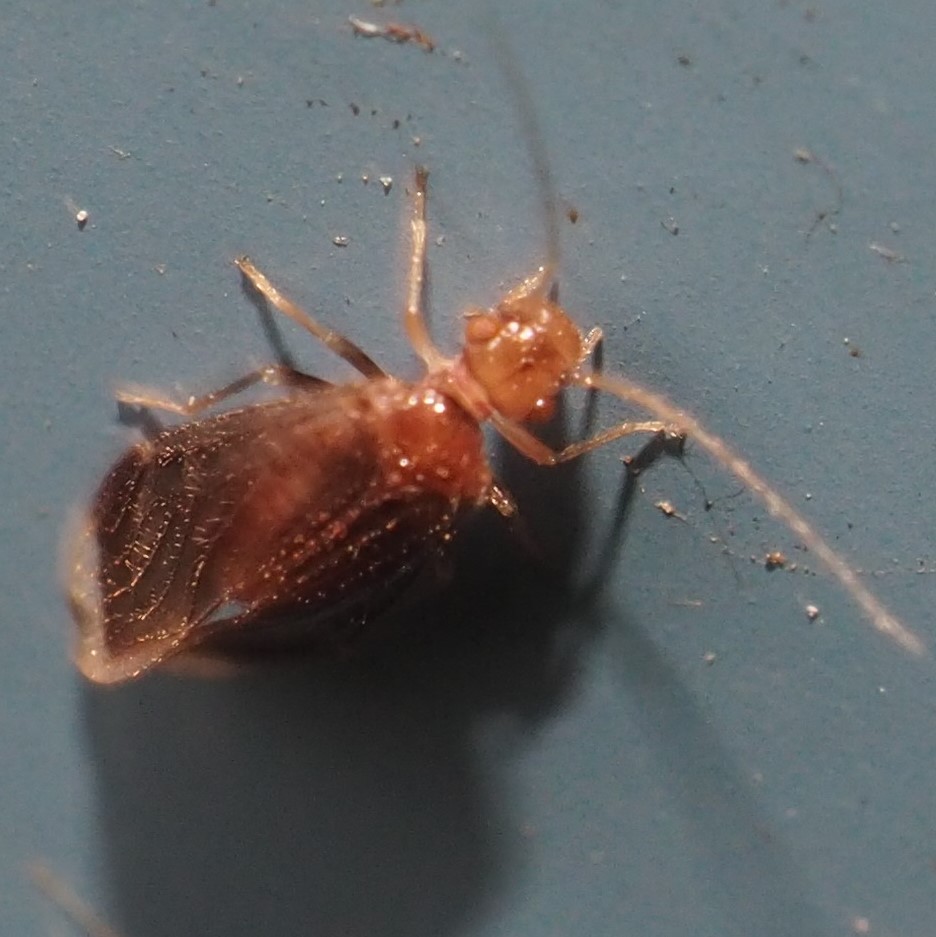
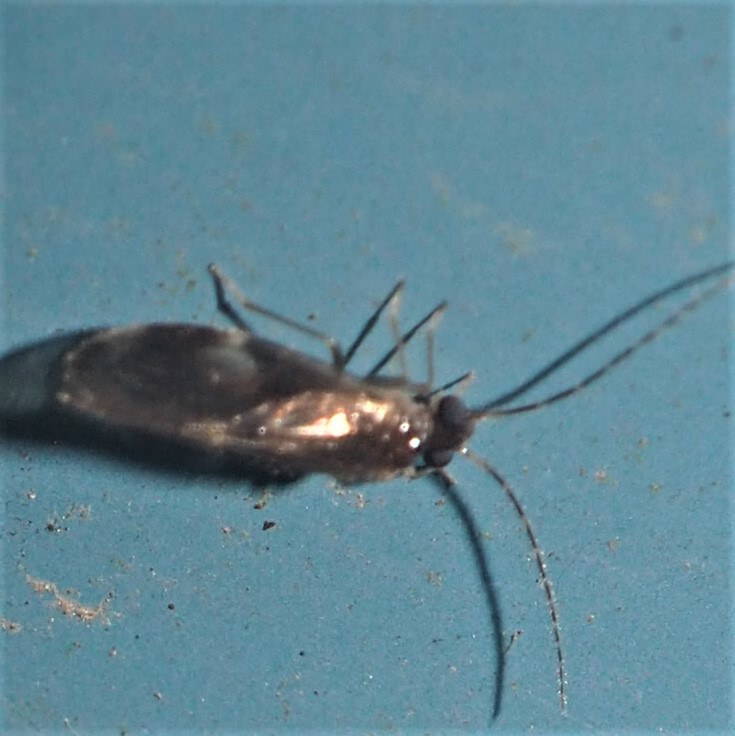
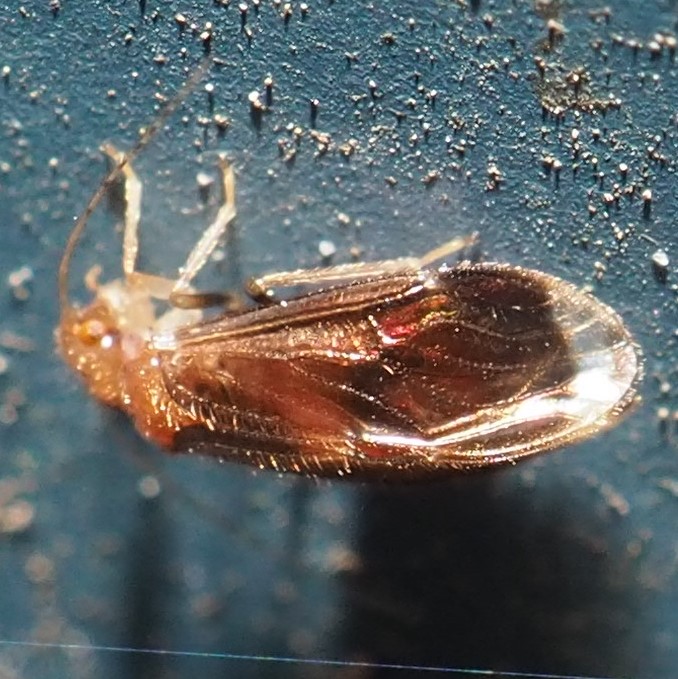 Our Metylophorus novaescotiae nymphs grow steadily more advanced, with more prominent wings, but so far no adults from this group. Picture 3 shows a little grouping of three nymphs on June 24.
Our Metylophorus novaescotiae nymphs grow steadily more advanced, with more prominent wings, but so far no adults from this group. Picture 3 shows a little grouping of three nymphs on June 24.
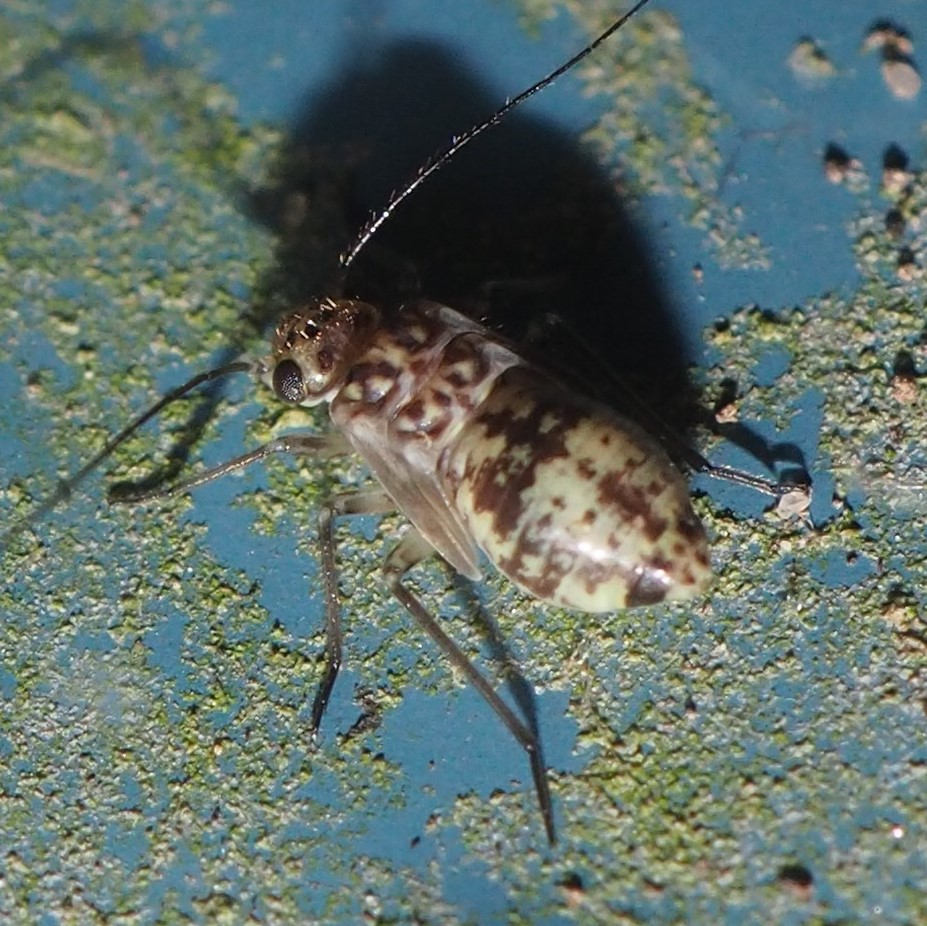

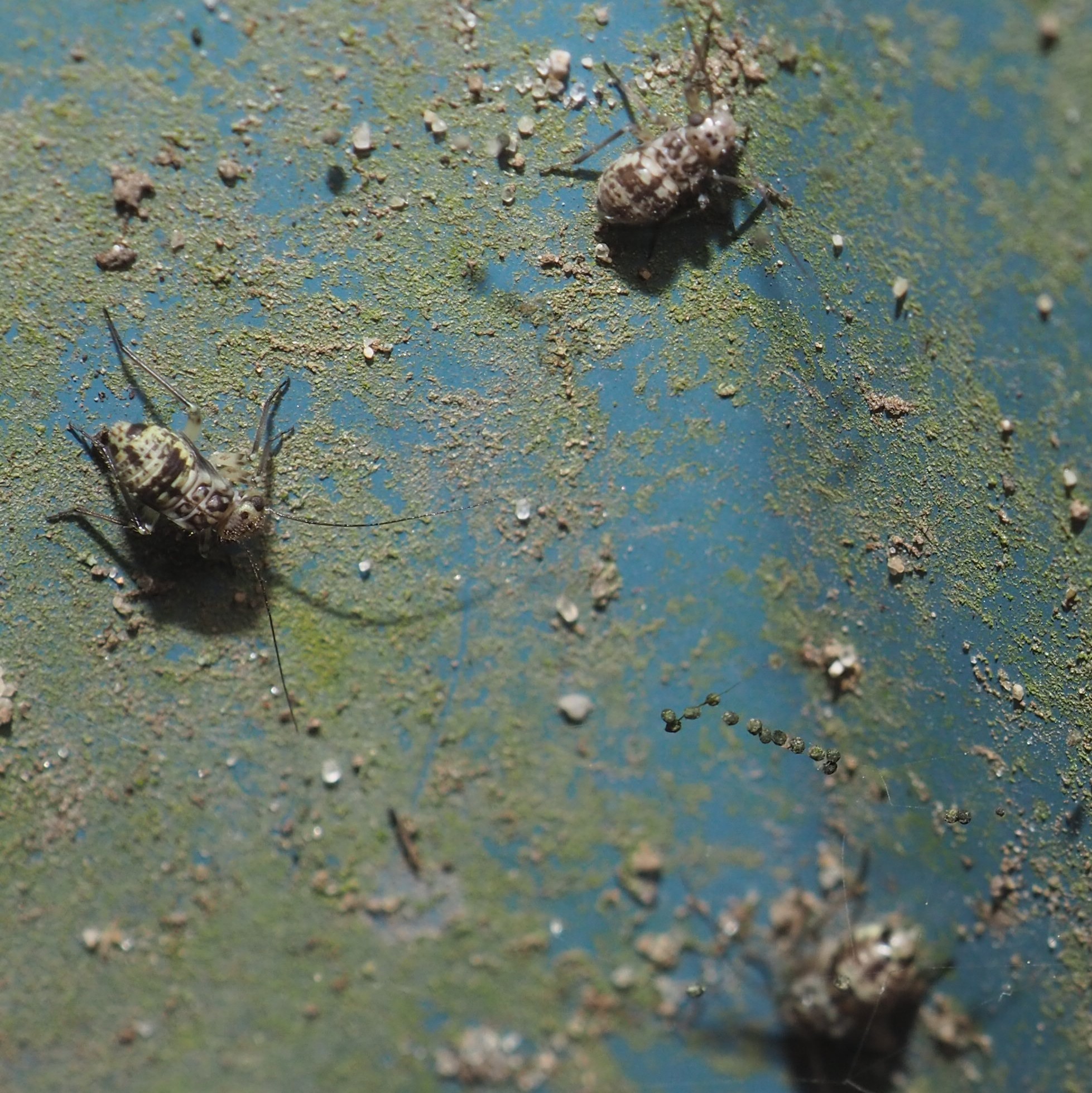
The Echmepteryx hageni nymphs (picture 1) are growing apace. I was about to say I haven't seen an adult yet this year, but as of yesterday, there is one. Third is an adult Trichadenotecnum alexanderae - I've never seen a nymph before.
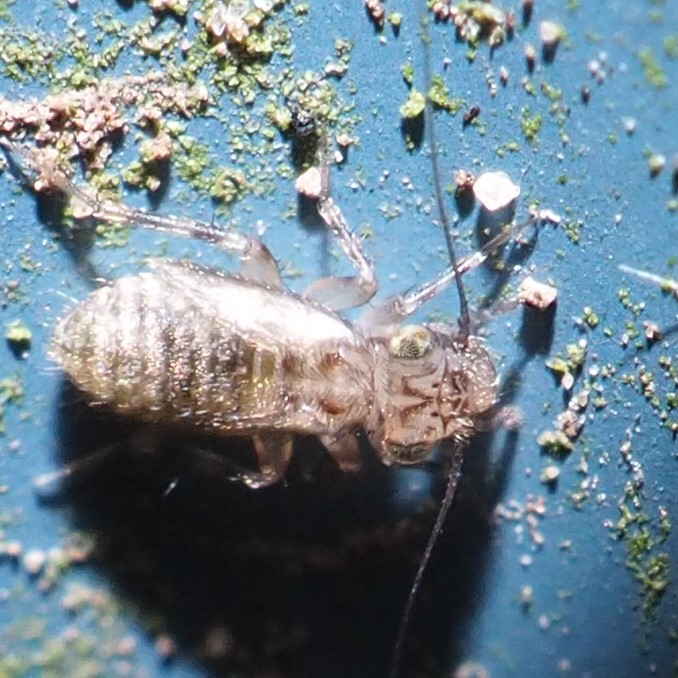
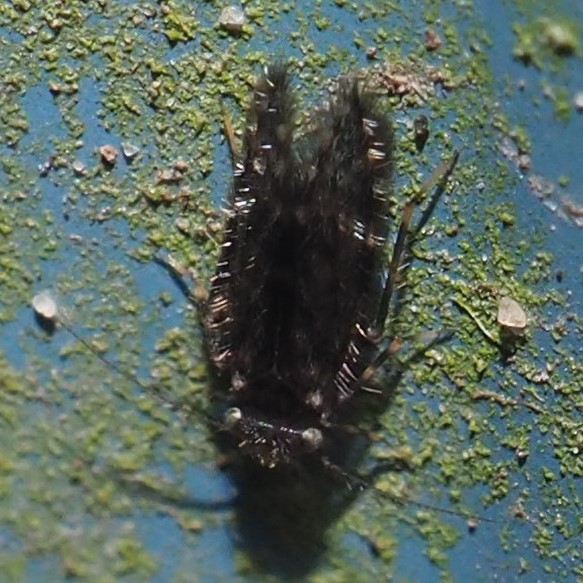
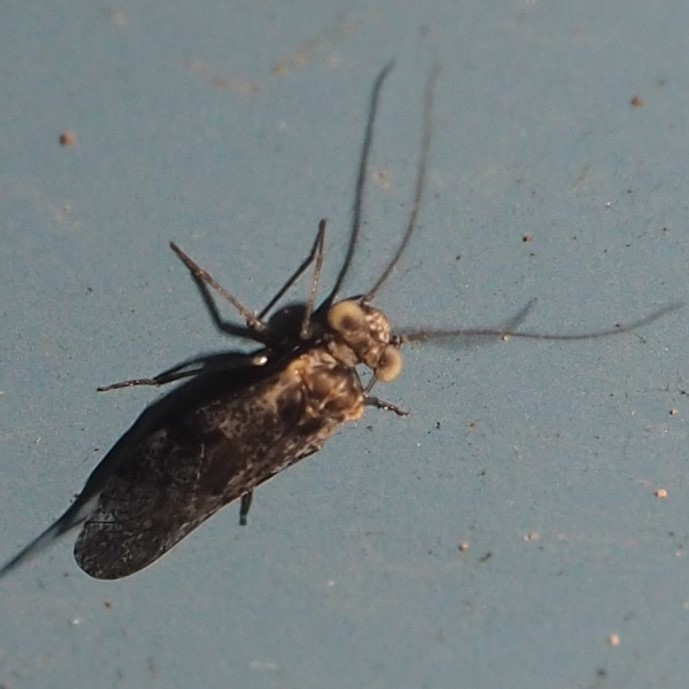
Now for the Valenzuela Barklice. I believe that this one is V. flavidus. The nymphs are almost surely Valenzuela nymphs. Although they look like Graphopsocus nymphs, there are some differences. They are bright yellow and they don't have the thoracis dots.
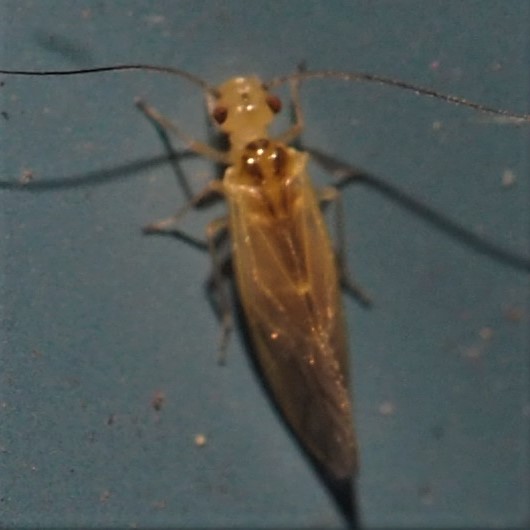
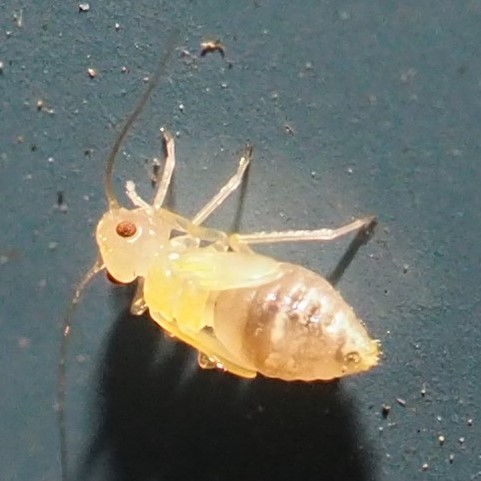
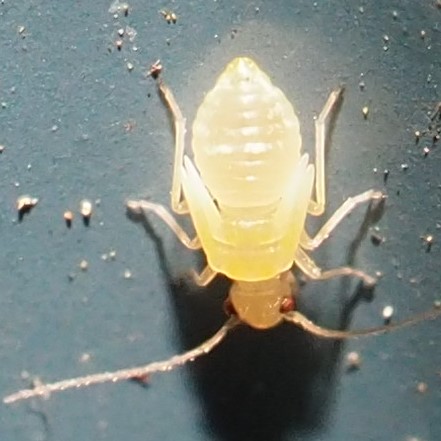
Speaking of Graphopsocus cruciatus, There are several adults (picture 1) around now. Picture 2 shows an advanced nymph, still with its thoracic spots. Compare its coloration with the V. flavidus nymph. Valenzuela also has red eyes while G. cruciatus has grey ones.

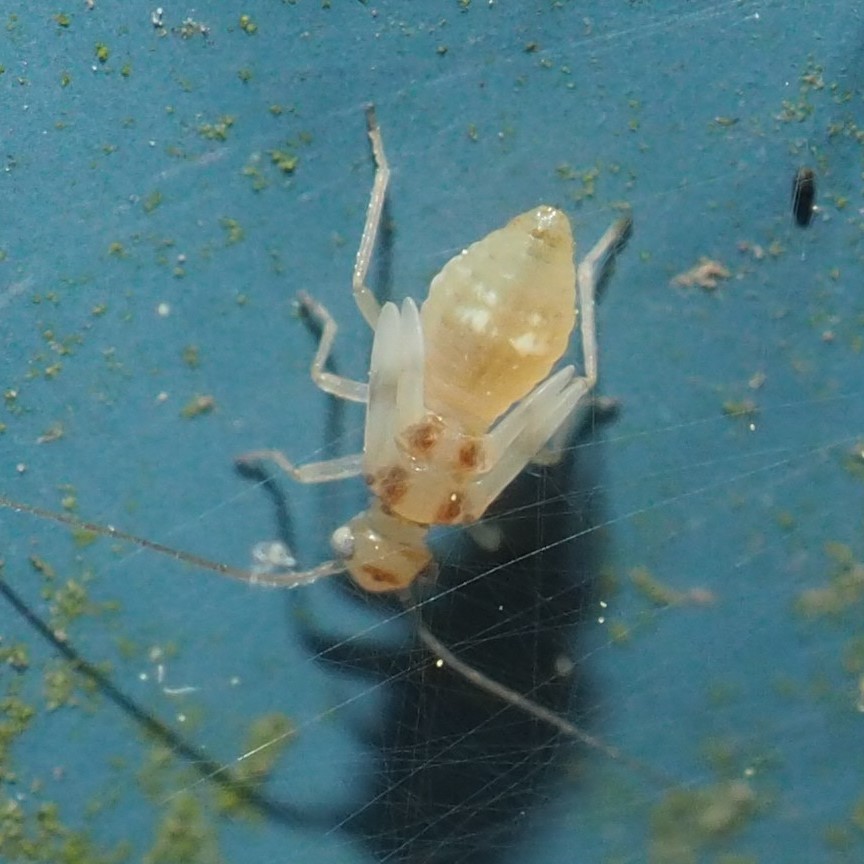
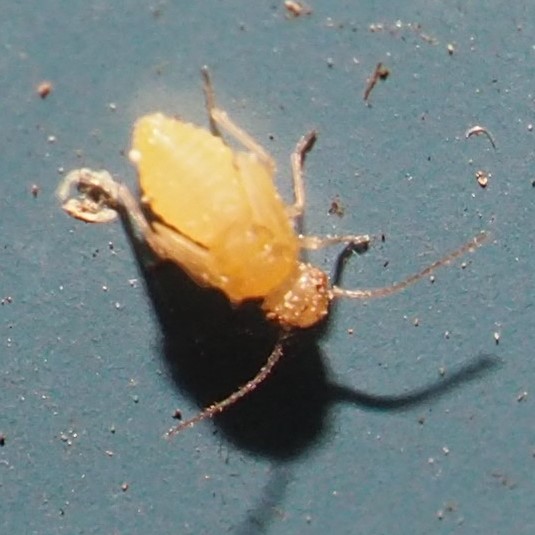
Let's move on to the Beetles. This first one is a Click Beetle. The second is the Leaf Miner Beetle, Sumitrosis inaequalis. And the third is the Margined Leatherwing Beetle.
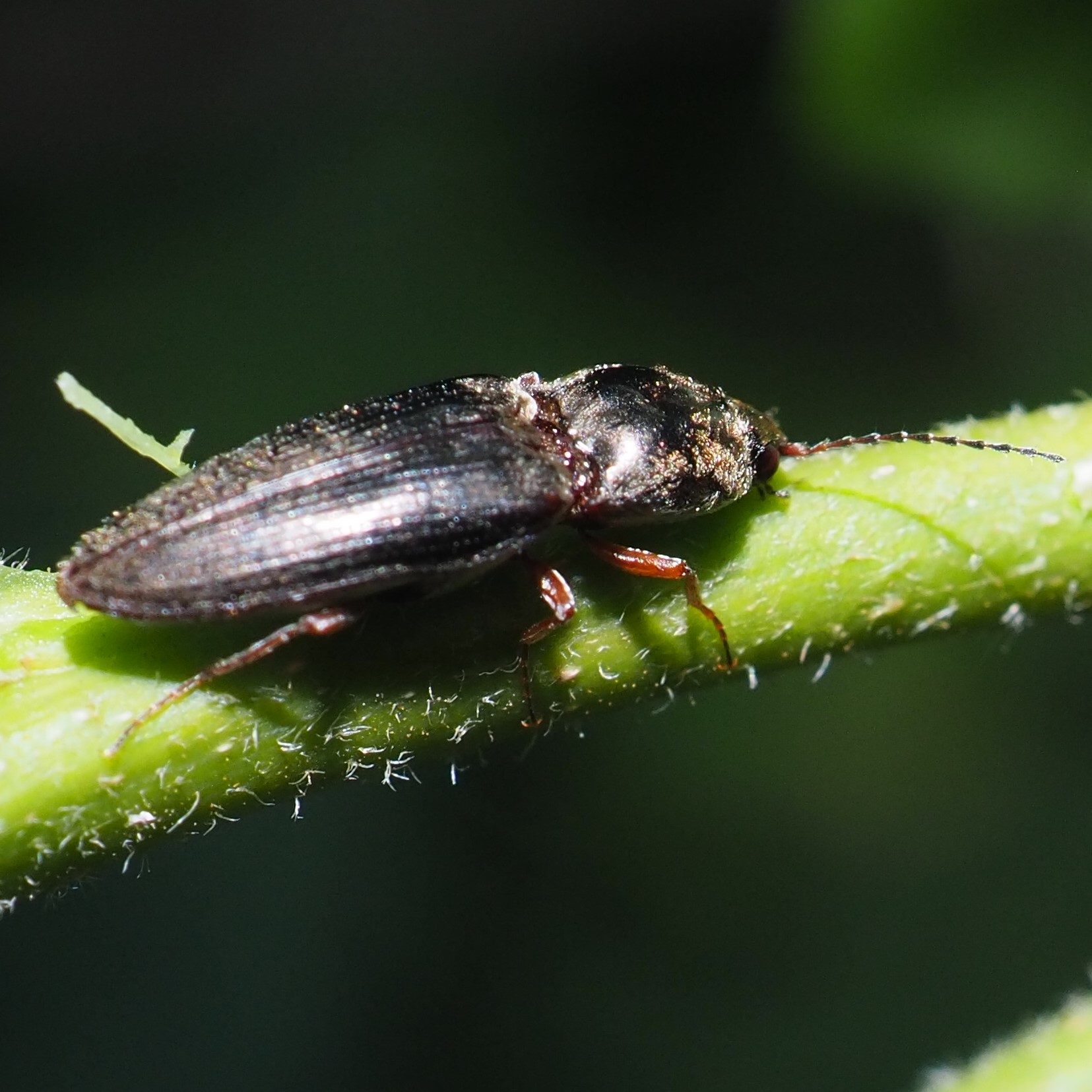

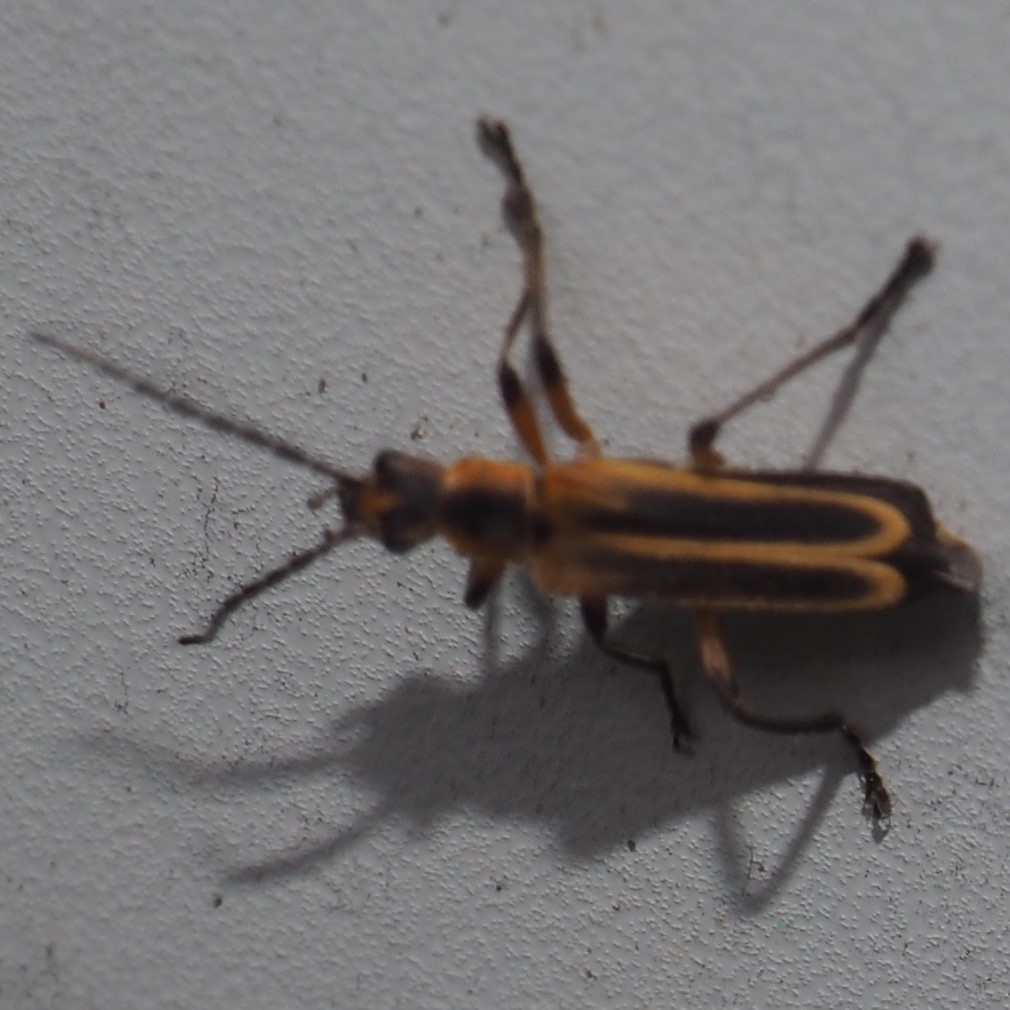
Here we have Urgleptes querci, a Flat-face Longhorn Beetle (pictures 1 and 2); and, third, a leaf Beetle in the Subfamily Eumolpinae.
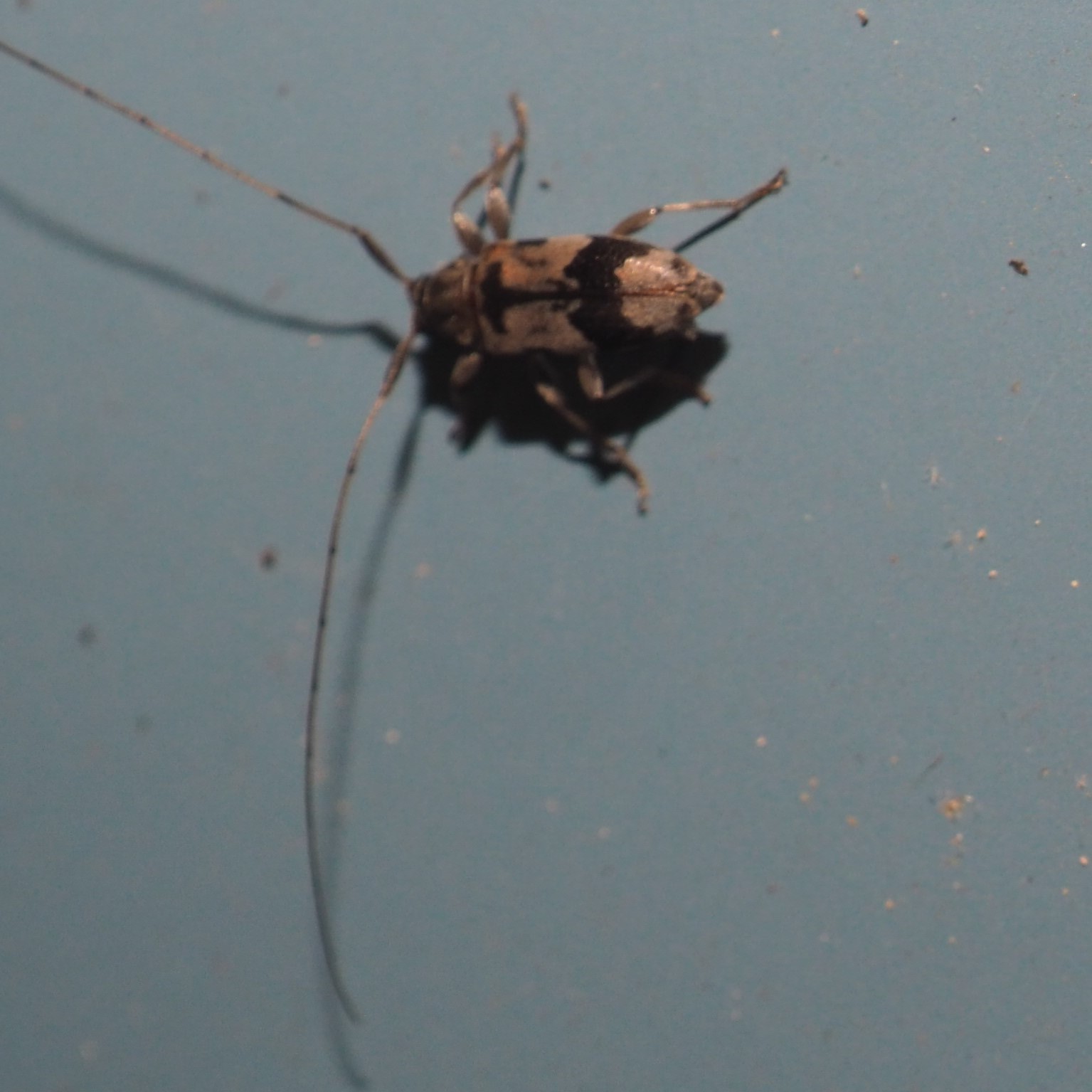
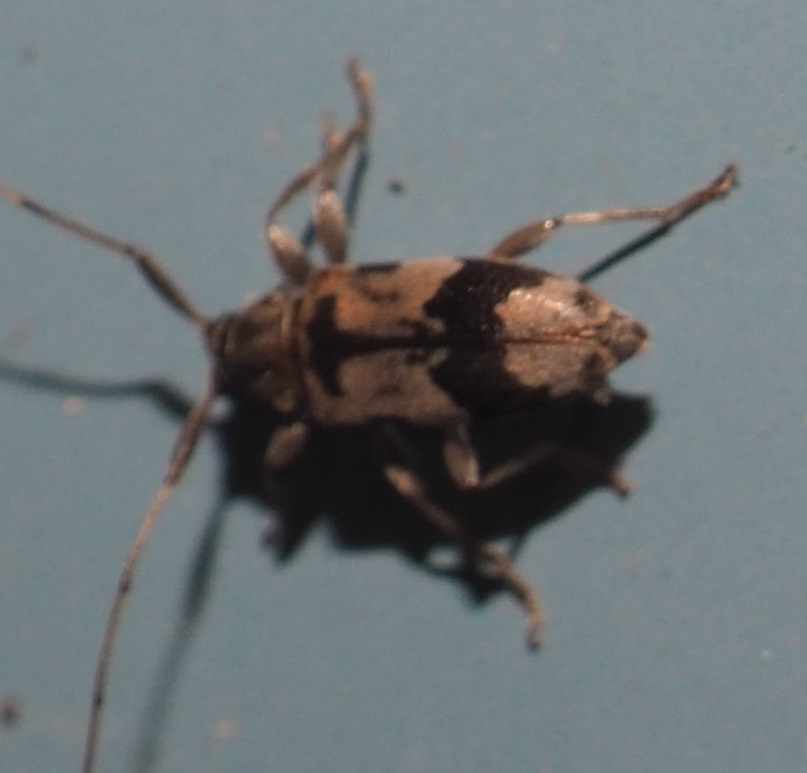
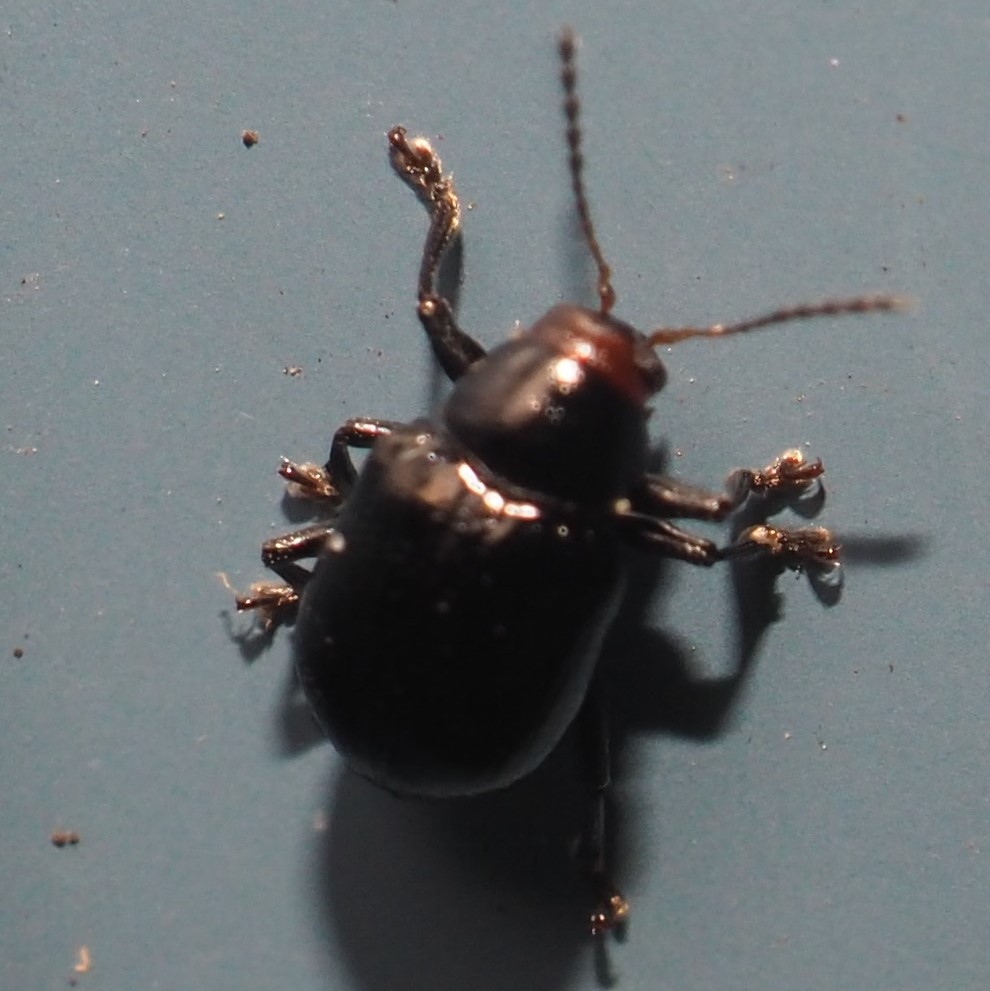
This little reddish brown Beetle is so tiny I could barely keep up with it. Next are two different Tumbling Flower Beetles.
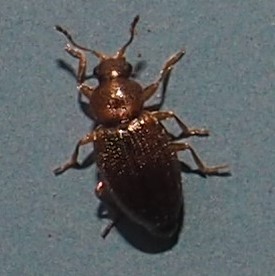
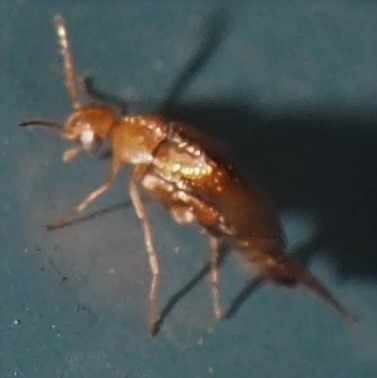
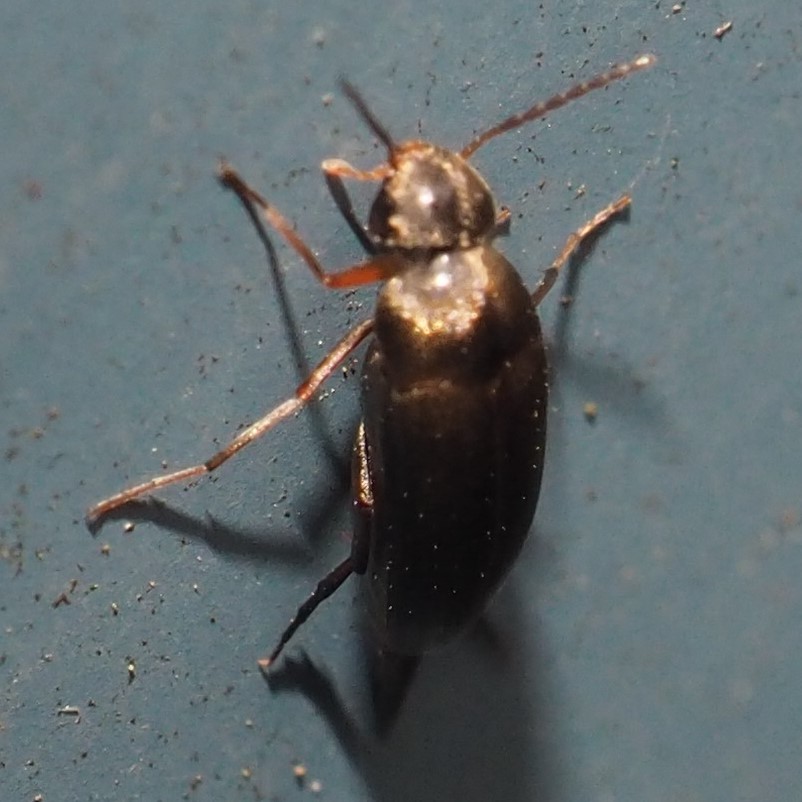
Here is the Immigrant Green Leaf Weevil, or maybe the Pale Green Weevil, I am terrible at parsing these two. Next is that Weevil that loves the Dame's Rocket, and finally a red-collared Beetle that may be the Raspberry Cane Borer. It was walking near if not on a Raspberry Cane.
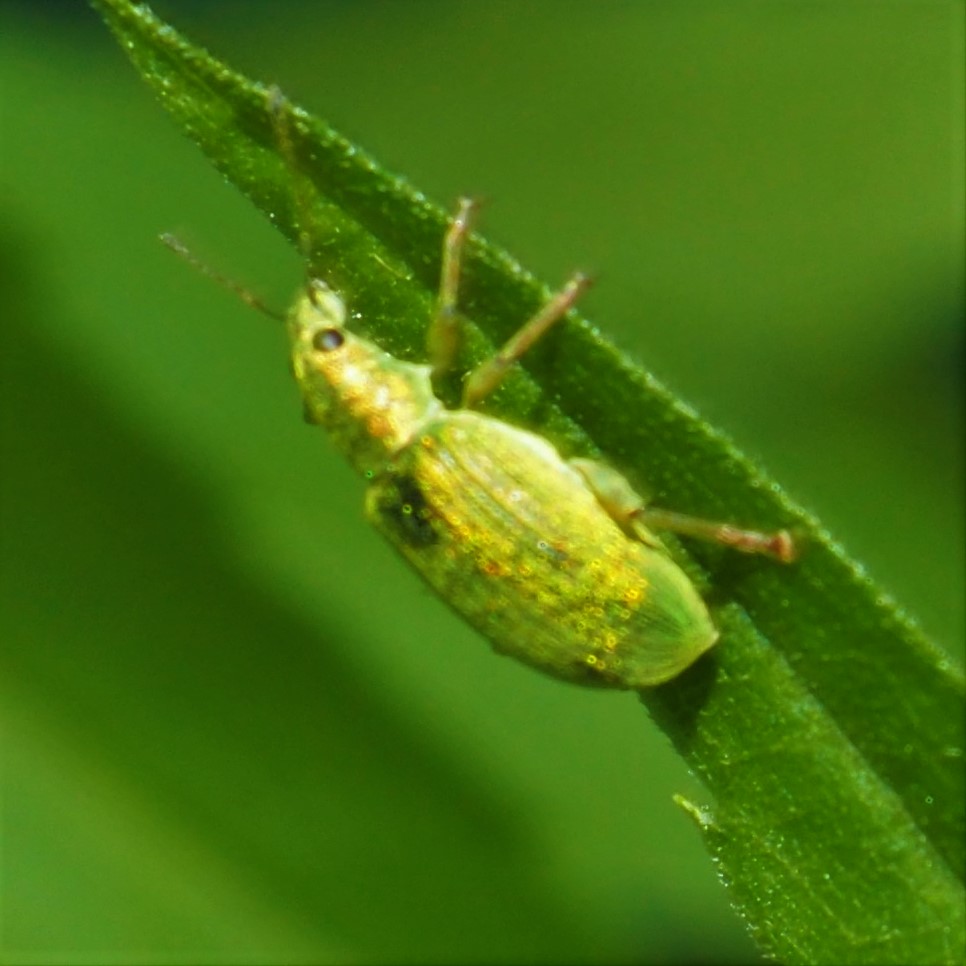
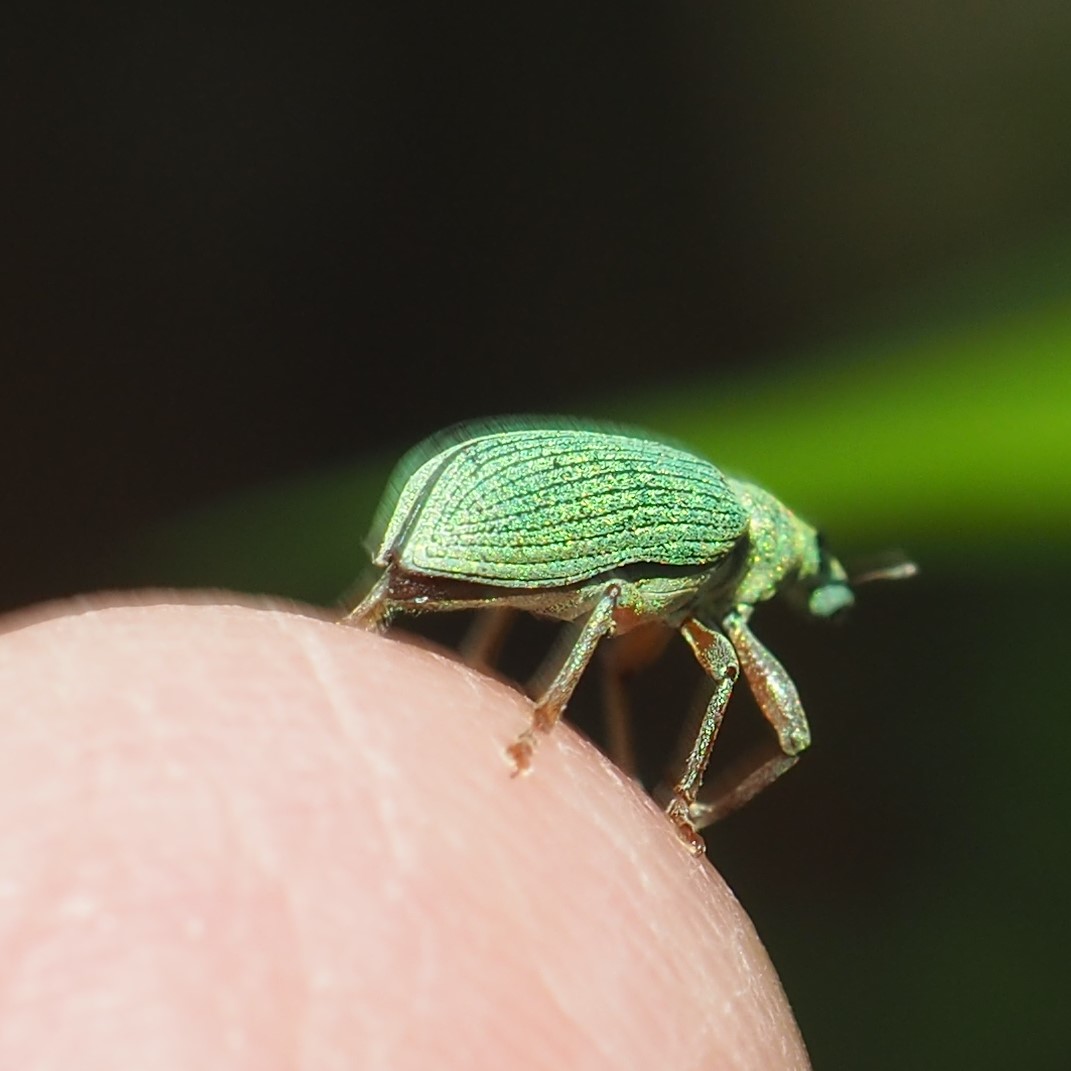
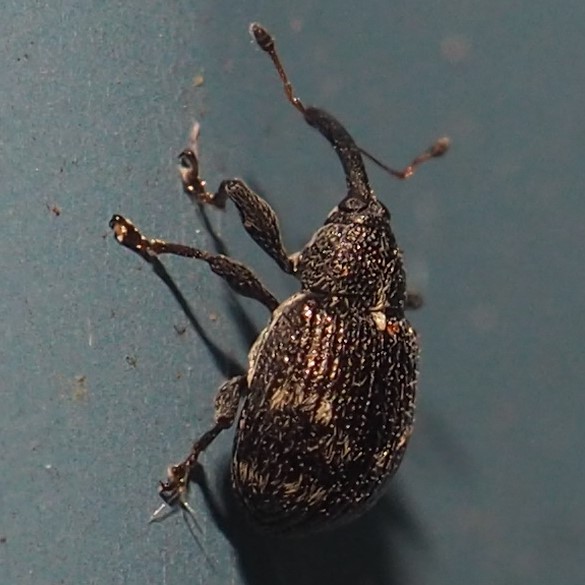
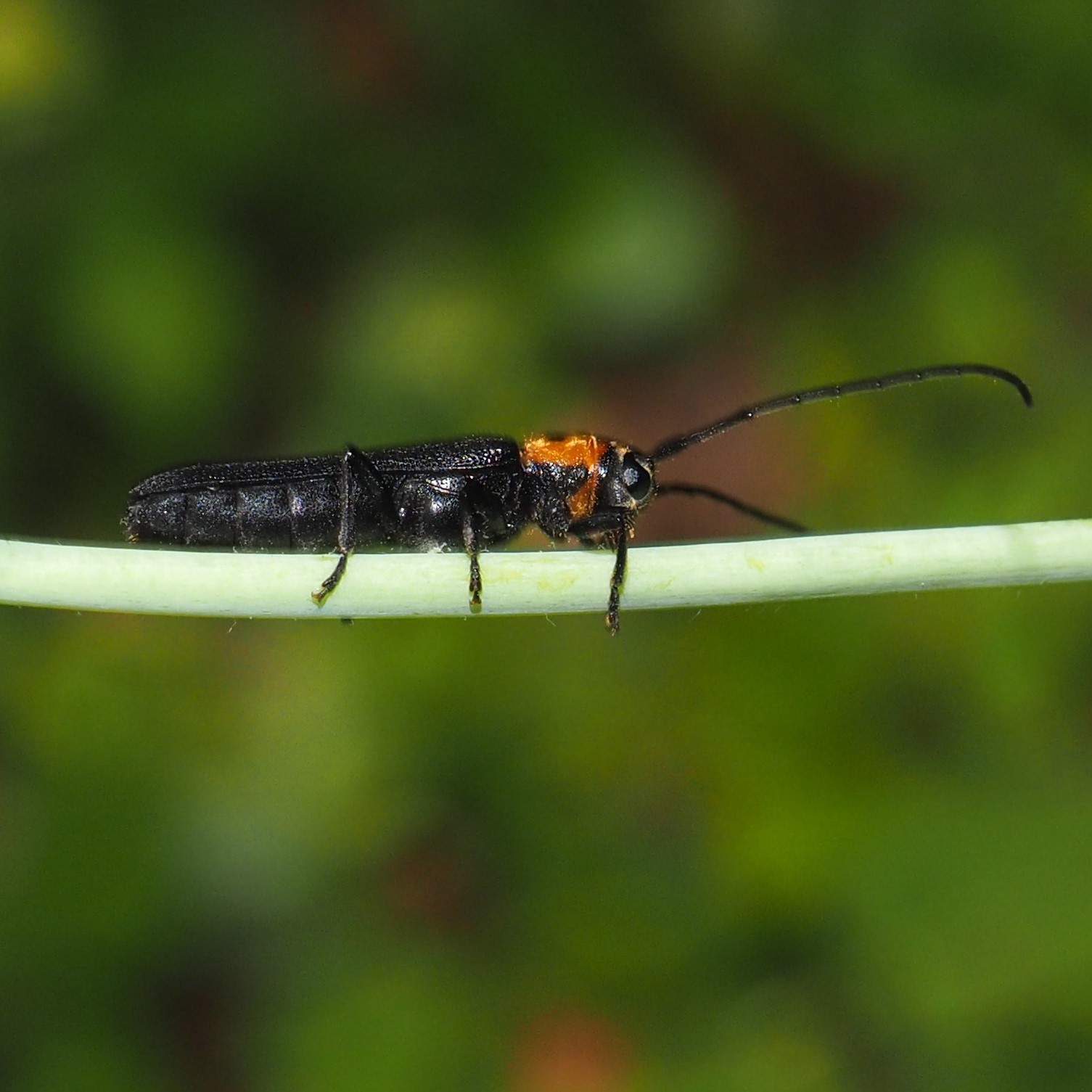
I want to make the Asian Lady Beetle our next show-and-tell exhibit. You may think it is easy to tell which Lady Beetles are the Asian Lady Beetles. Try it with these three adults. Which of them, if any is an Asian Lady Beetle? They all have different numbers of spots. Now look at their "foreheads". Start with the one in the middle. Look at its thorax (the second segment starting with the head as first). Do you see the big M design? Now imagine both the others in that orientation. They all have the "M" design on their thorax. That is the big distinguisher of an Asian Lady Beetle, so all of them are.
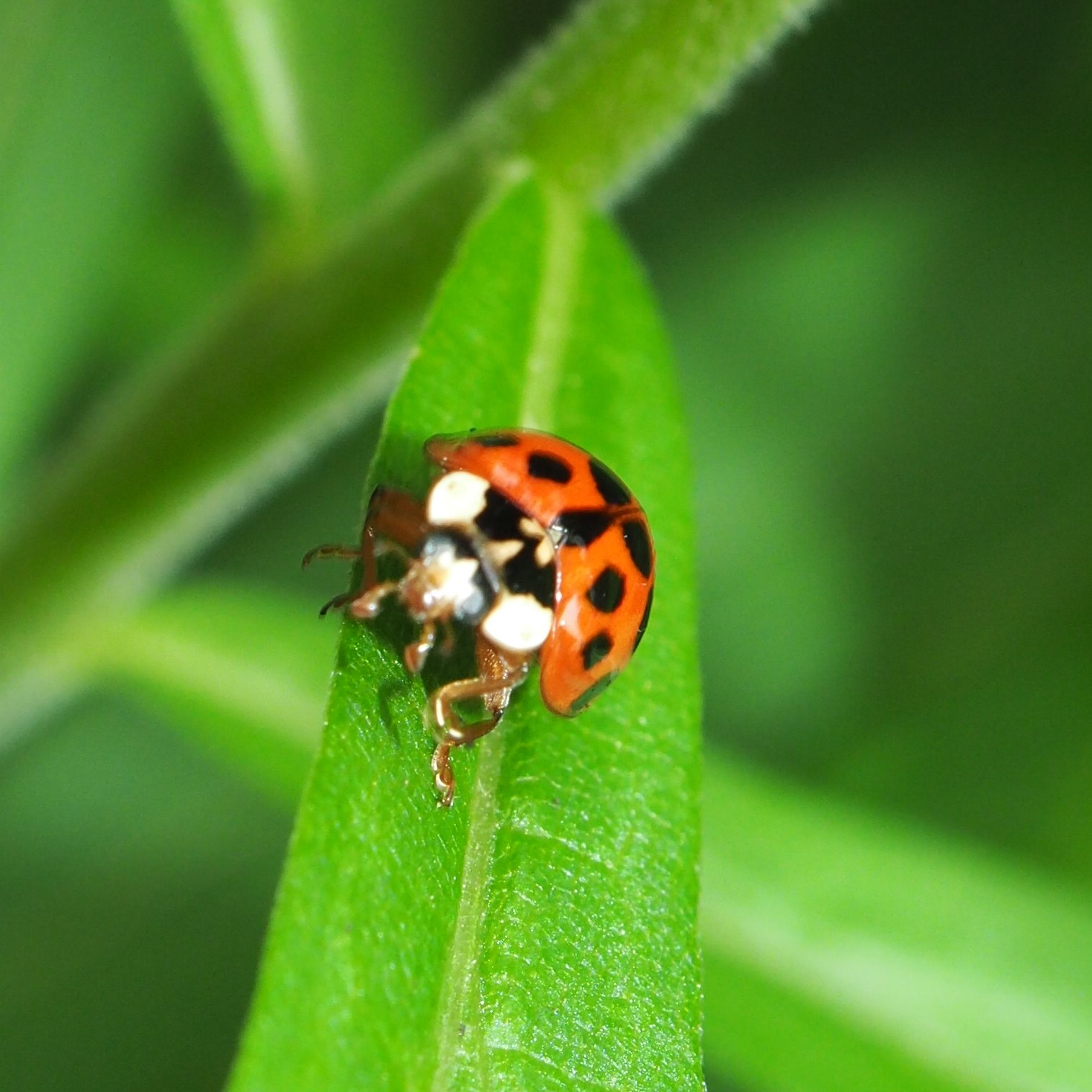

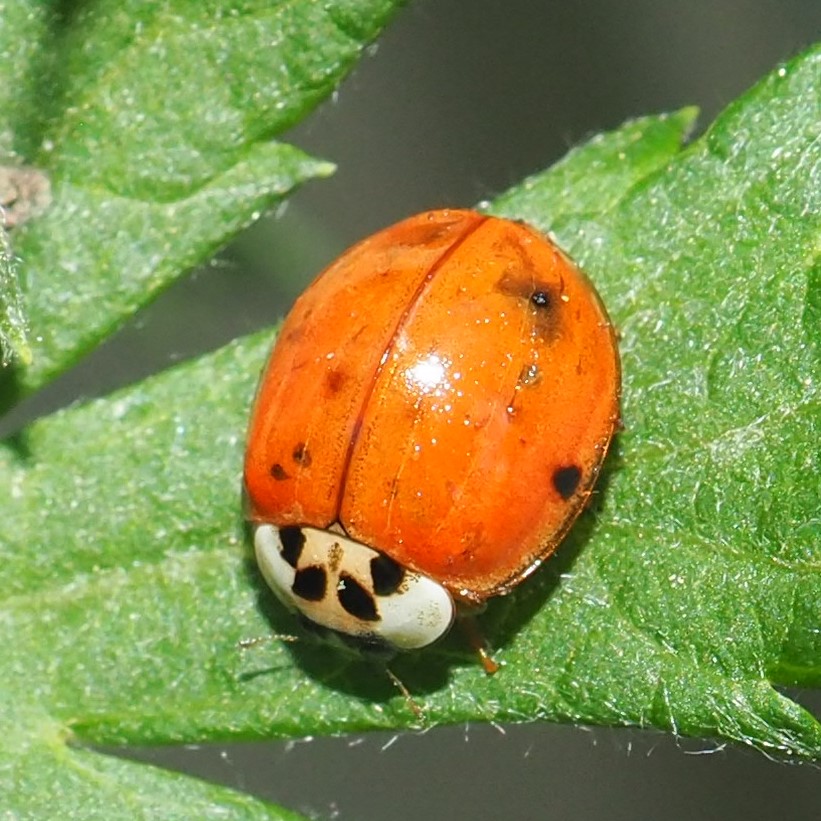
Now, examine this strange grub. And this one. The color of the special spikes may range from red to dull orange. This is the larva of the Asian Lady Beetle. And number 3 is the pupa. In a few days the pupa will lose that strange covering and out will come a lovely clean adult Asian Lady Beetle. I hope that wasn't too pedantic. I am fascinated by the way these creatures change as they move from egg to larva (or grub in the case of a beetle, or caterpillar in the case of a butterfly or moth).
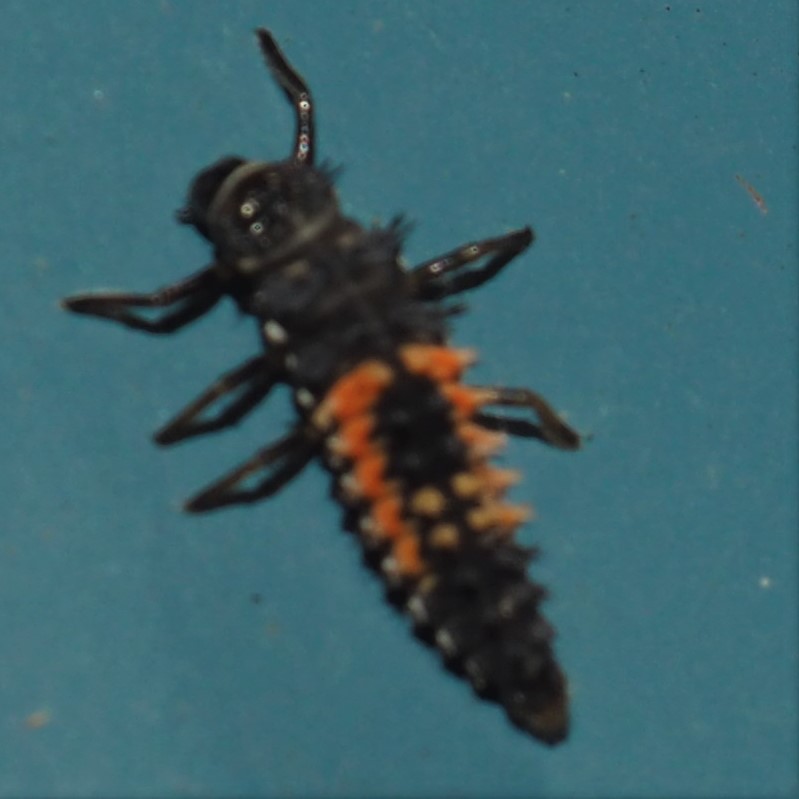
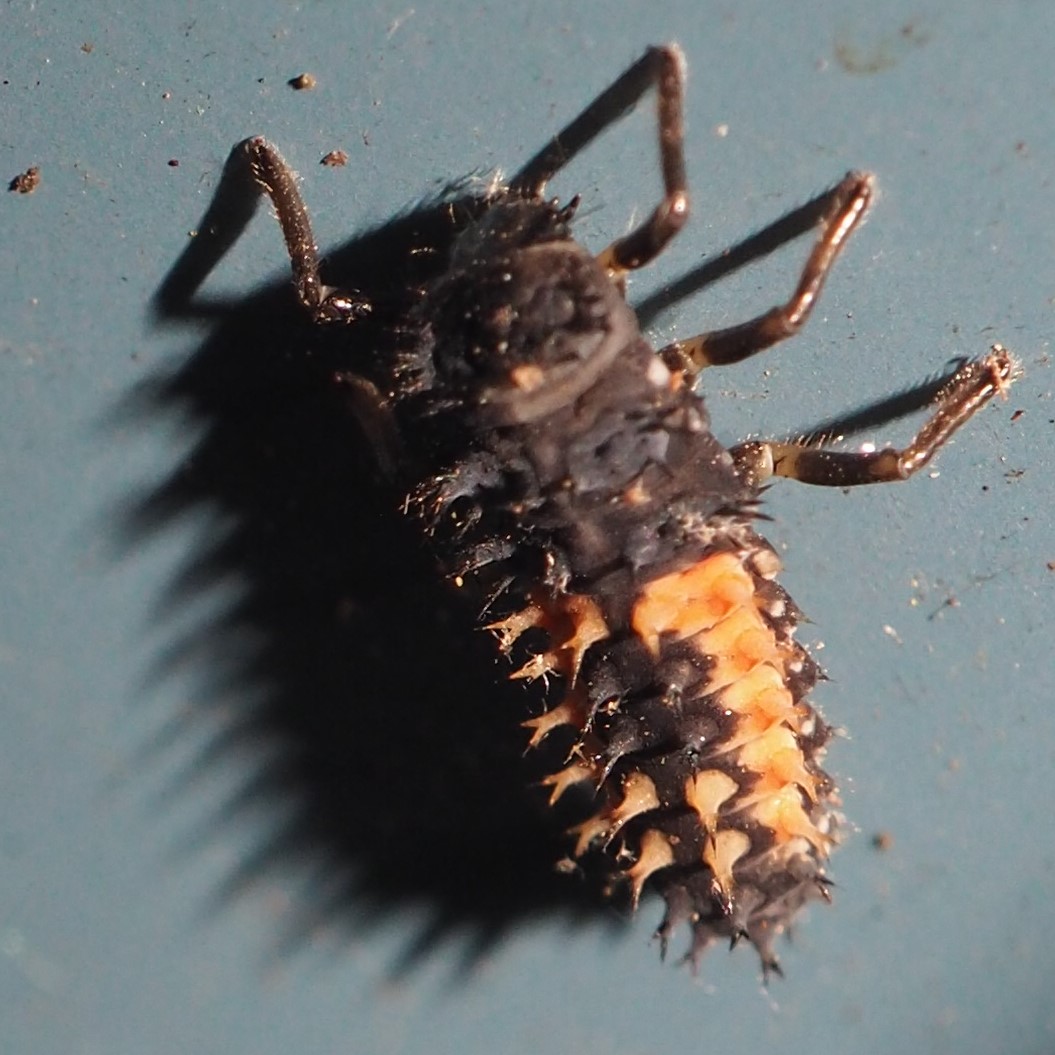
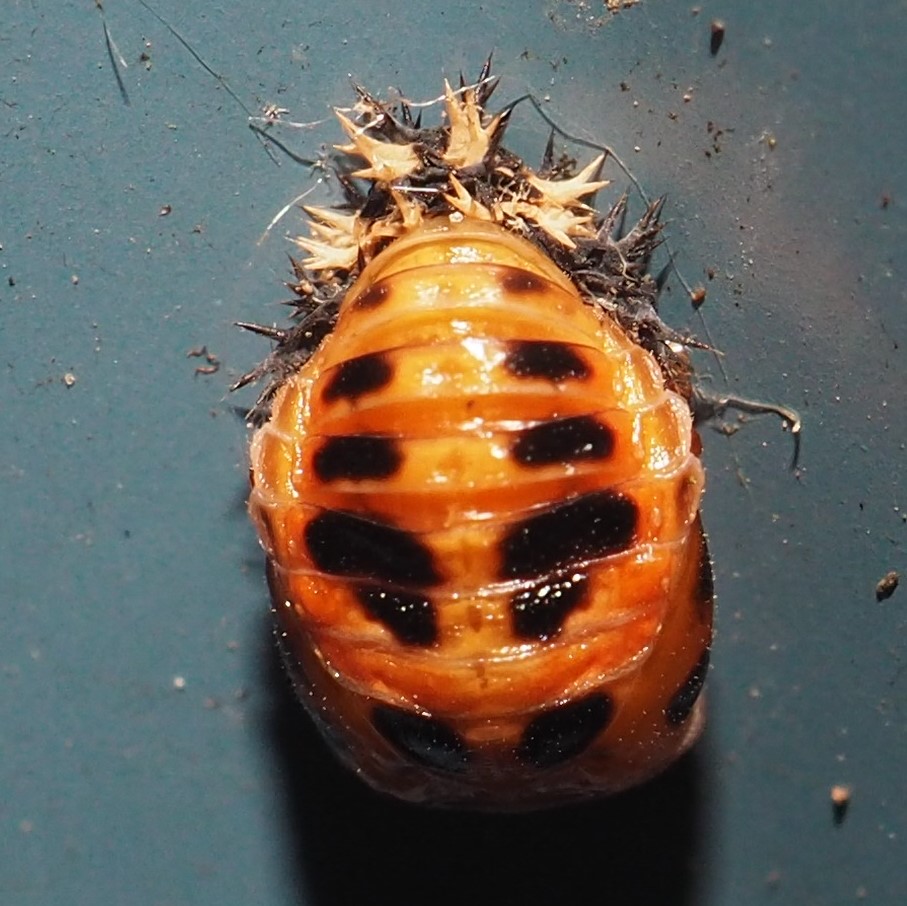
Now we are into the Bugs. I always like to start out with "A" for Assassin Bug. Until this morning I hadn't seen one, but this morning after the rain, there was this adult on the Goldenrod beside the shop.
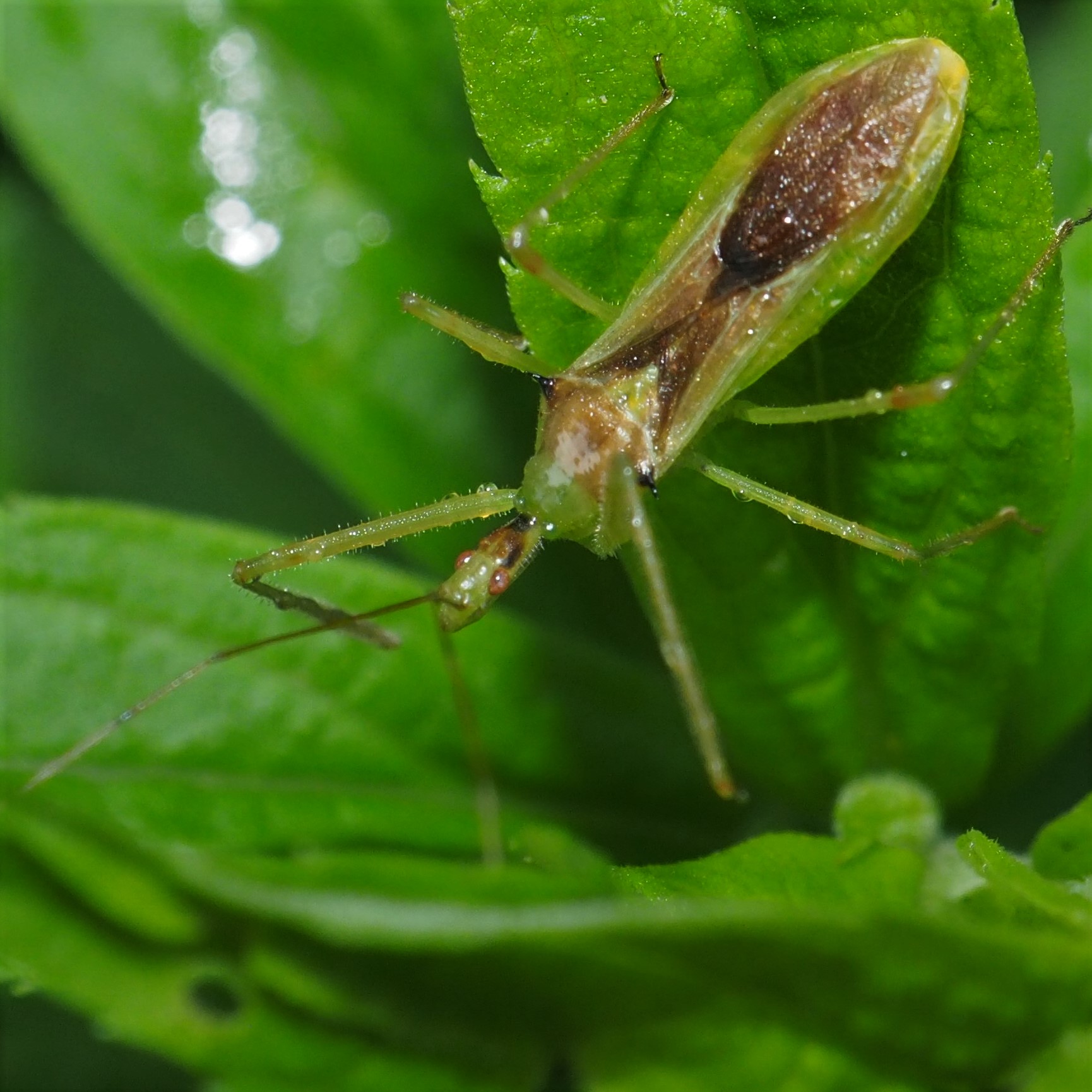
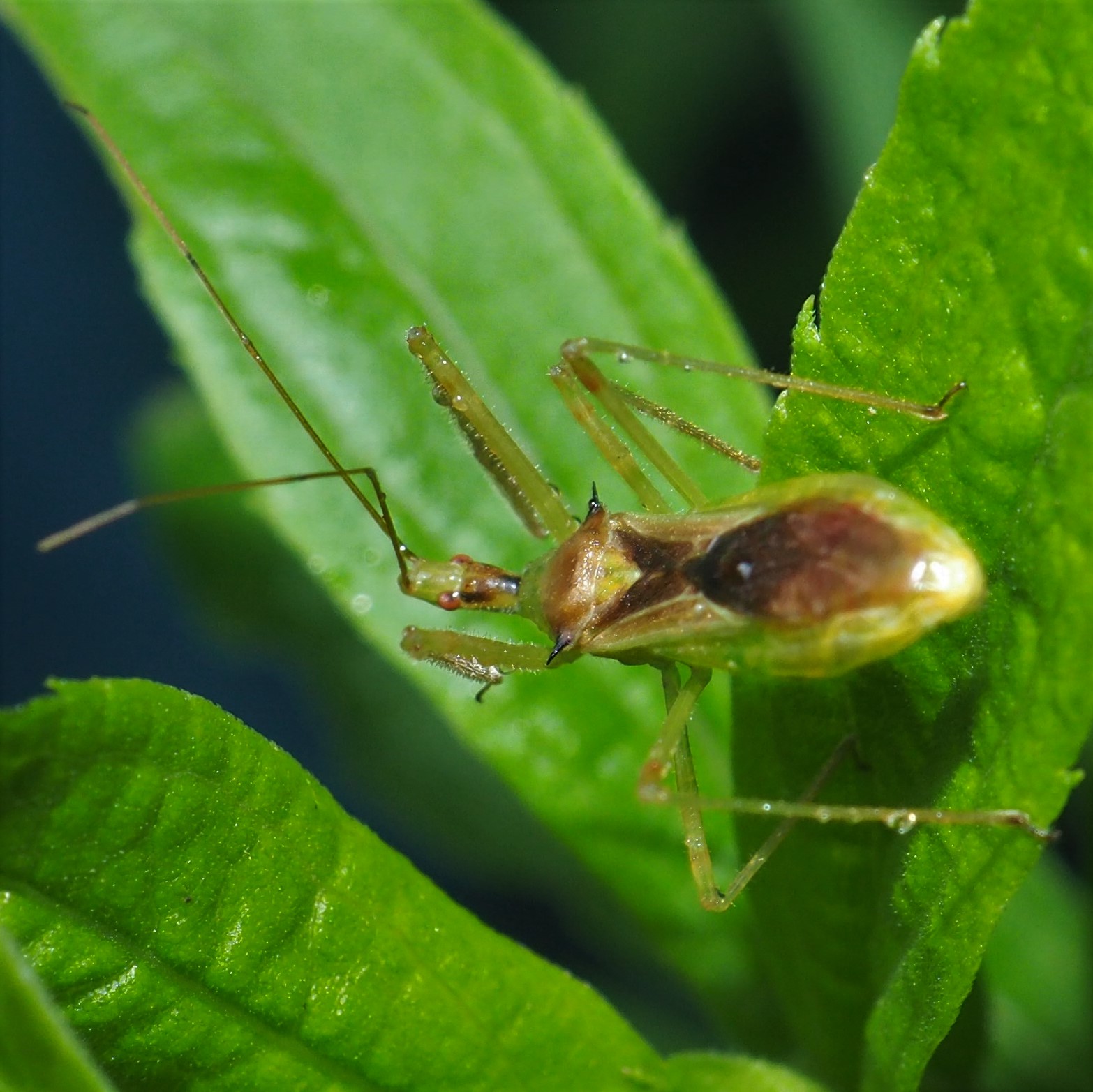
So let's do the Leafhoppers, my next favorites. (Note: Bugs, unlike Beetles, go through a few phases called "instars" to get from egg to adult. Whereas a Beetle goes egg, larva, pupa, adult, a Bug will go egg, first instar, second instar, etc up to fifth instar... (Maybe some go through more or fewer instars). The Leafhoppers do this too since they are Bugs. And, like the Beetles, the instars may or more not go through wild changes. Last week we looked at the Japanese Maple Leafhopper and saw one of its instars. It doesn't change a lot from one instar to the next but it is hard to recognize the adult from any of the instars. Let's do a few examples. Here we have the nymph of the Japanese Maple Leafhopper, followed by its adult. Next, an instar of the Japanese Leafhopper, and the adult. The tail of the Japanese Maple nymph is turned up like another nymph we have talked about but that nymph is usually in shades of red and brown.
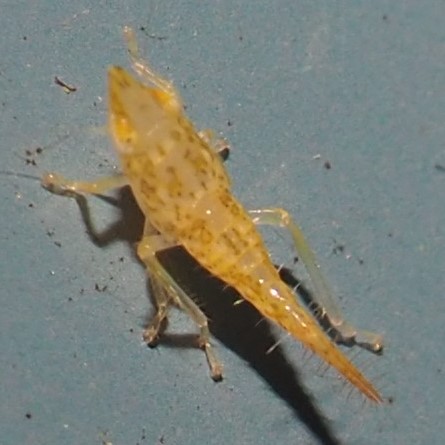

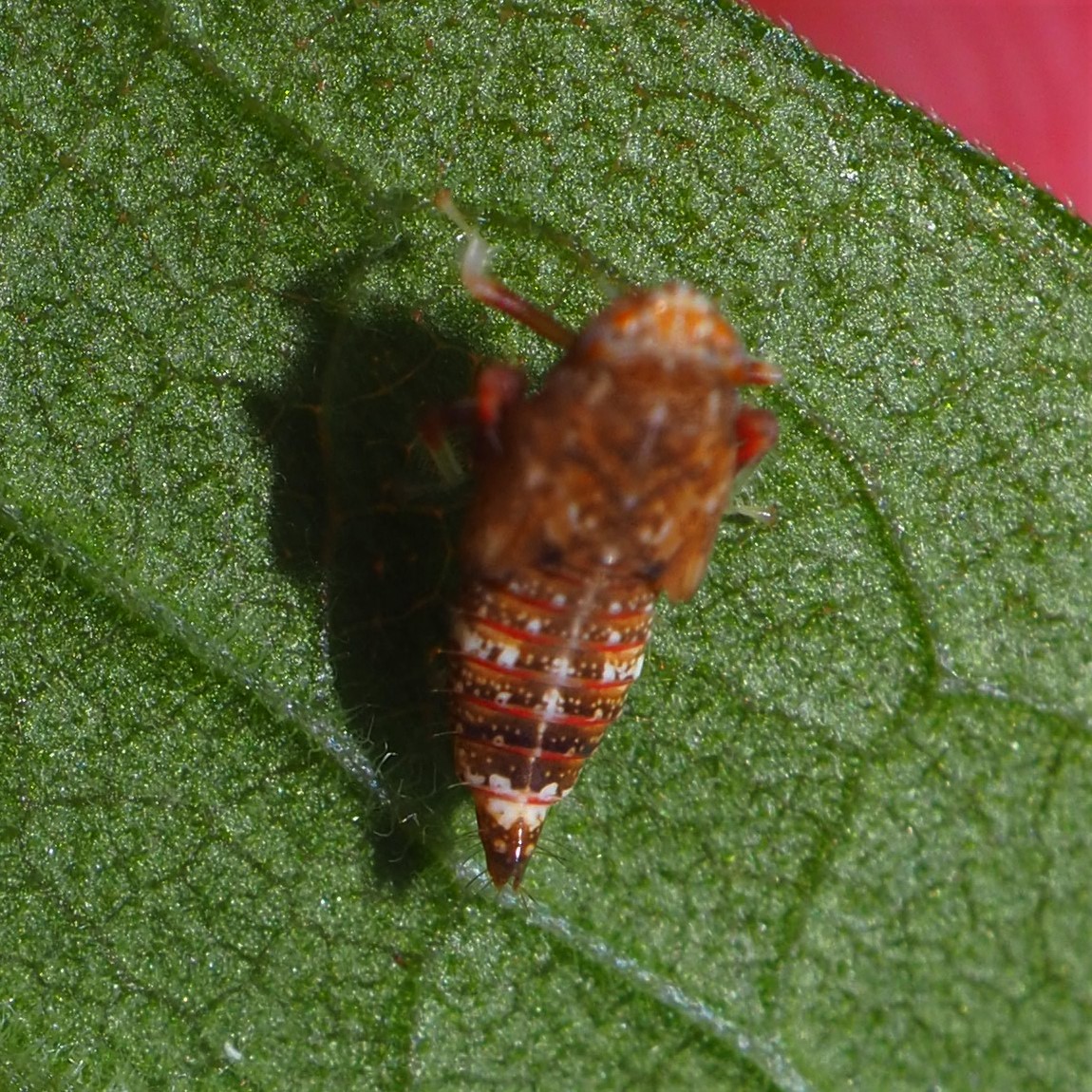
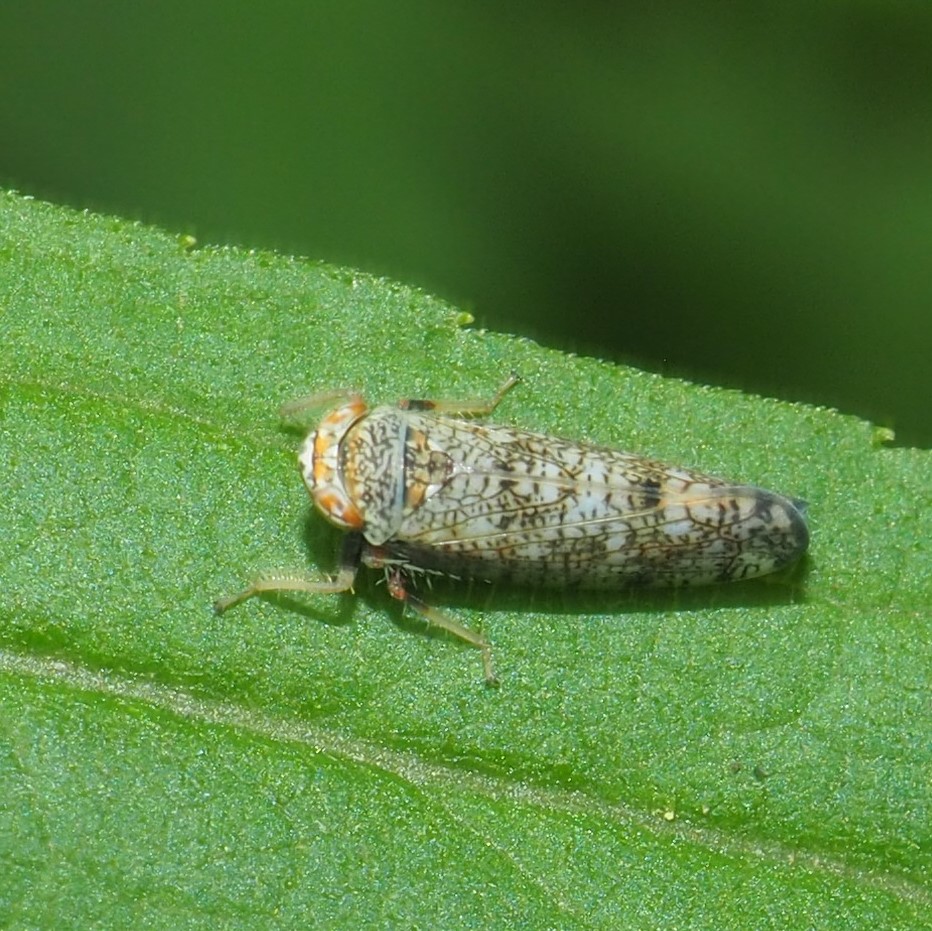
Saturday morning after the rain, I found this minute nymph of the Coppery Leafhopper, the little fellow that has the most retroussee tail. So far no adults of this species, but we had some other interesting Leafhopper adults this week. Number 2 here is Scaphoideus carinatus. Third is another member of the same genus, S. pullus. I was tickled when Kyle Kittelberger ID'd this one as S. pullus since there was a shakeup of that species last year and some others that we all thought were that for sure now have been shown not to be. So I'm glad to have seen the real thing.
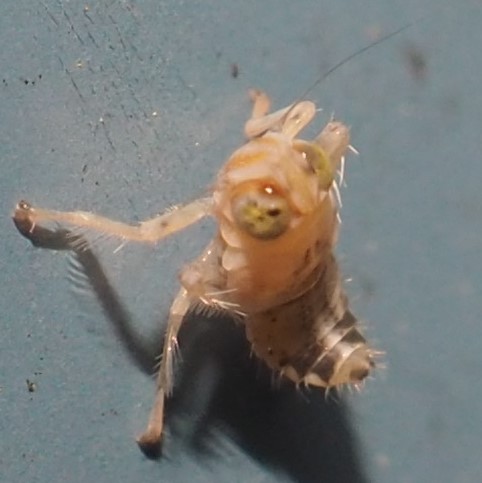
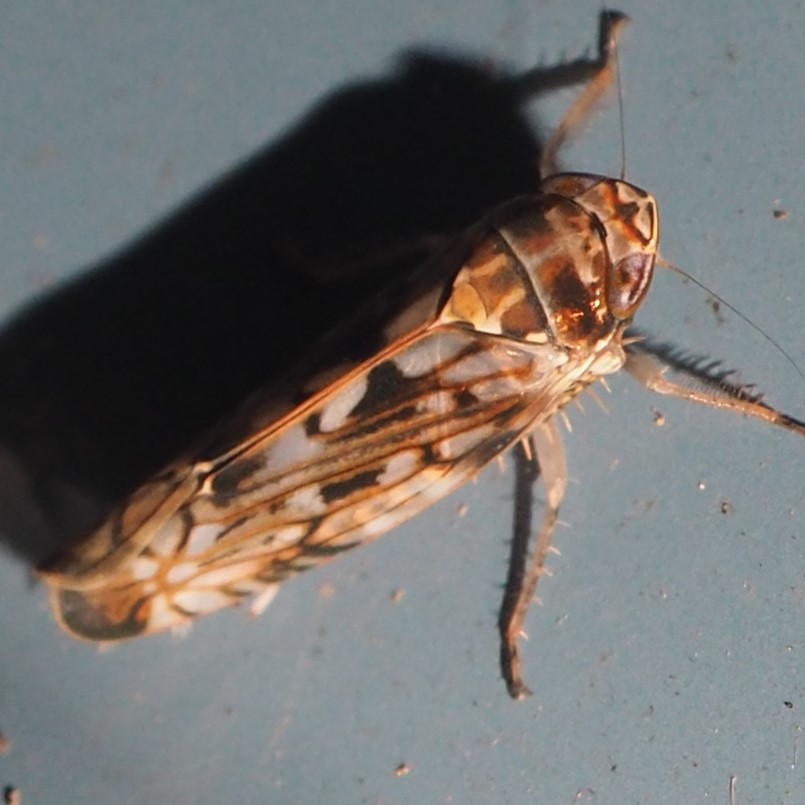

First here is Erasmoneura vulnerata, and next I believe is a yellow variant of genus Eratoneura. Next is one more kind of Leafhopper, genus Graphocephala. These are most people's favorites because of the glorious colors, in this case red and blue. Some come in shades of blue and green (yum). Now look for a moment at number 4. I had thought it was a Leafhopper, but look - its legs do NOT have little prongs on them for leaping.
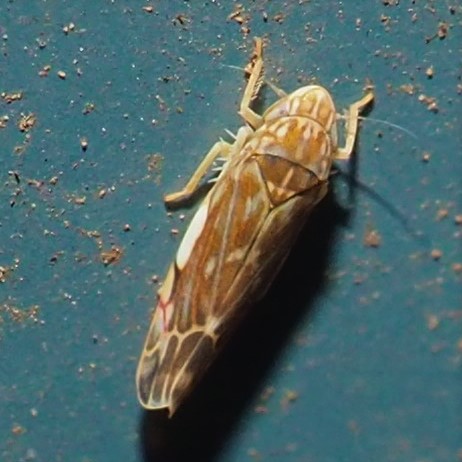
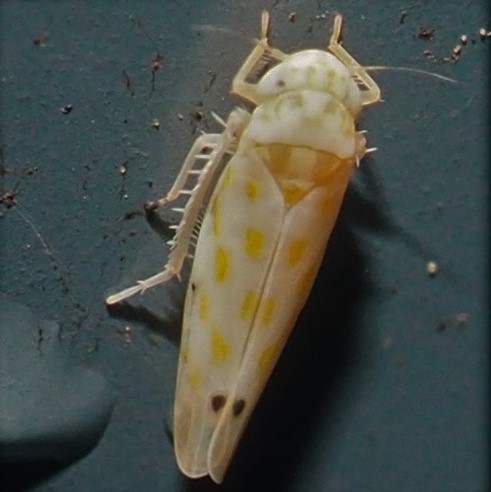
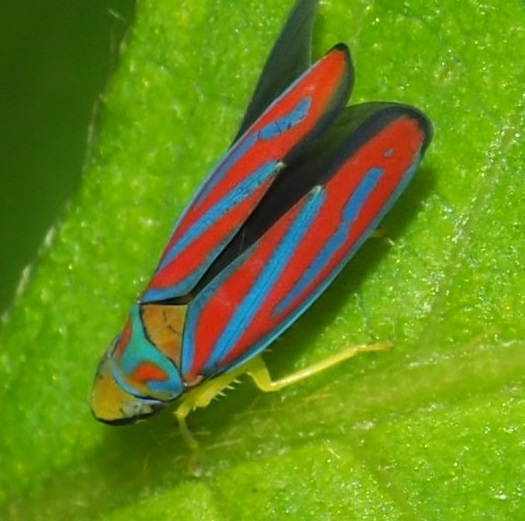
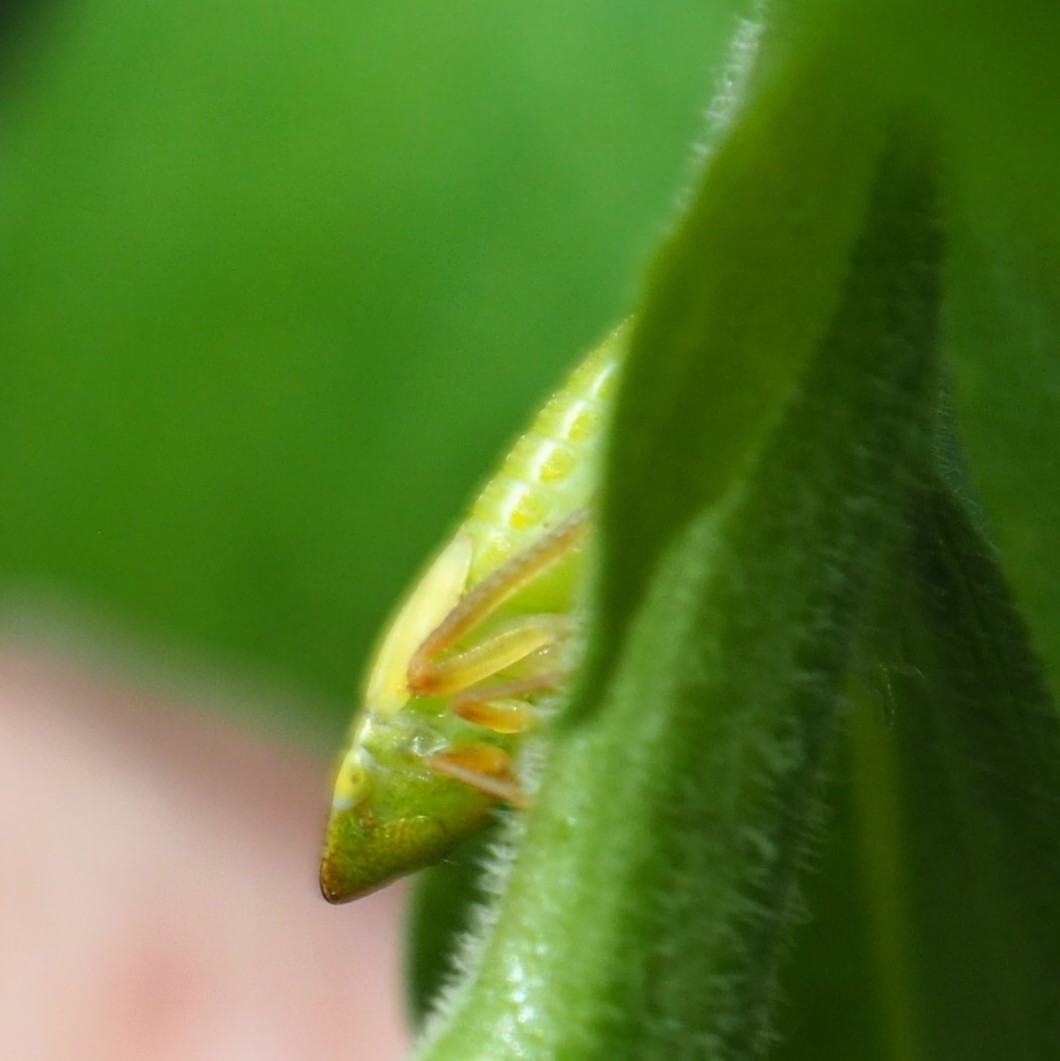
So now we've seen what is happening to the Leafhoppers. Another Hopper we can follow this with is this Planthopper. The first time I saw this little rainbow-colored creature, I assumed it was the nymph (or one of them) of the red and blue Leafhopper we just looked at, because of all the colors. It is actually the nymph of a Planthopper, Thionia bullata. Picture 2 shows another (probably earlier) instar of this Planthopper. Picture 3 shows one of the many color combinations the adult Bug may take on. It is called an Issid planthopper.
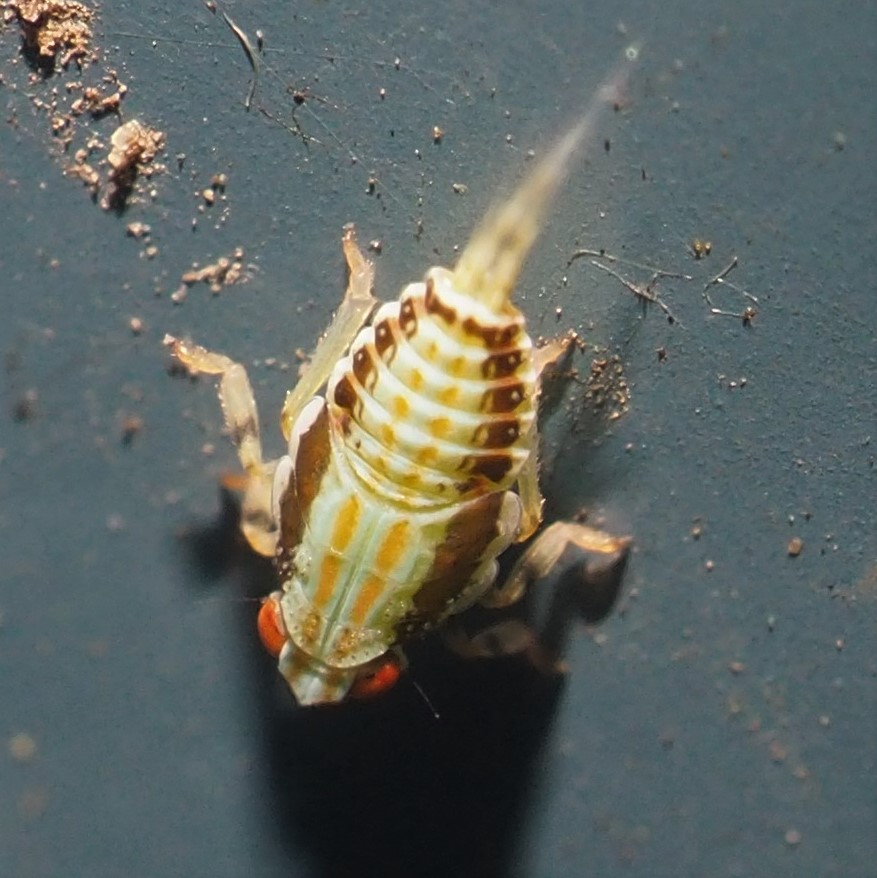
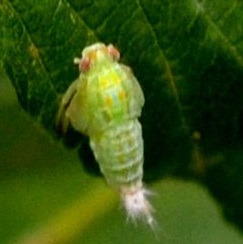
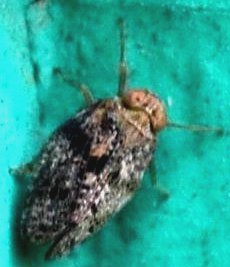
Another kind of insect that is grouped near the Leafhoppers and Planthoppers is the Spittlebugs. We have a few kinds of them but by far the most common in this yard is the Meadow Spittlebug. It is like those Dimorphic Jumping Spiders. Almost every year I hear of or see an example of a new color combination of those Spiders and also of these Spittlebugs. Our little group is starting to show up. Here is that Meadow Spittlebug... Picture 3 shows a globule of what I'm told the "spittle" protecting their eggs can look like.
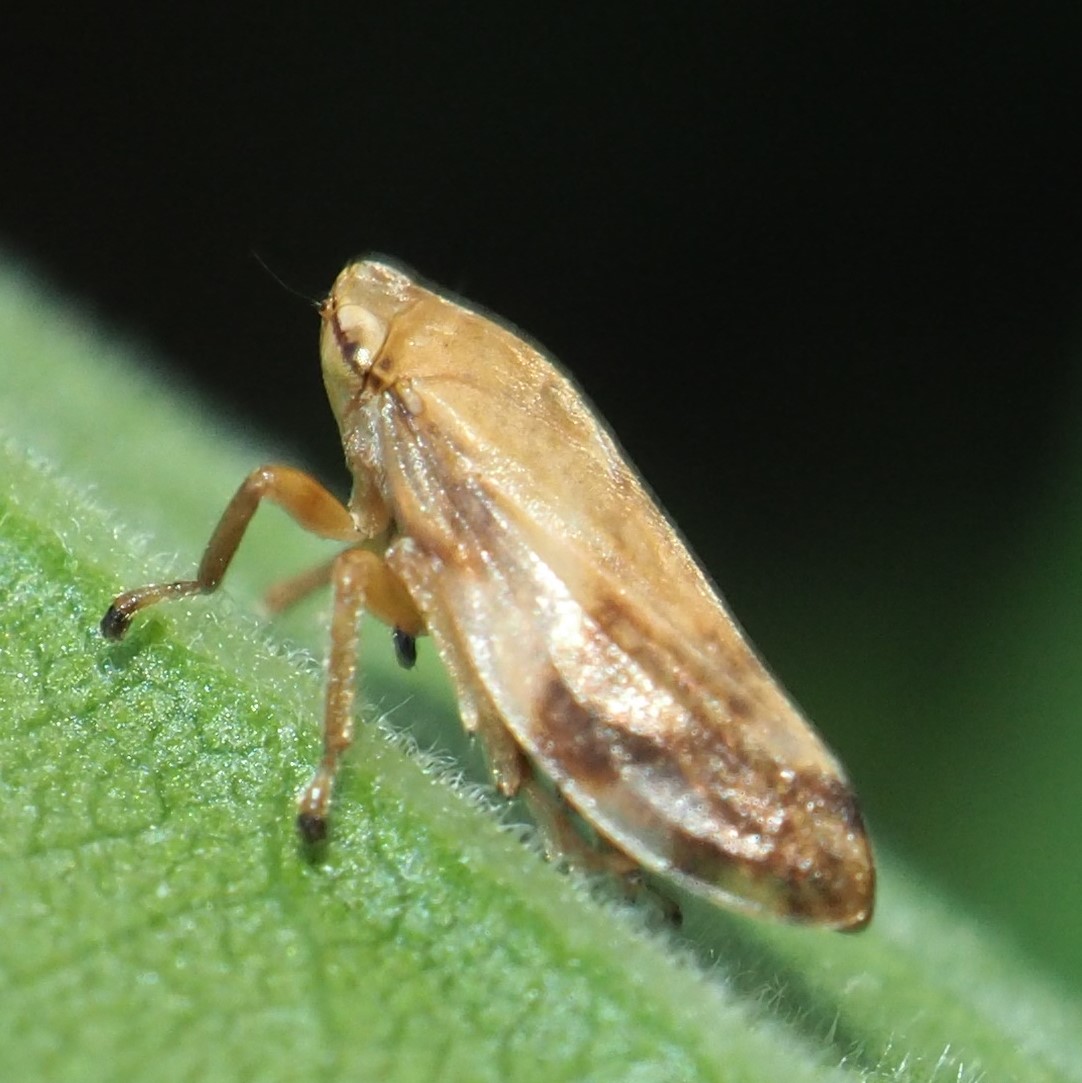
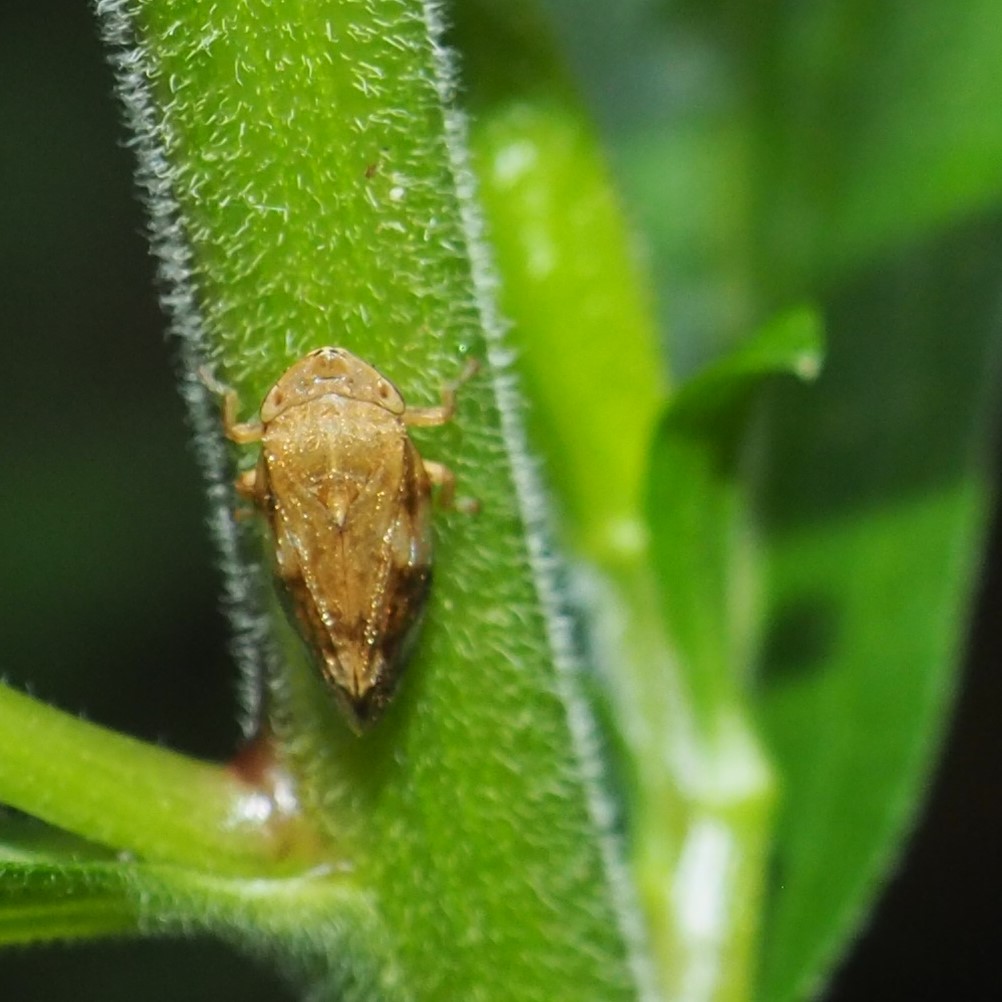
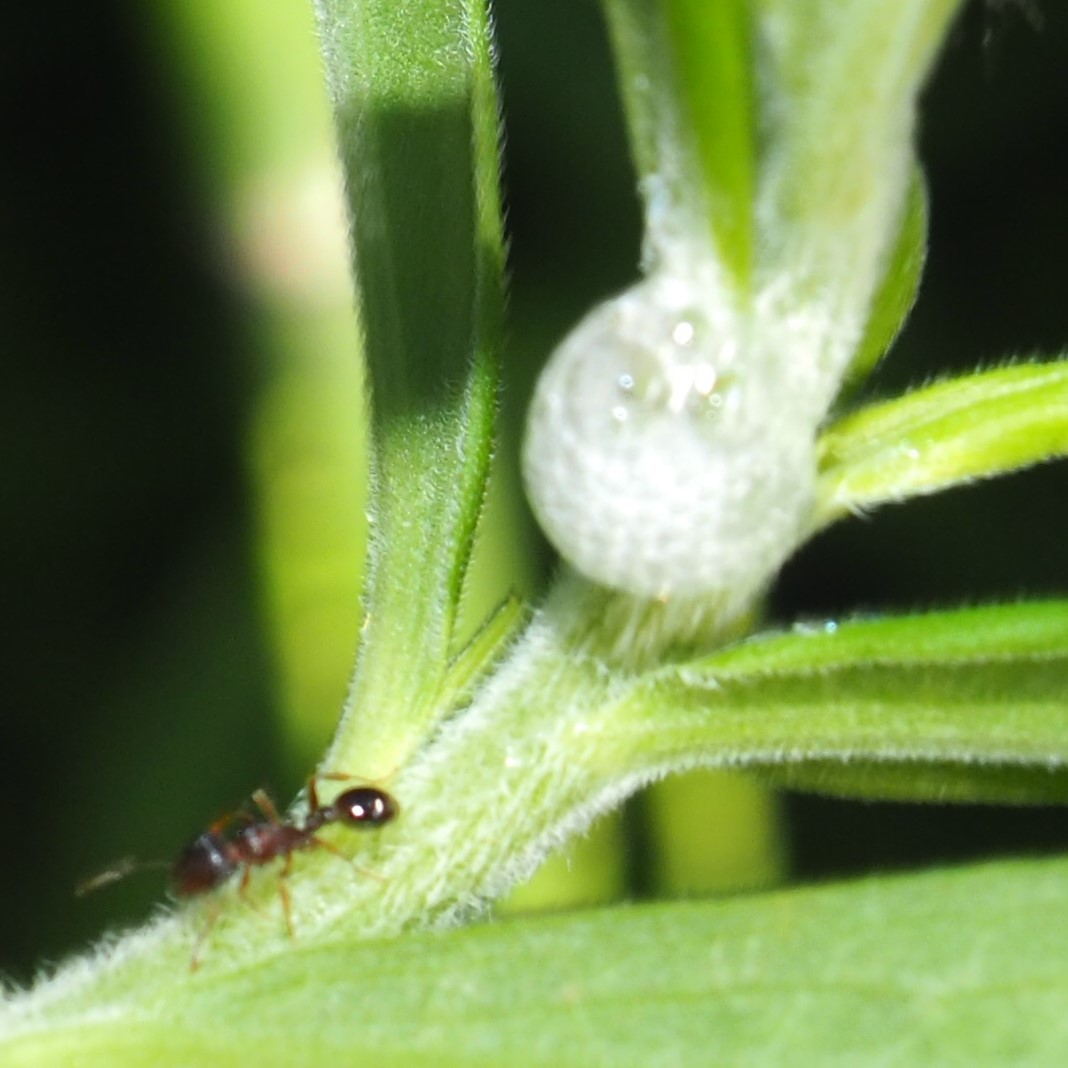
Now I want to move to the Plant Bugs of genus Phytocoris. We have been following one member of this genus. Last week it was busily eating the eggs of a Stink Bug. This week we seem to have seen it going through a new instar and possibly, just possibly to an adult form. First is last week's picture of a nymph just before it starts in on and finishes off the contents of this egg array. Next we see one which has just moulted its old skin and is into the next instar. And third is one which has finished hardening its new skin.
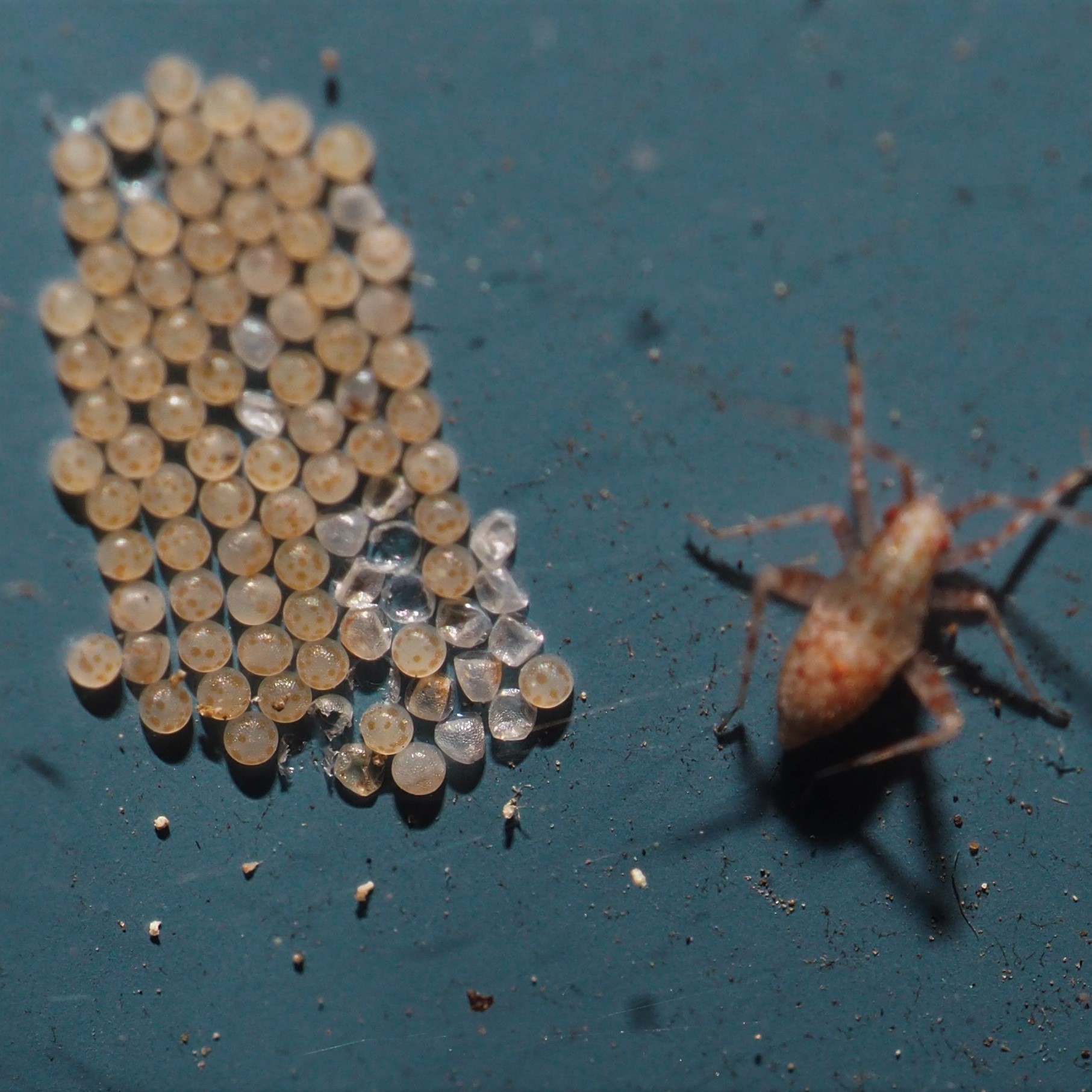
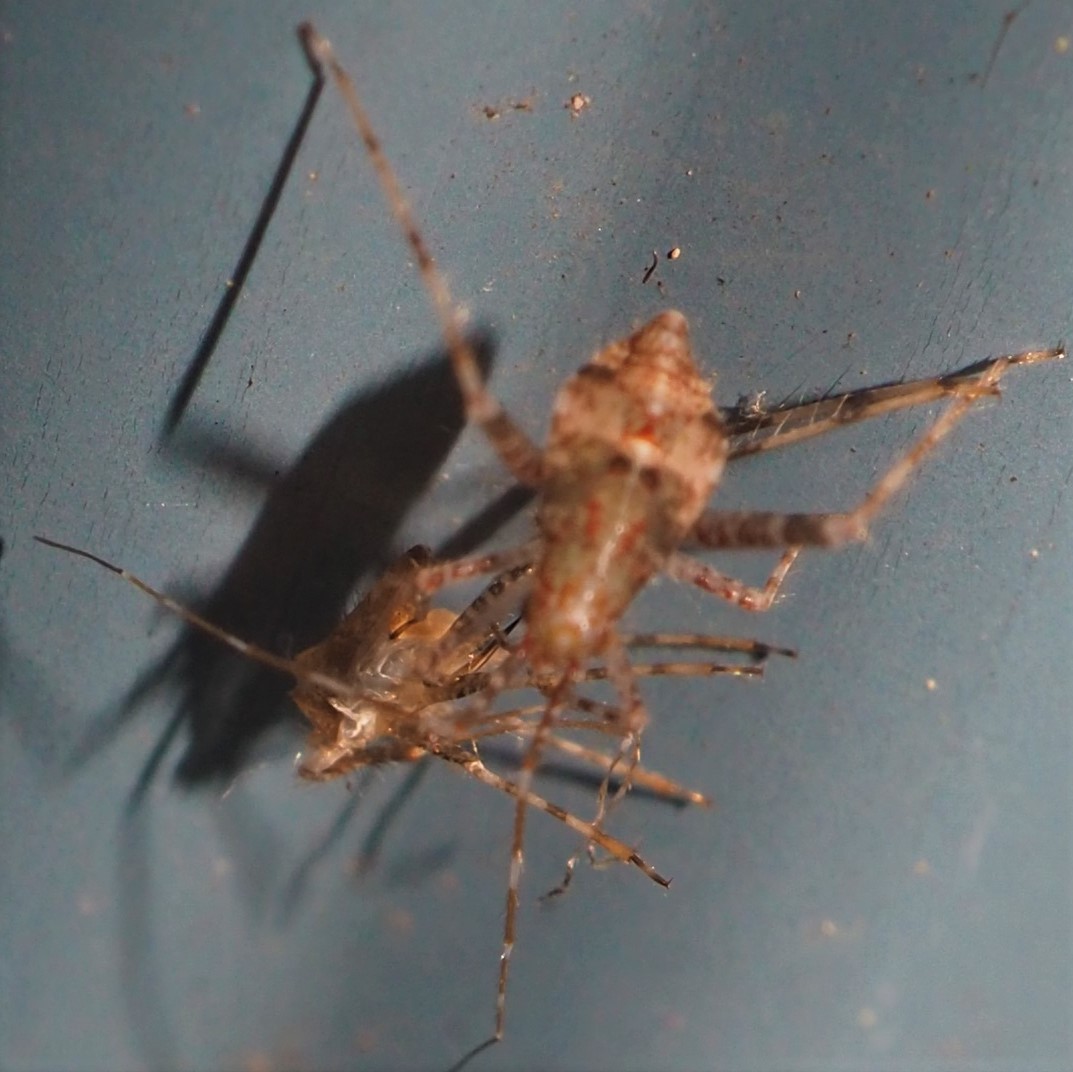
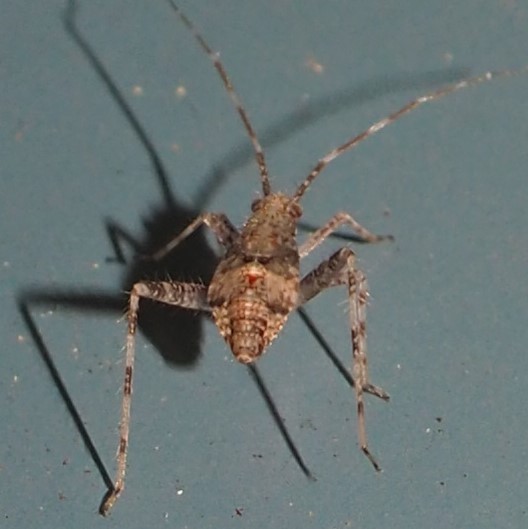
Here is an adult sitting on a bolt. And another. I think we now have seen this Bug in many of its important changes. Adding one from Saturday - sitting on top of Spider eggs, will they be as tasty as all those Stink Bug eggs?
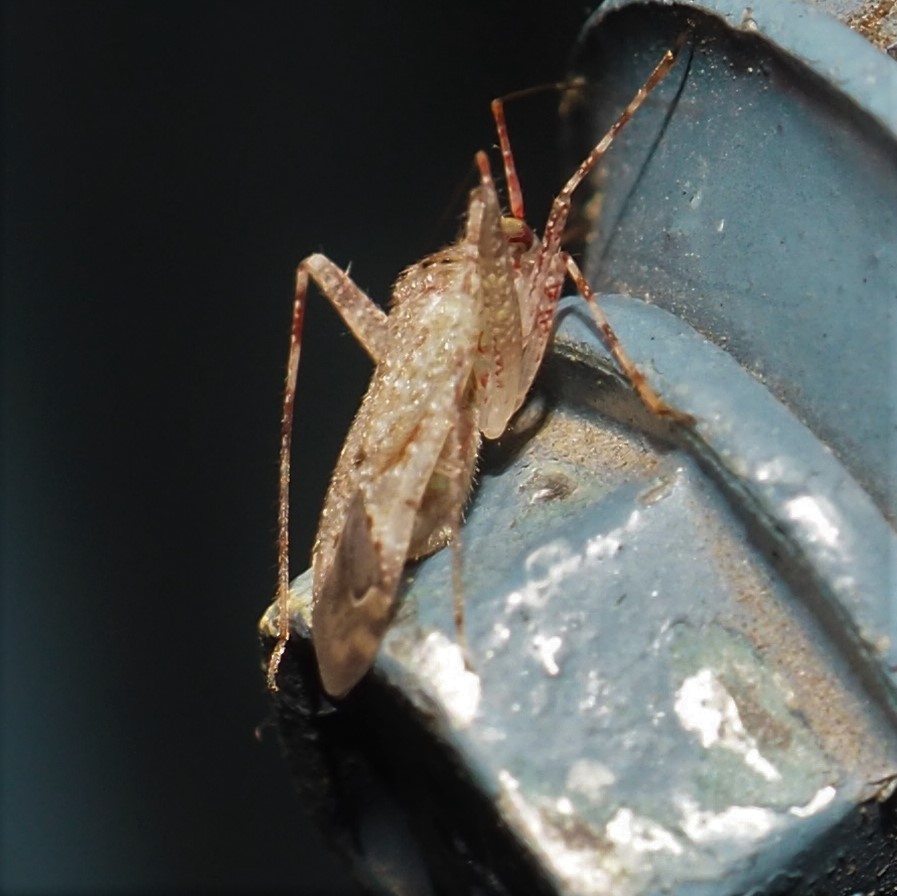

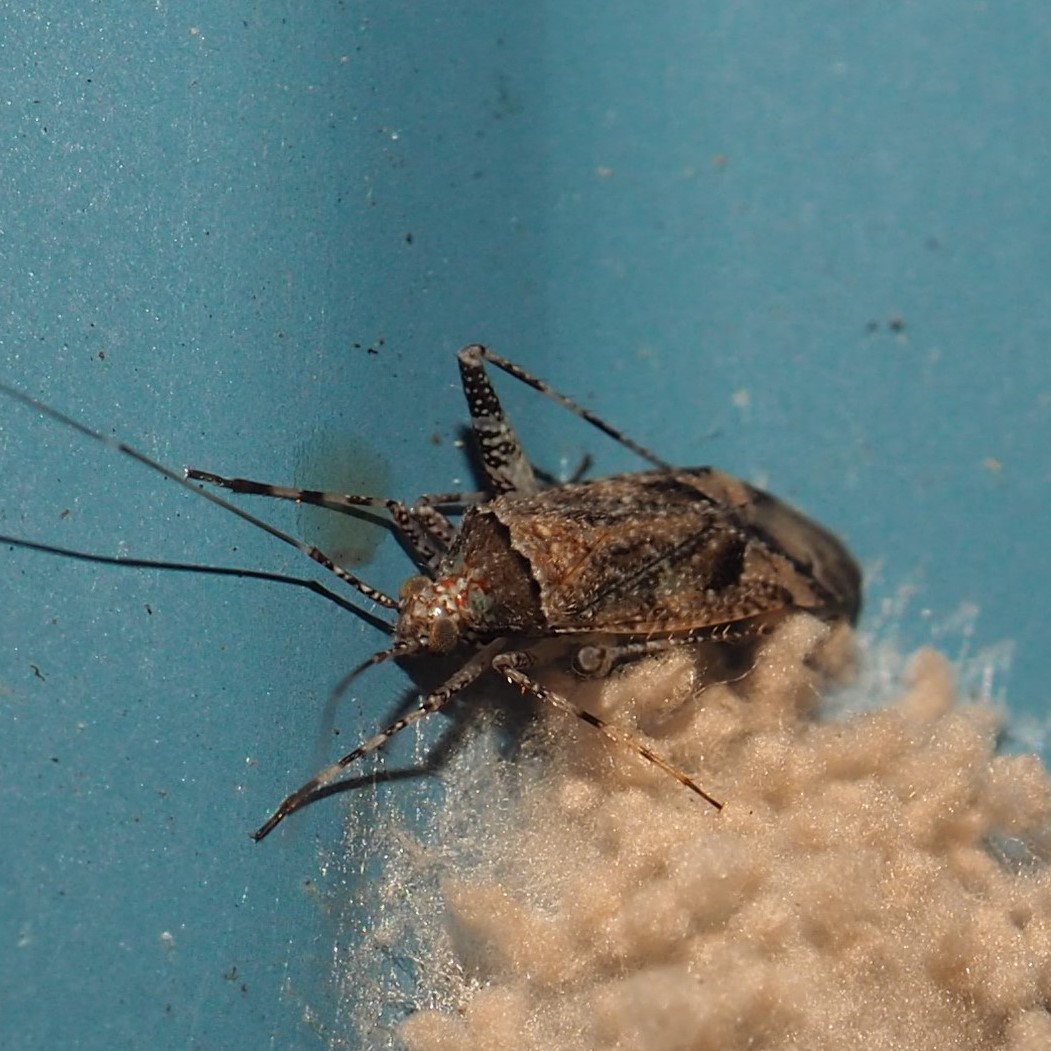
Let's now look at more of the Plant Bugs, of which the Phytocoris genus is one example. The Lygus Plant Bugs is another wing of the group. We've seen a number of these. Numbers 1 and 2 are from genus Plagiognathus. Number 3 is our friendly Obscure Plant Bug.
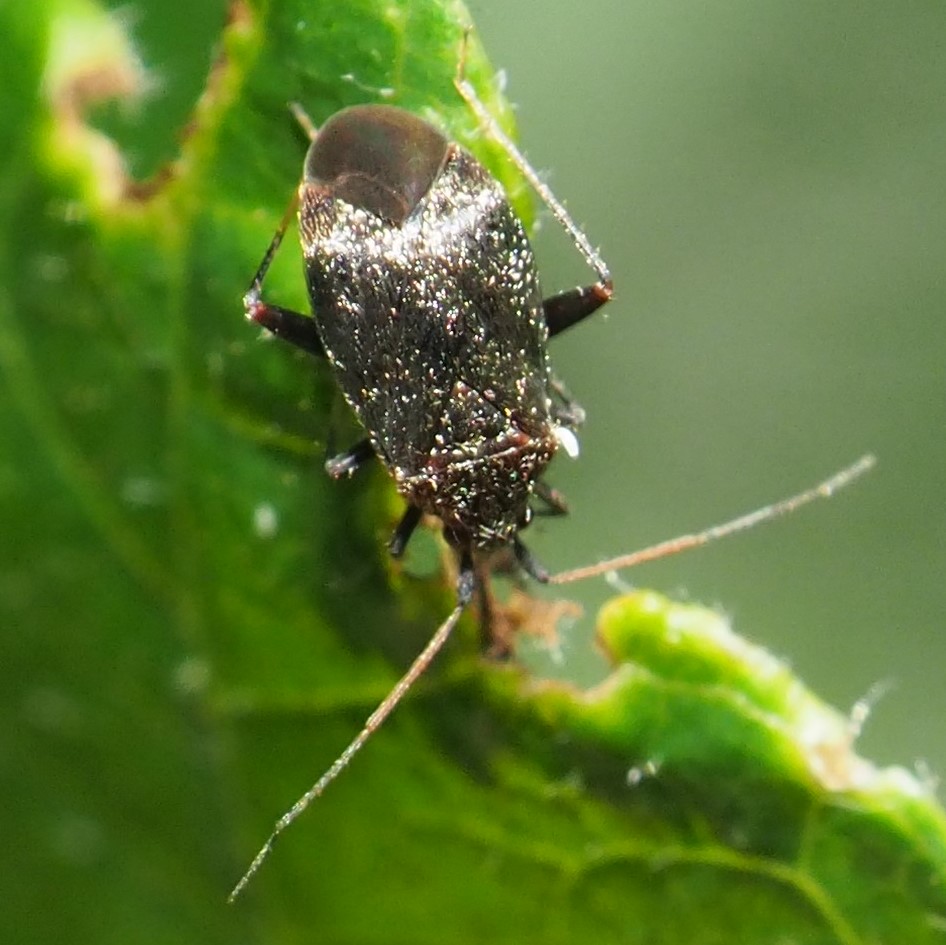
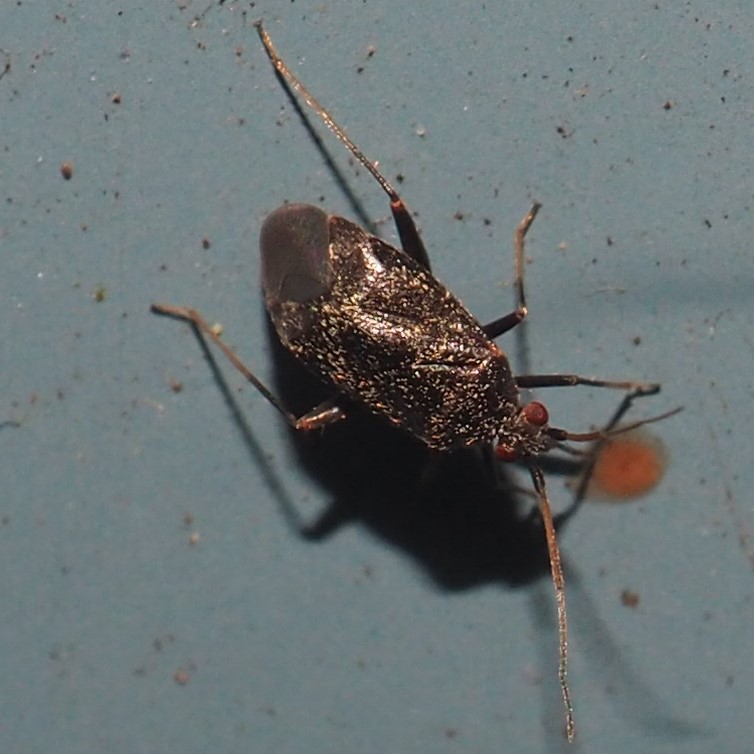
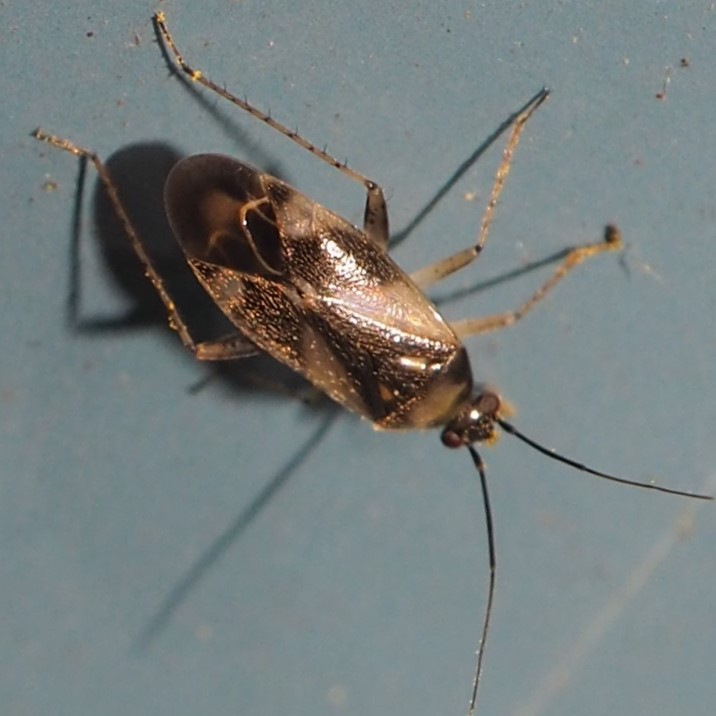
This first one was on a Common Day Lily leaf, and looks like an ordinary Lygus-like Plant Bug. But here is a surprise. I found it last year about now by turning over oak leaves until it appeared. It is the nymph of a kind of Plant Bug called Hyaliodes harti. Hopefully we'll find the Adult in a week or two.
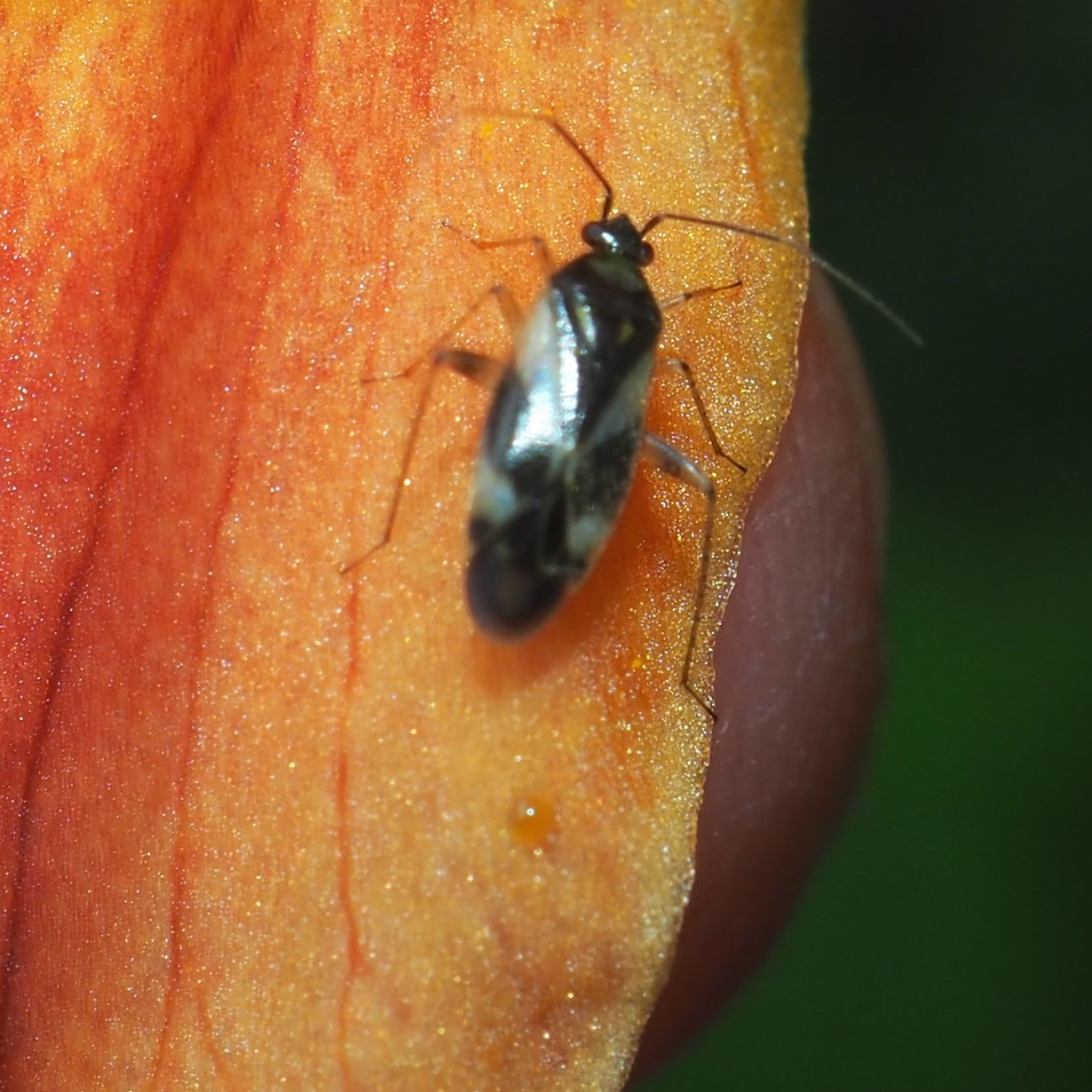
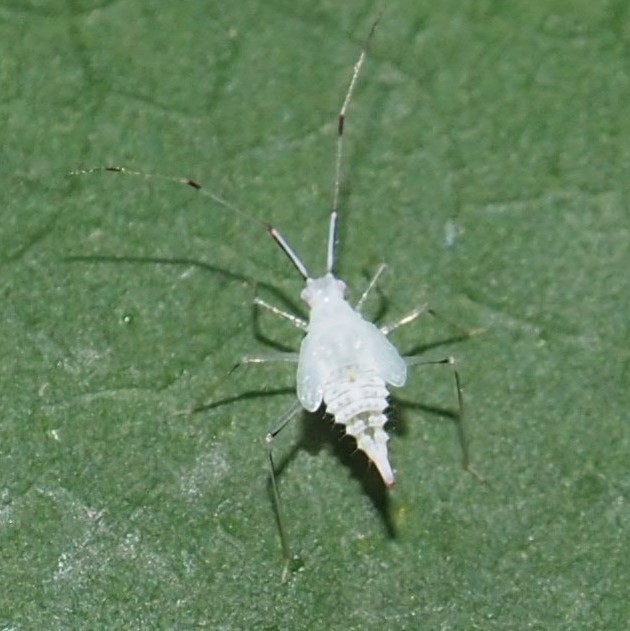
Here are a few "different" True Bugs. Here is the White-margined Burrowing Bug; then a Stilt Bug, named for its stilt-like legs. There is one more new thing that I really don't recognize - I had first labeled it a spider. You'll see a similar one when we get to that section.
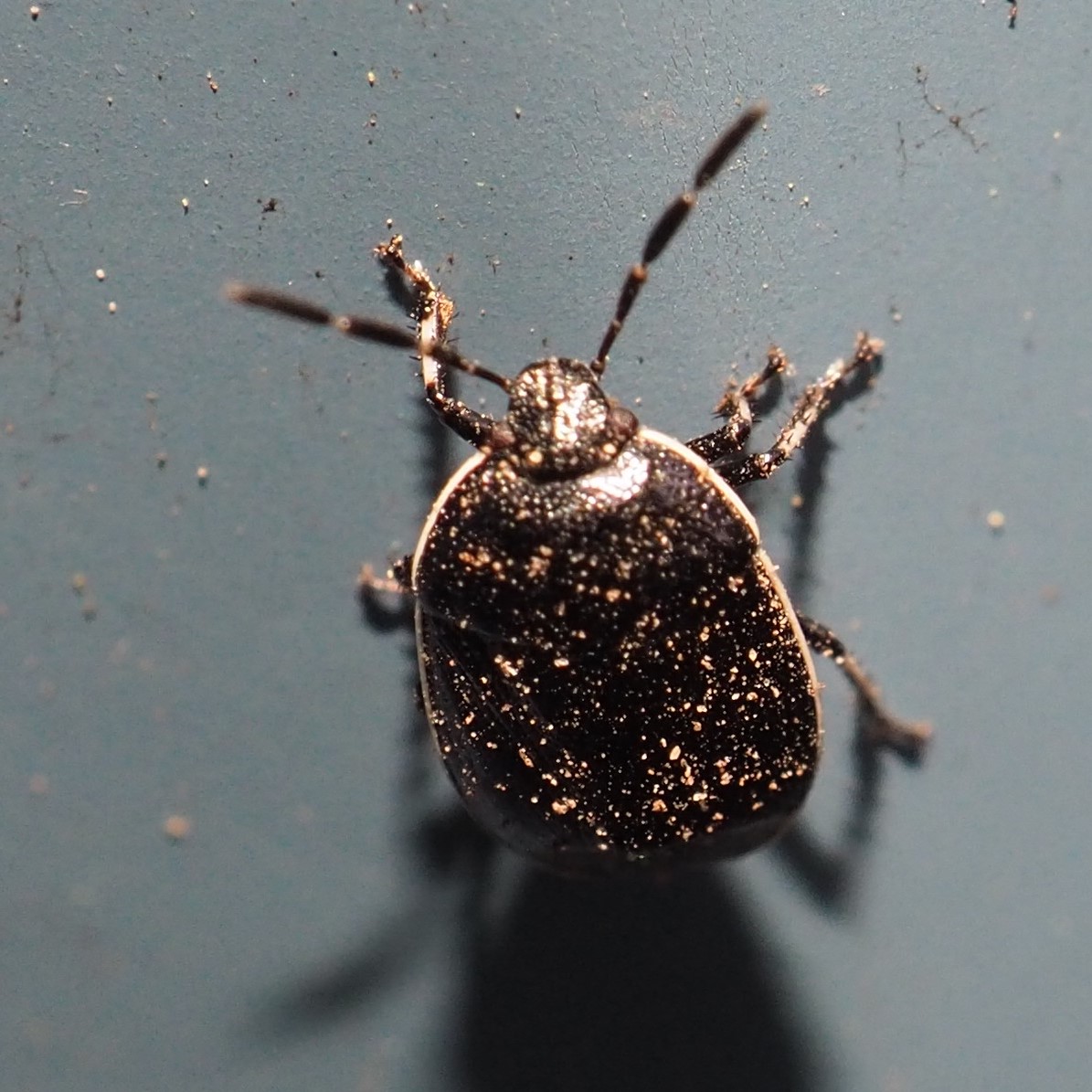

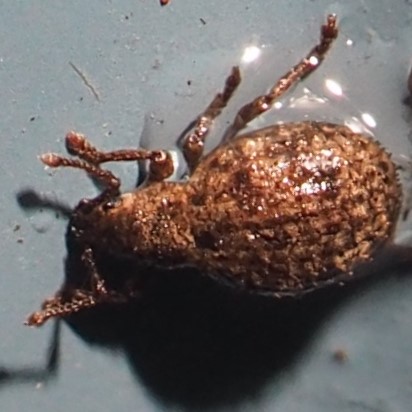
We haven't mentioned the Treehoppers yet. Right now the Two Mark Treehoppers are turning into adults. They are among my favorites, since a researcher found that the ones on my Redbuds are a different species than in other places. I haven't seen the Keeled Treehoppers yet on the Thistles. They were such a joy last summer. I would lug my folding chair to the site and sit almost right in the bushes and take pictures of what became a part of the Family! Here's a scene from there last year. These two kinds of Treehoppers are the ones that have been numerous enough for me to get familiar with them - another kind of Borrowers! But the other day I found a new Treehopper in my Goldenrod. When I submitted it to iNat I didn't know it was a Treehopper, but thought it might be a new look for the Meadow Spittlebug, so when they came back with the ID that it was a Honeylocust Treehopper, I was so surprised!
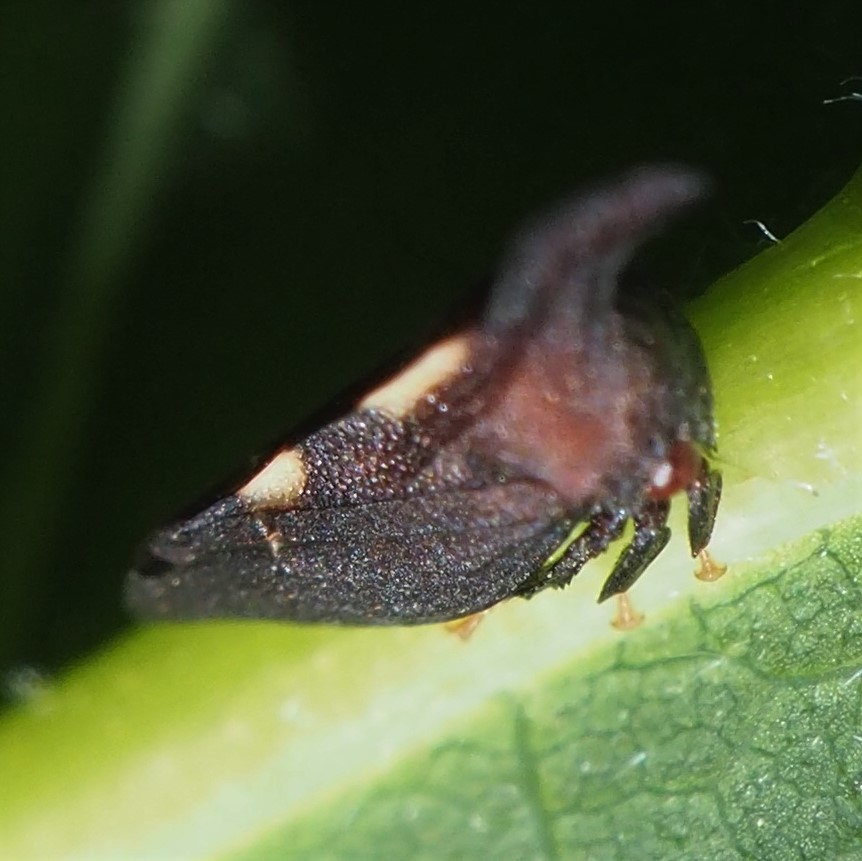

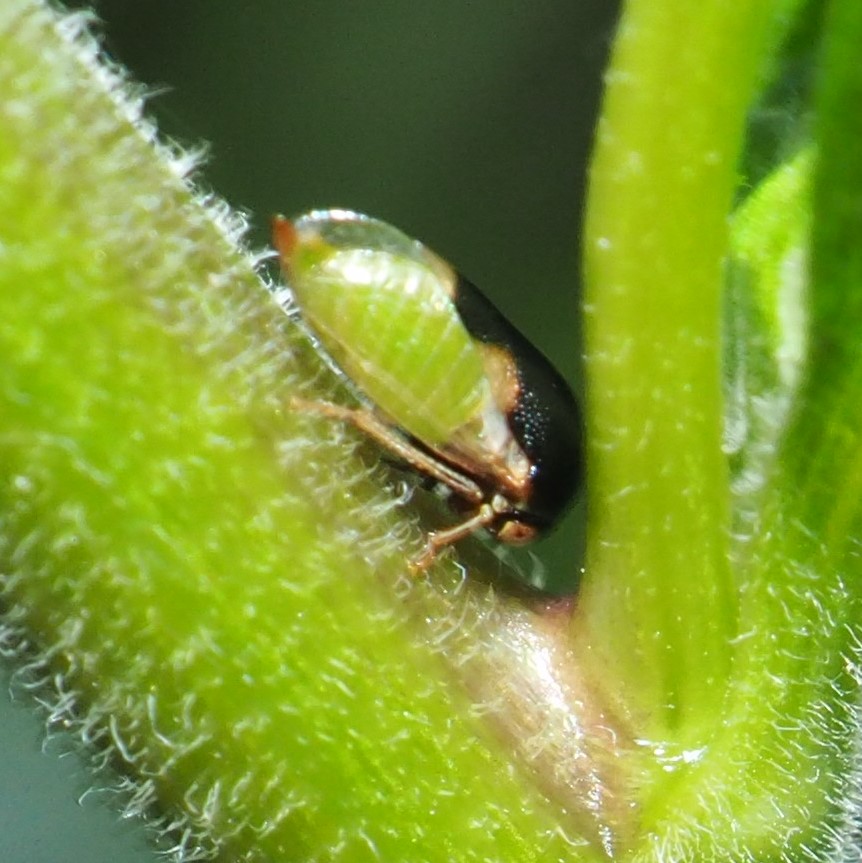
Here is everyone's favorite Damselfly, the Ebony Jewelwing. But it seems to be a female - doesn't have the bright iridescence!


Here are a few more creatures. The Dustywings LOOK like Bugs, but they are actually more closely related to the Lacewings. We had plenty of Earwigs too. I used to find a lot of European Earwigs, but this year they all seemed different. When I submitted one to iNat and it came back labeled as European, I asked why, and the identifier said it was a juvenile and didn't look like the adults.
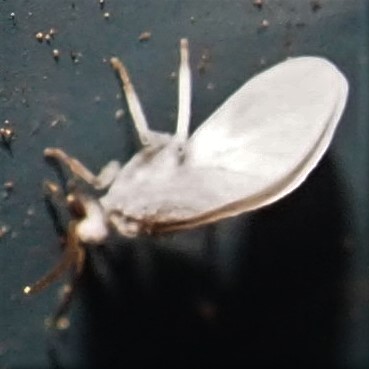
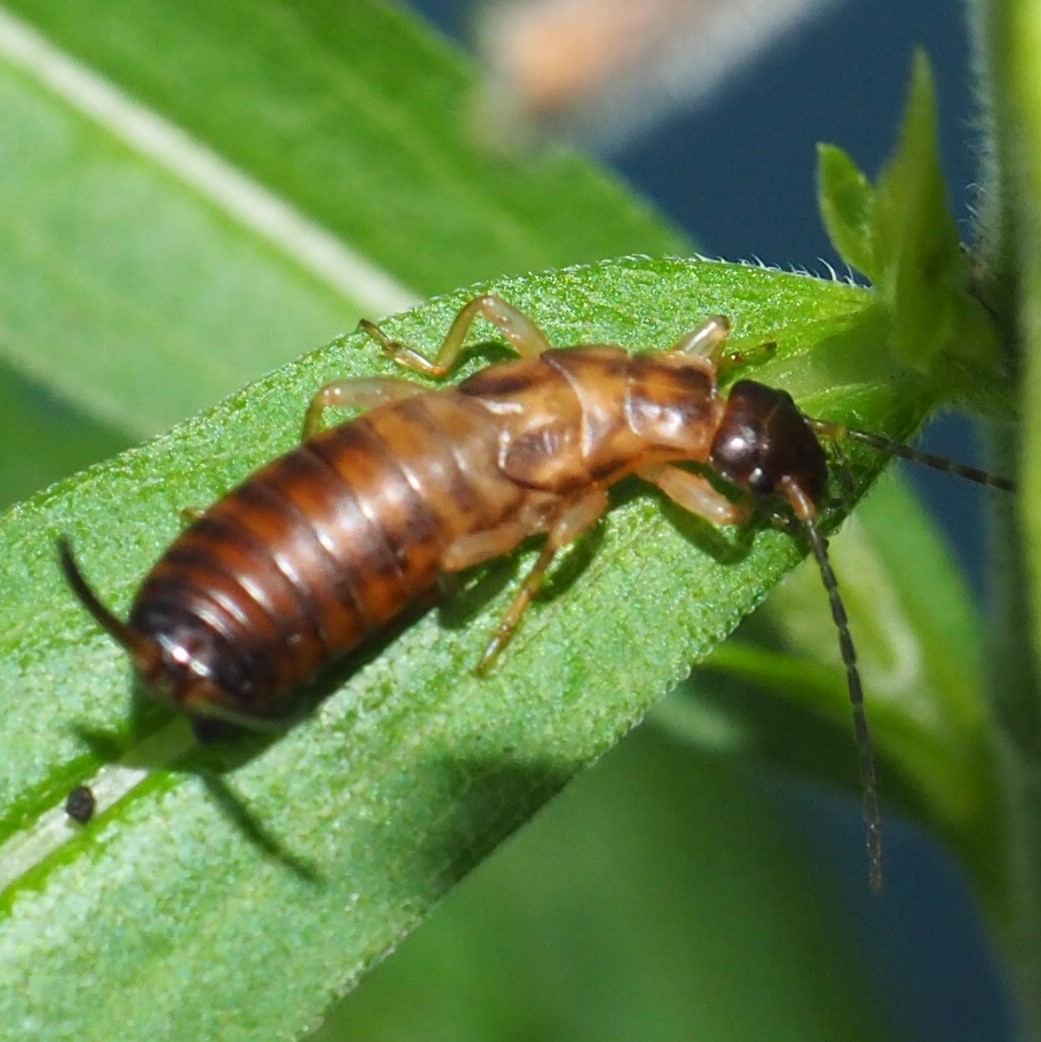
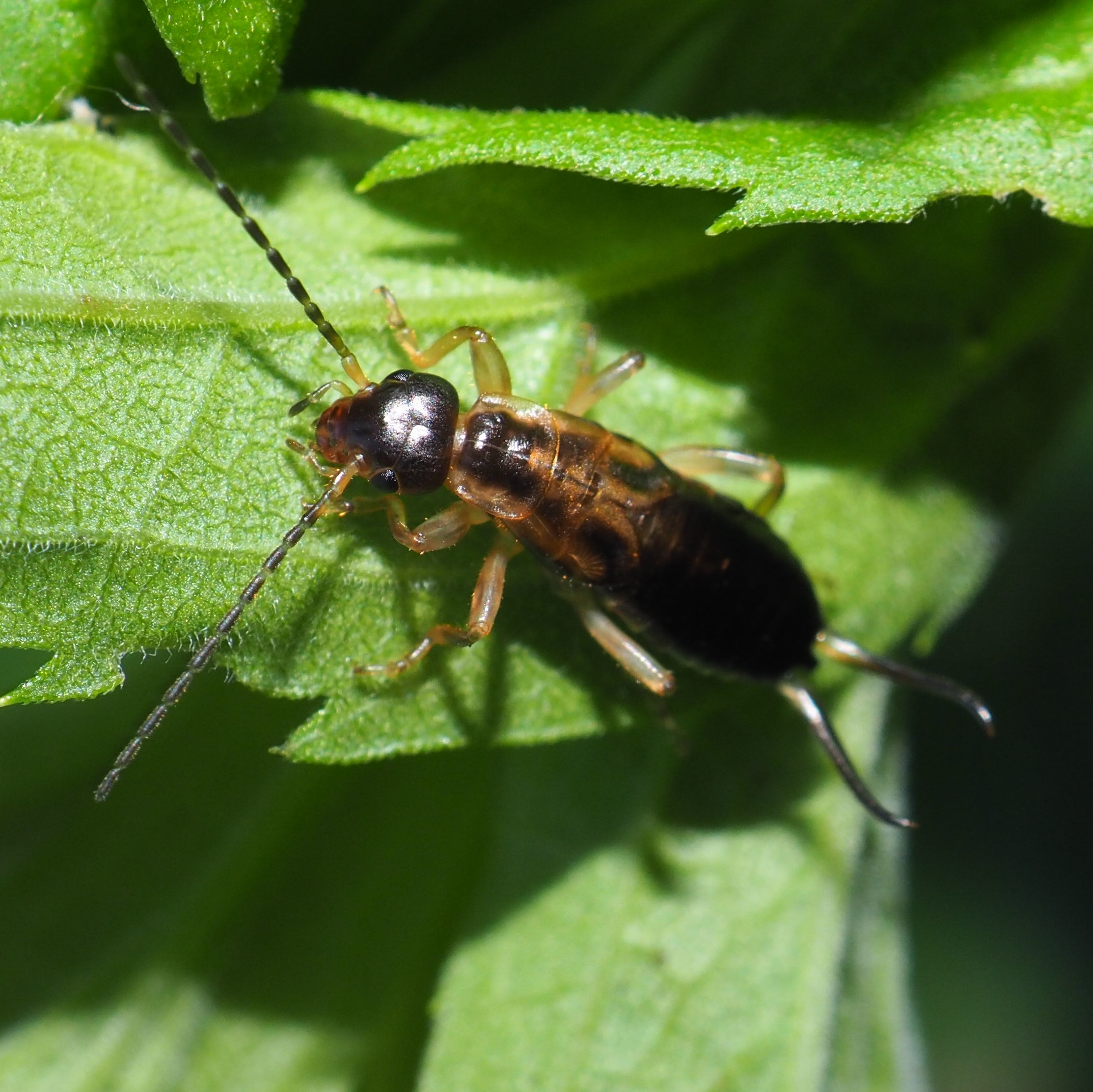
The Fishes have been enjoying the pond more and more. But when I got up this morning and looked out the window, I was surprised to see some spirited mating behavior. At first all I saw was Chica being pursued around the pond, but soon it turned out that another smaller fish, a little pinkish one, was being chased by first a dark young male and then by another reddish fish. They seemed to be playing a game of Change Partners!
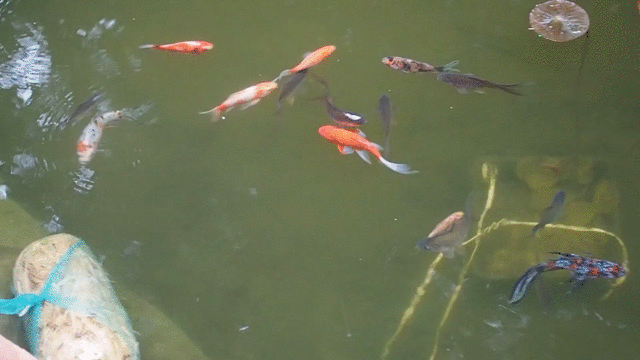
There don't seem to be too many new Flies to report, but a few. Here's a big fat Fruit Fly. Next, a mass hatching of tiny Flies seems to be taking place. Third is either a Fungus Gnat or a Midge.

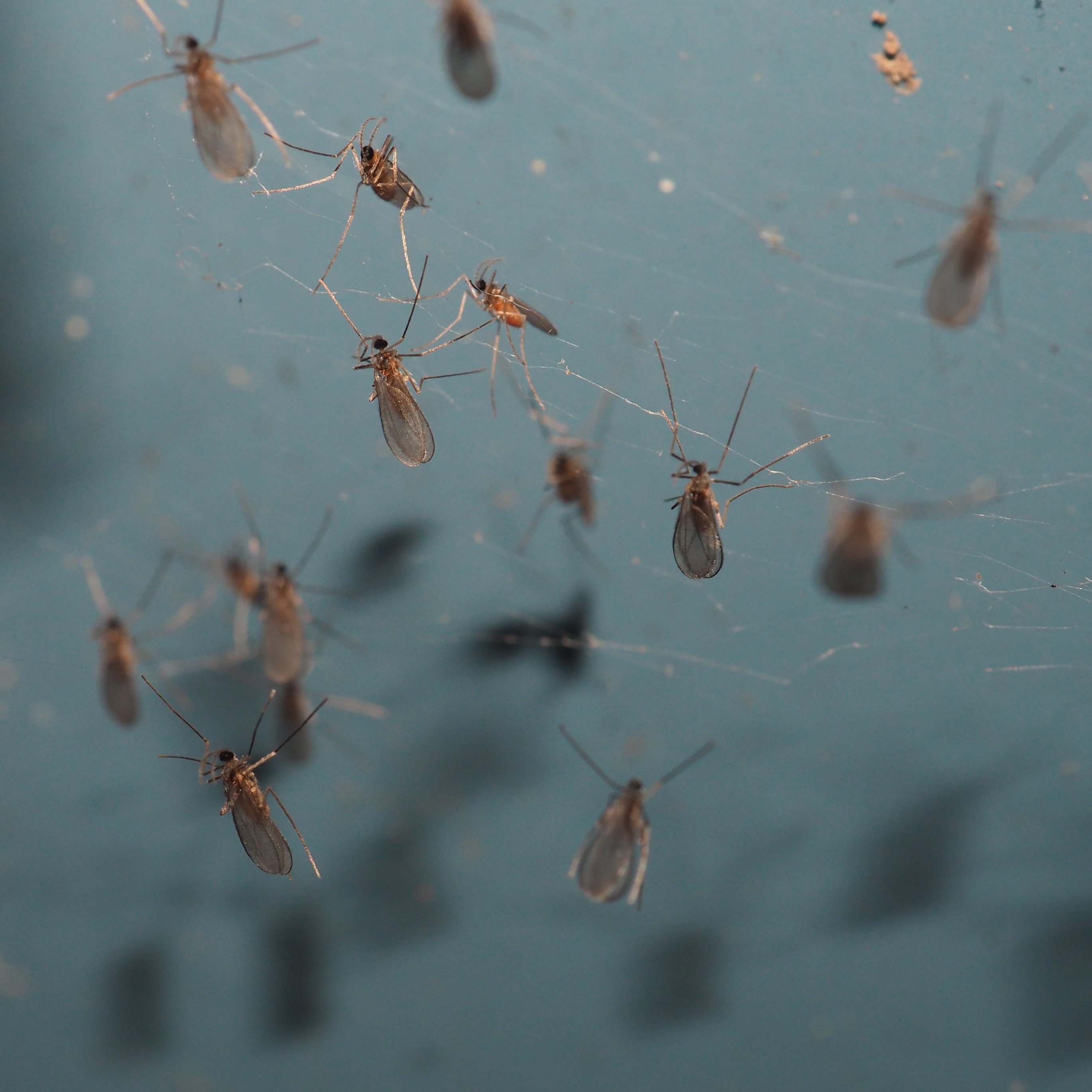
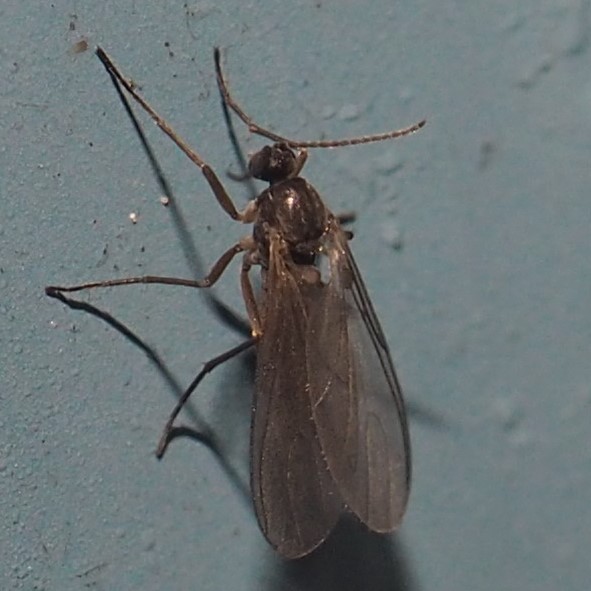
Here is a delicate Midge! Another and another, the last with a serious Mite infection.
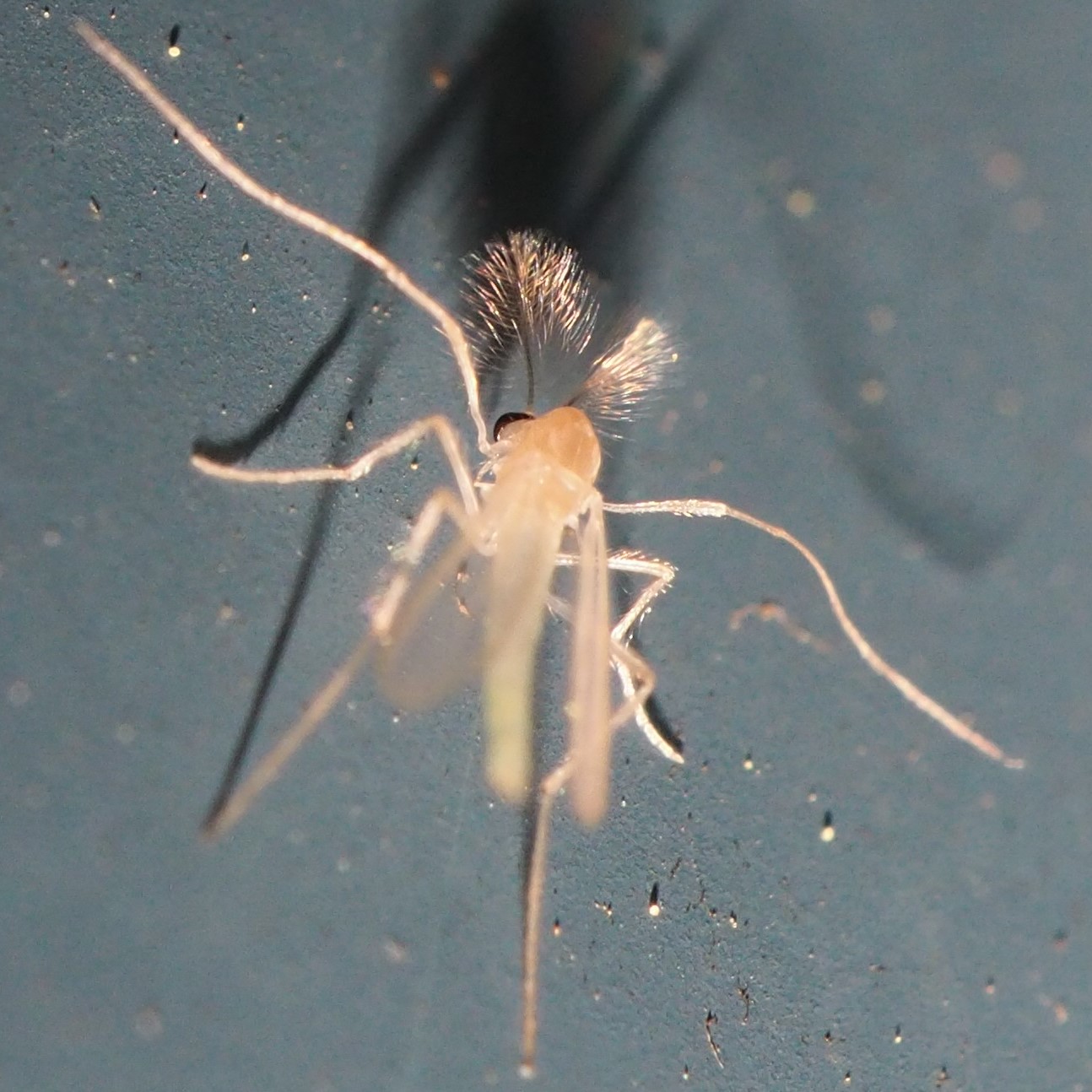
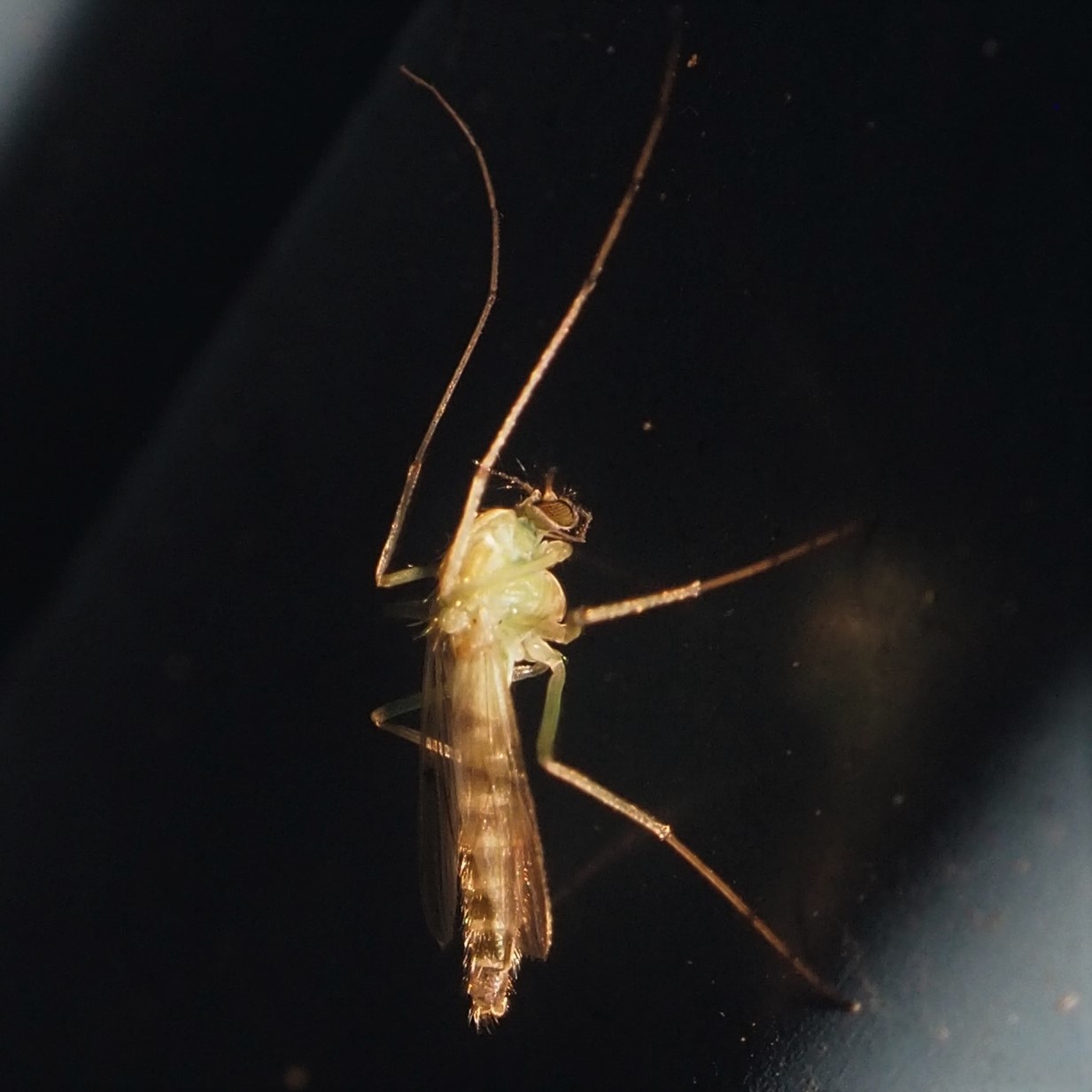
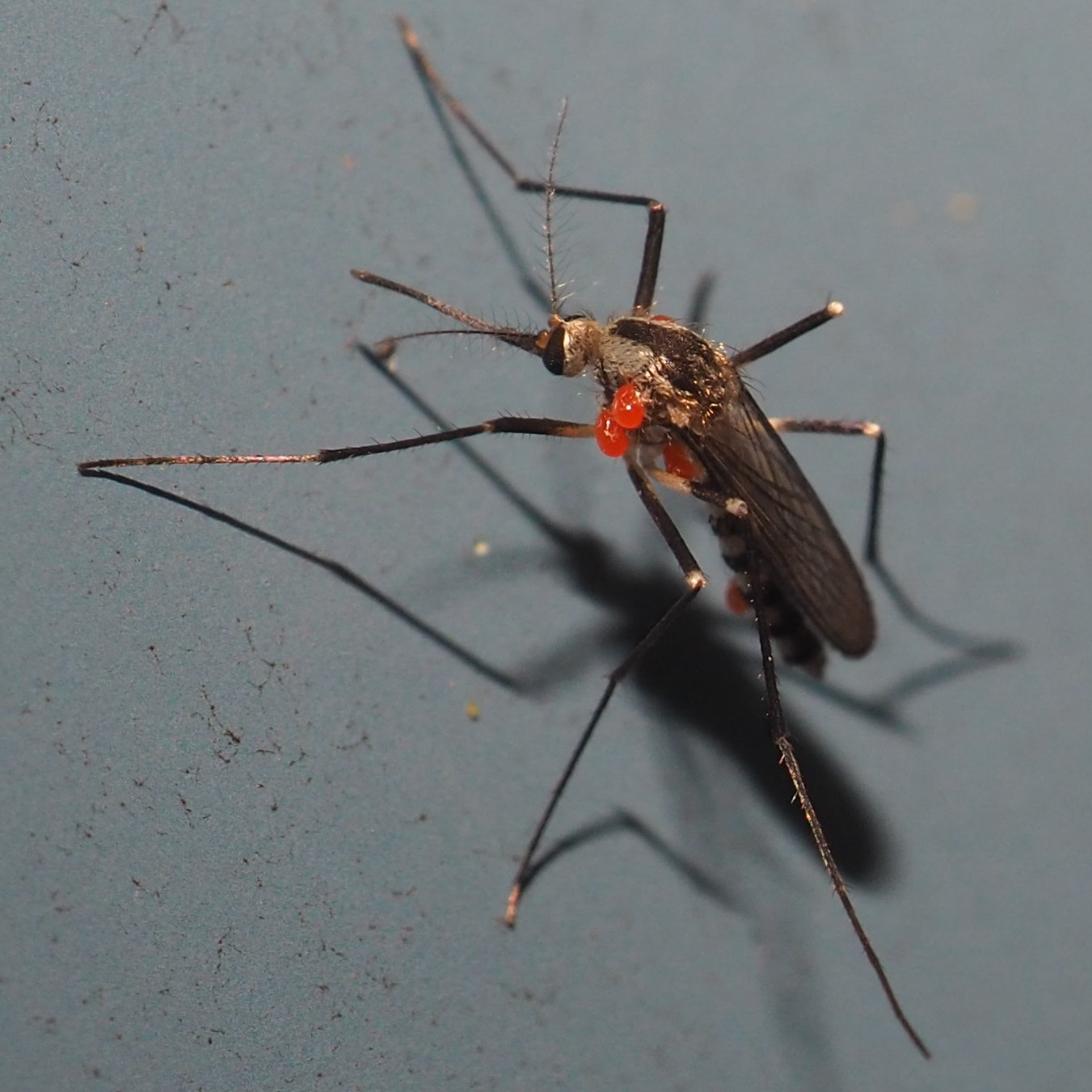
This looks like Minettia lupulina, one of the most beautiful Flies in existence. The second one seemed half the size of the first, but I think that was because it was on such a beautiful green plant. Third is a Moth Fly.

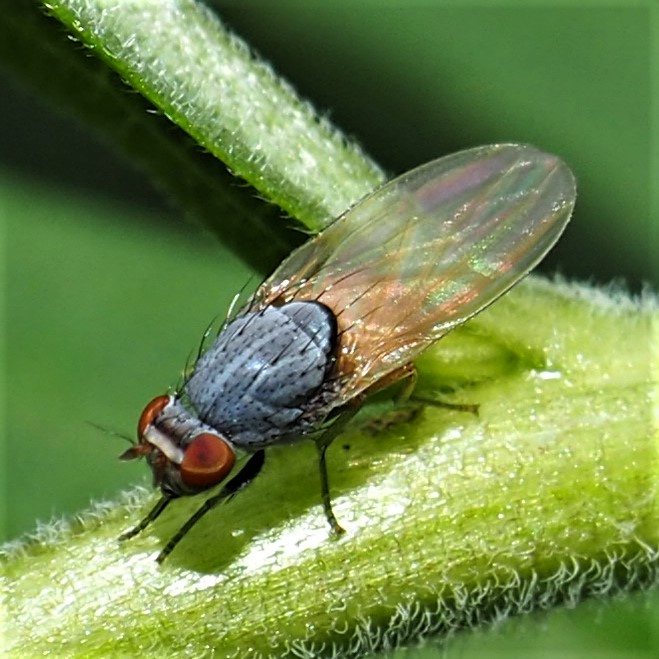
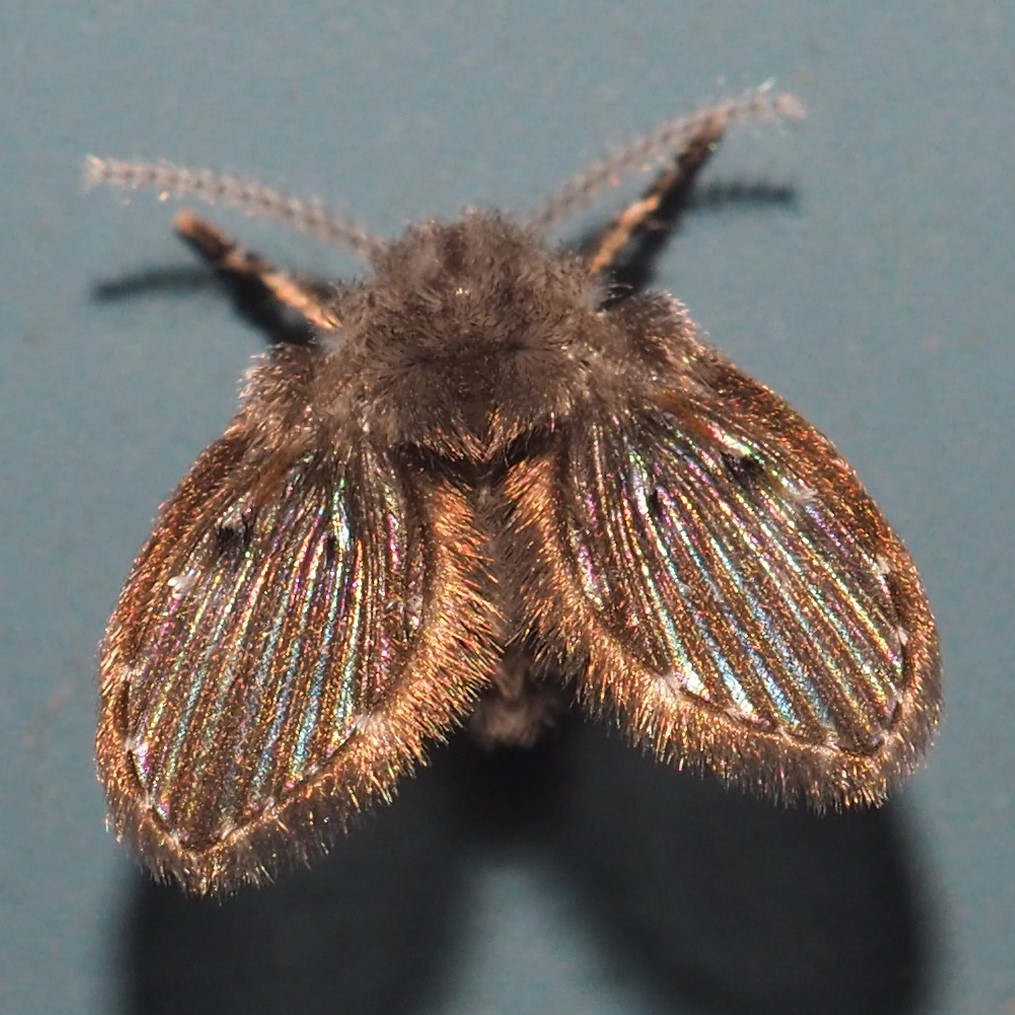
Here is either a Mosquito or a lovely non-biting Midge. Second is a Soldier Fly from Tribe Stratiomyini. Third is supposedly a kind of Dance Fly.
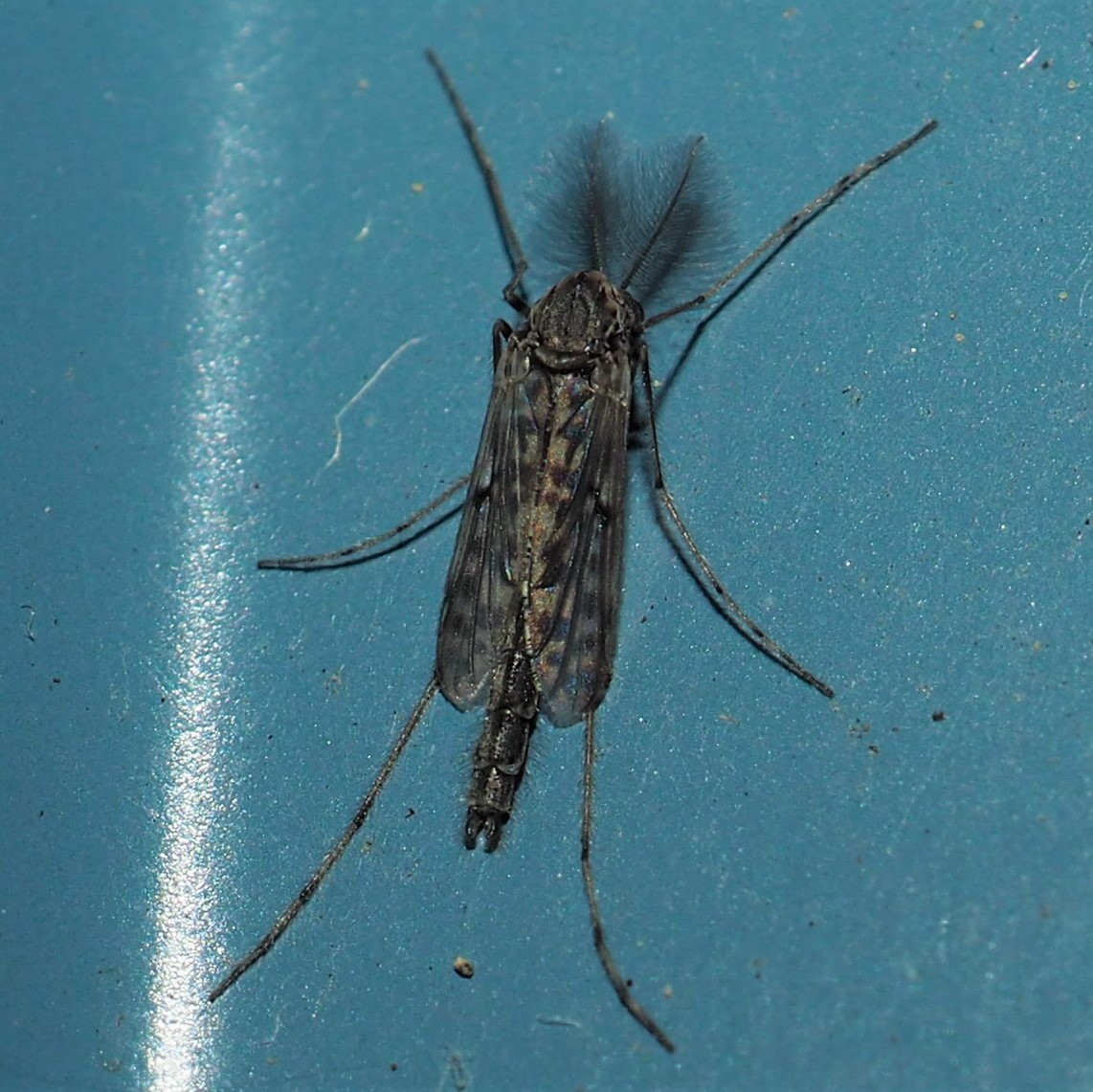
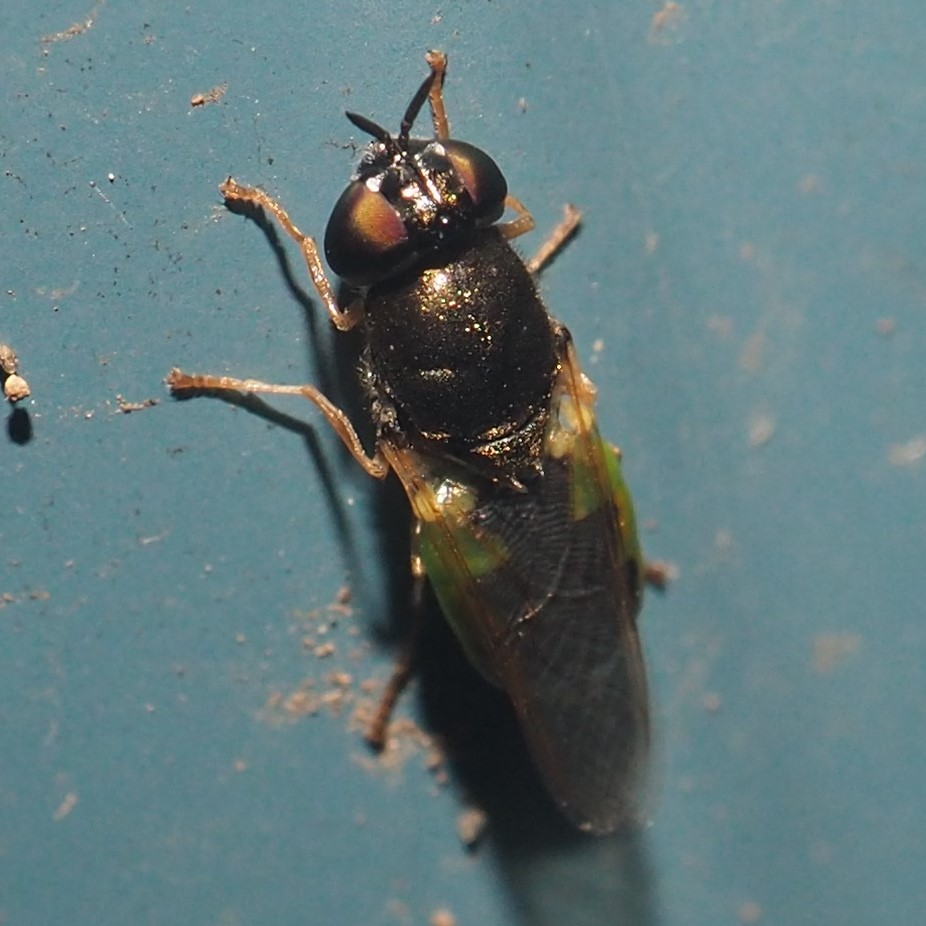
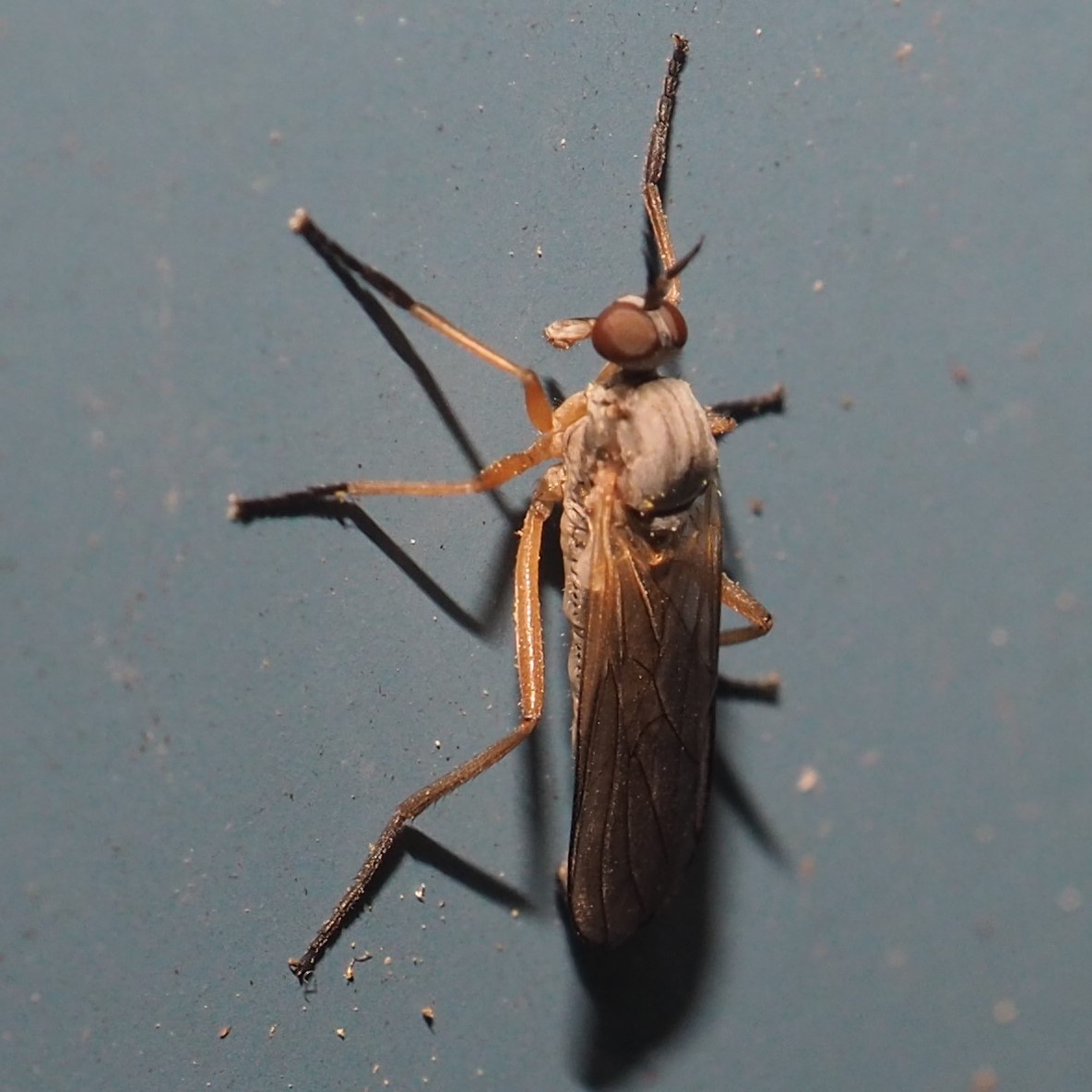
First here is a gorgeous orange Fly. Then comes a Flesh-eating Fly. Third is either a Fly or a Wasp.
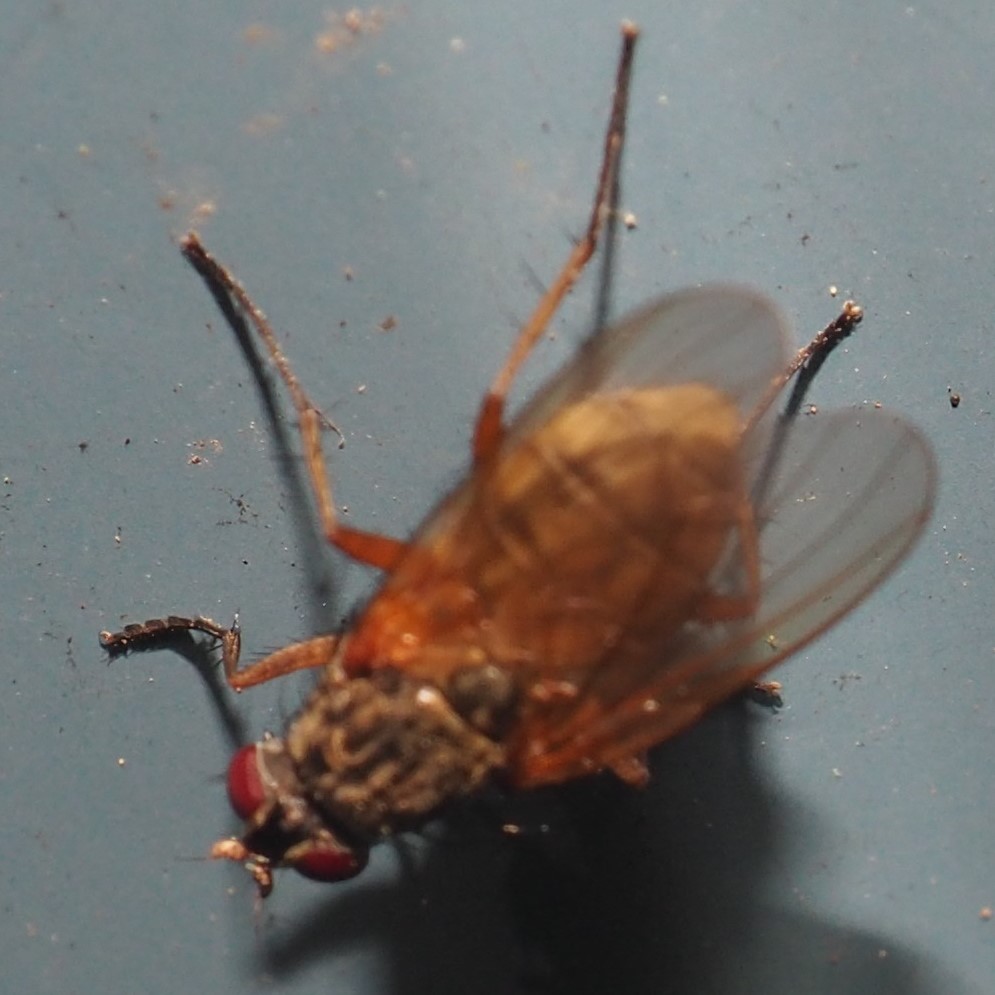
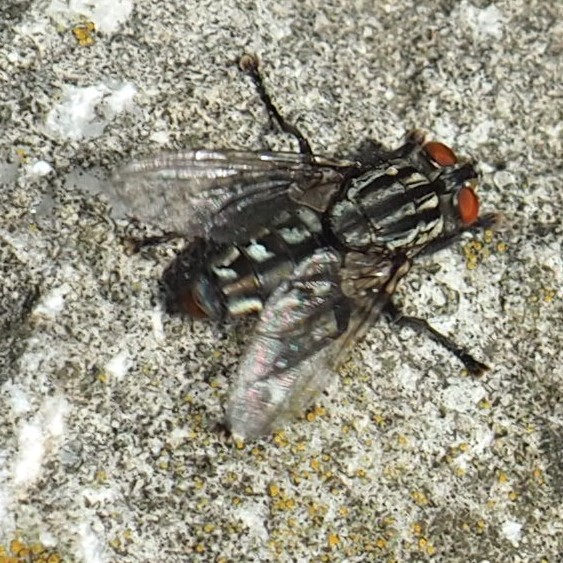
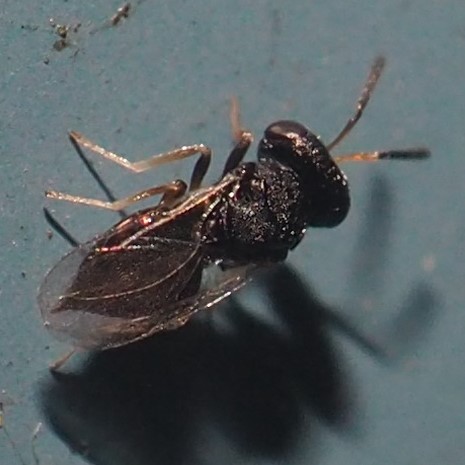
I believe this first Fly is the other sex of that Woodlouse Fly we saw last week. Here is the old one. It's interesting how different the sexes can be. Number three is a very small Hover Fly, Toxomerus geminatus in the Fleabane.


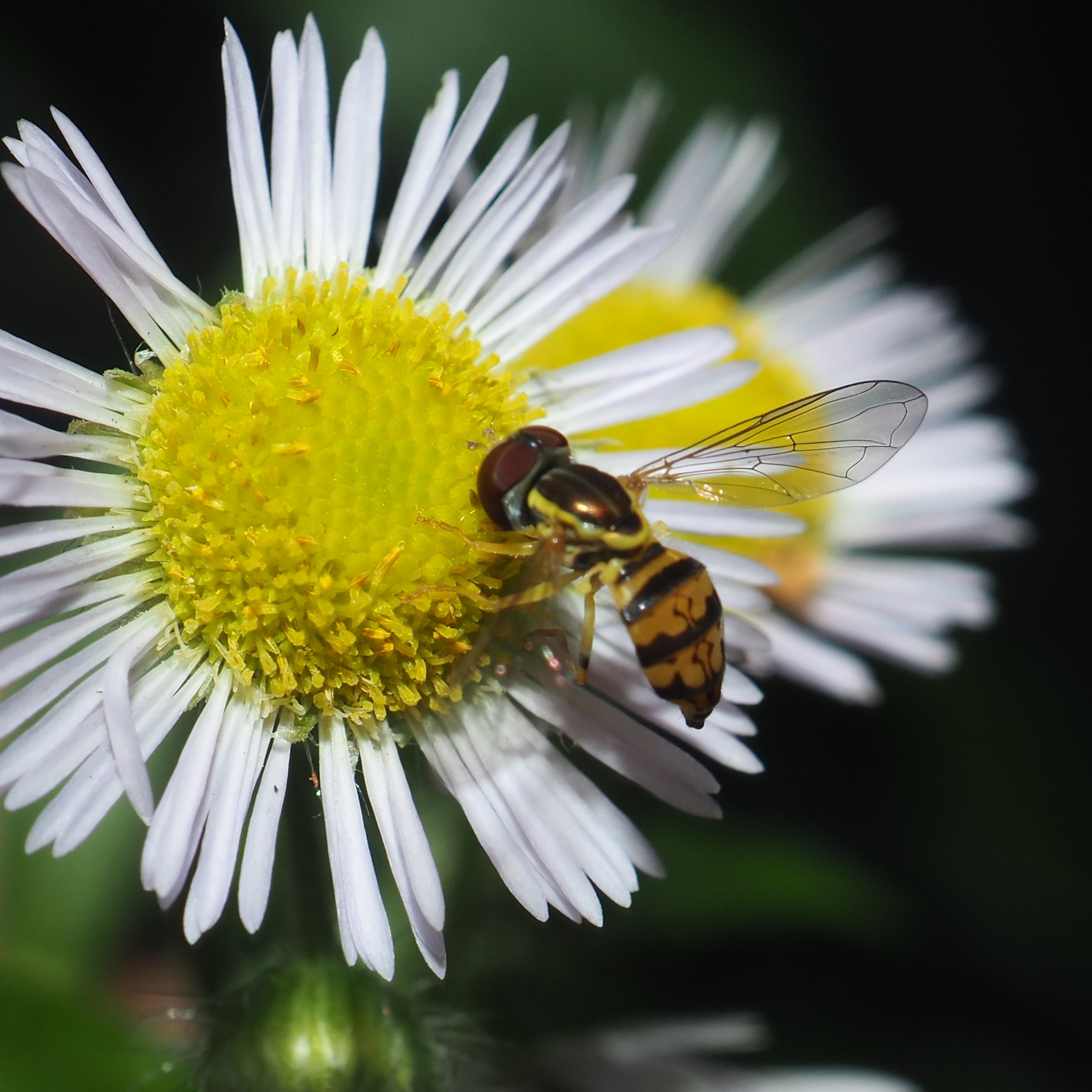
Before we get to the Moths, let's see those baby Katydid nymphs once more. They are still at the age where they seem to be experimenting with shaving cream!
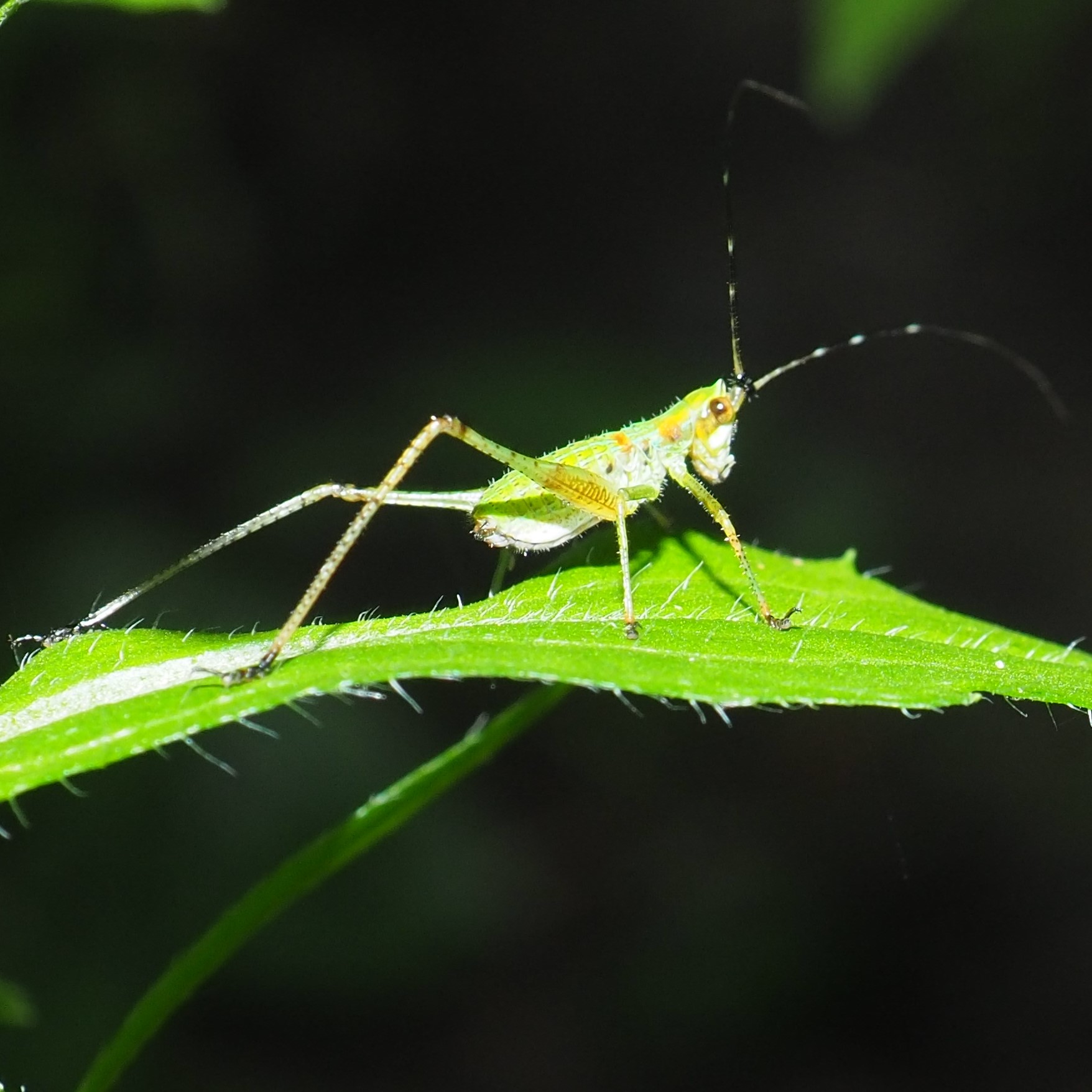
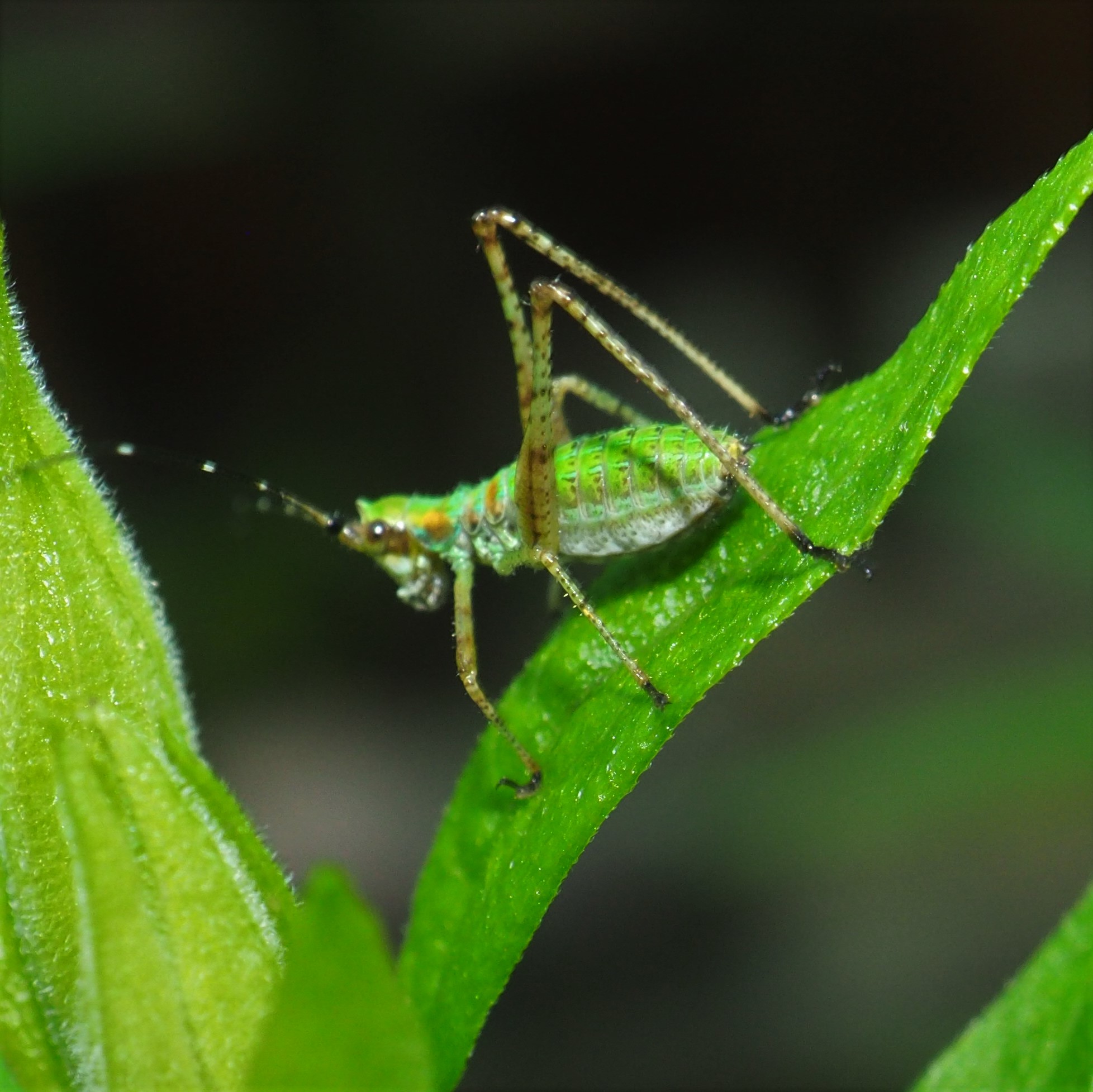
We still have a lot of Moths unidentified, but here are some of the ones we do know now. First is the Large Yellow Underwing; then the Green Leuconycta Moth; and then the Pink-barred Pseudeustrotia.
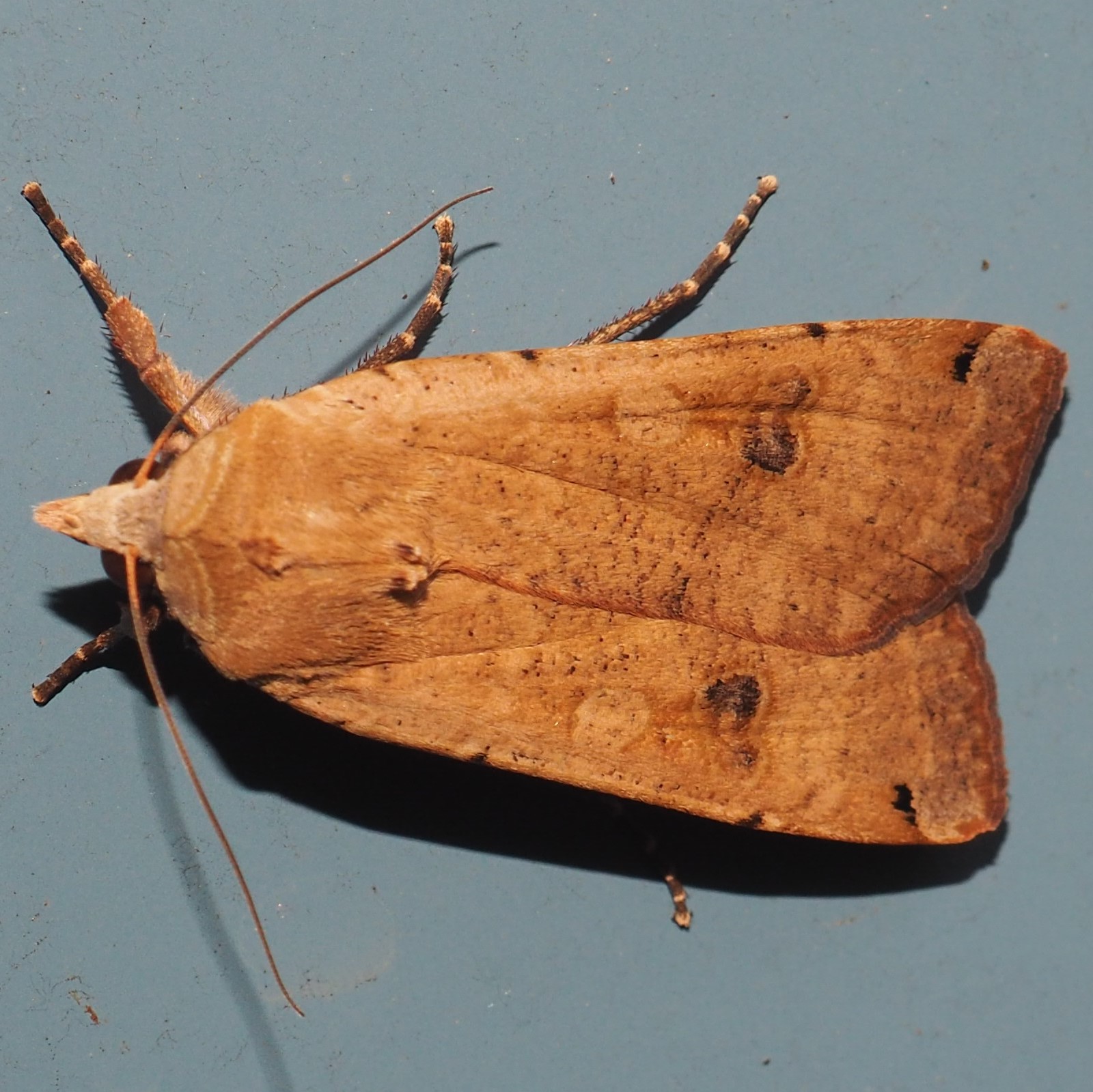
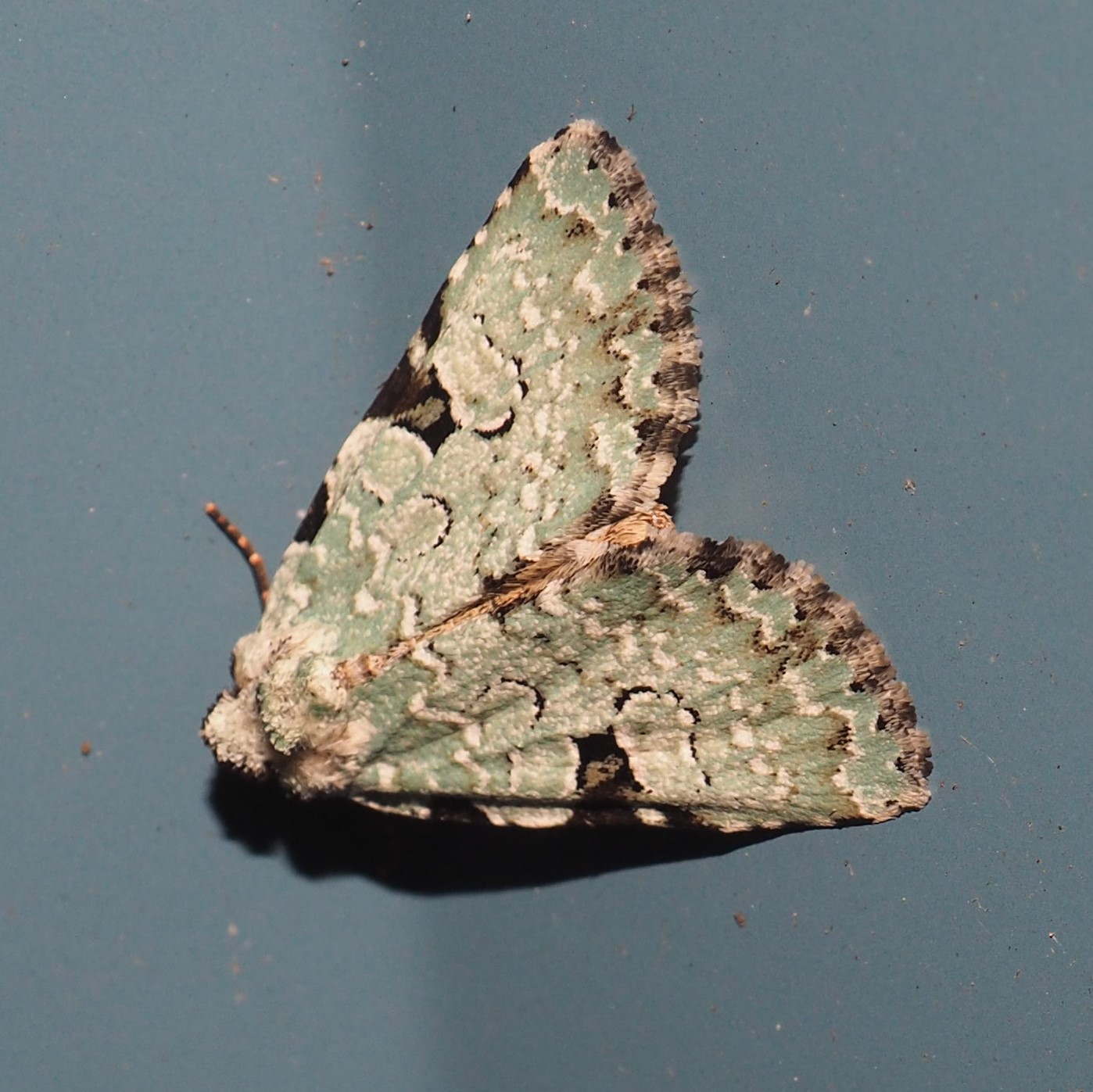
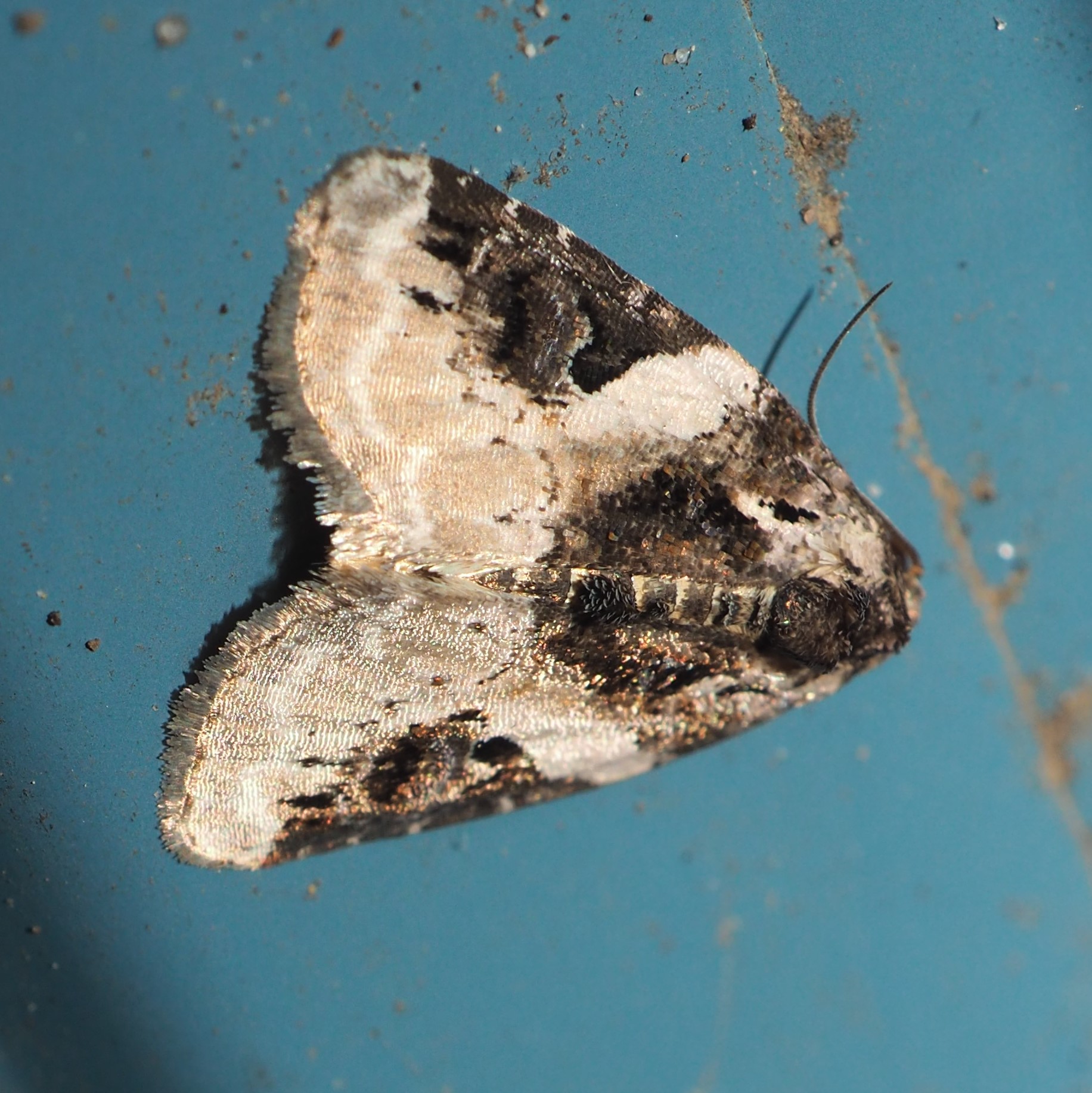
Here are some of the unidentified ones. Second is one of the tiny Eye Cap Moths, and Third is one of a group of little moths that all look similar.
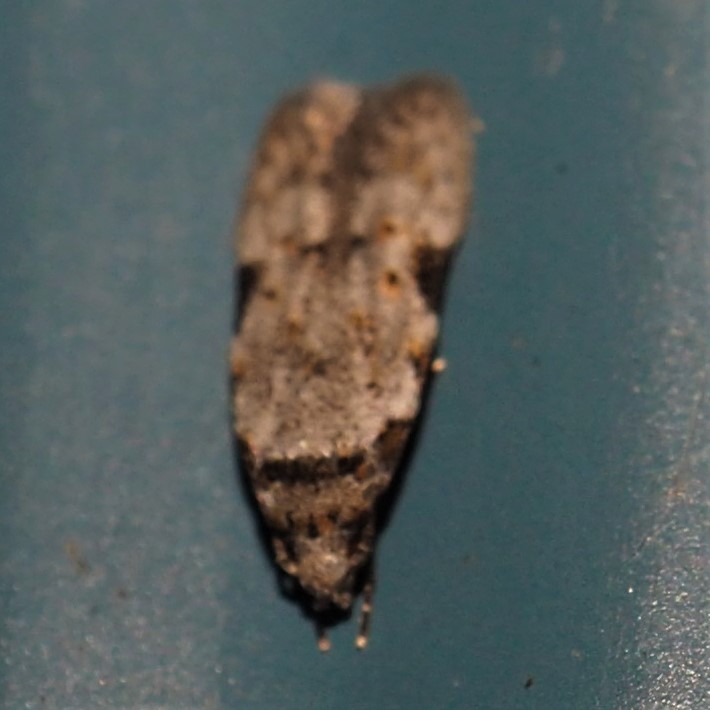
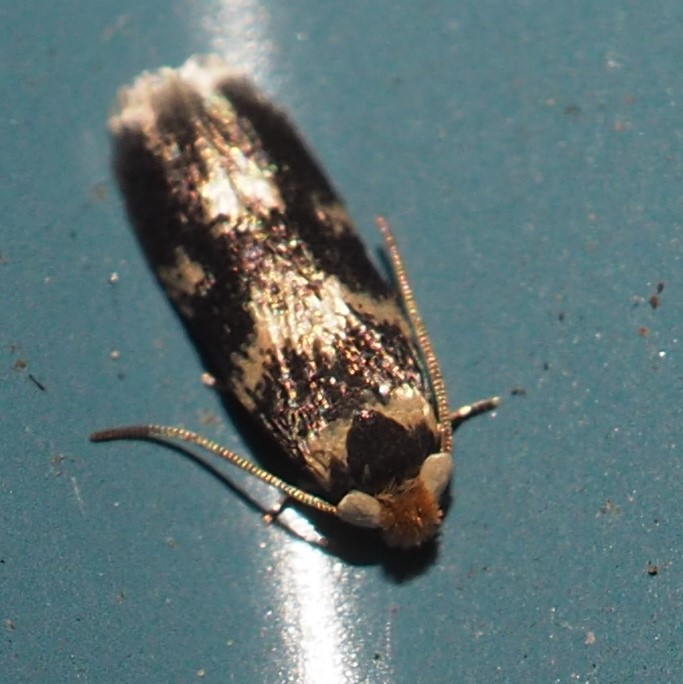
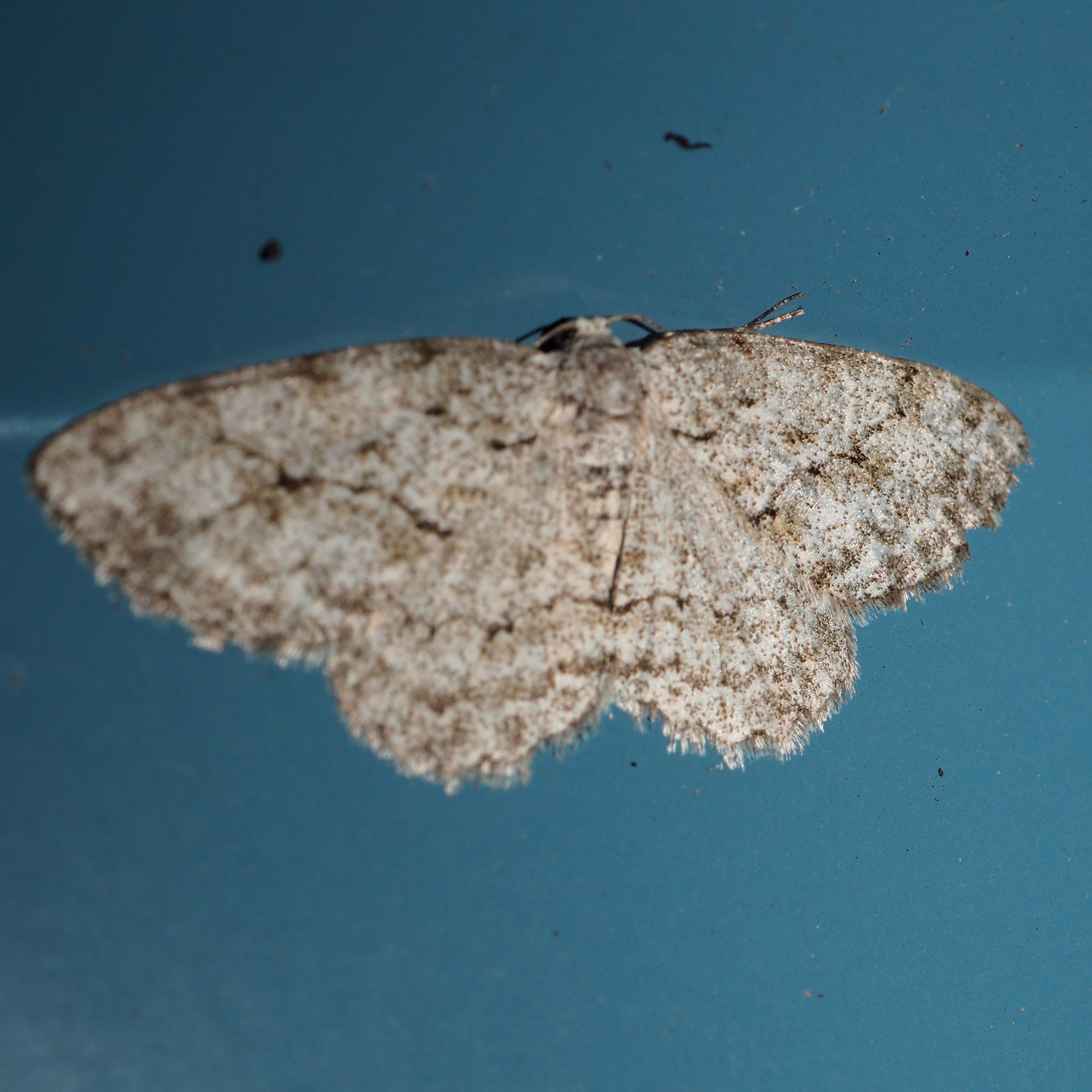
I think we really need some refreshment, like a walk among the flowers. Many of them are finished blooming, but some have a singleton blossom that blows up to a sweet picture. As we head out the front door, we hear tiny chirping and see that the Mother Robin must be off on a hunting expedition. There are actually at least three babies but it's hard to see number 3 since the nest is almost directly overhead. The spiderwort puts out ONE flower per day per stem, but that ONE is just a gorgeous bluish-purple. The Common Day Lilies bloom fiercely, with many huge flowers at once.
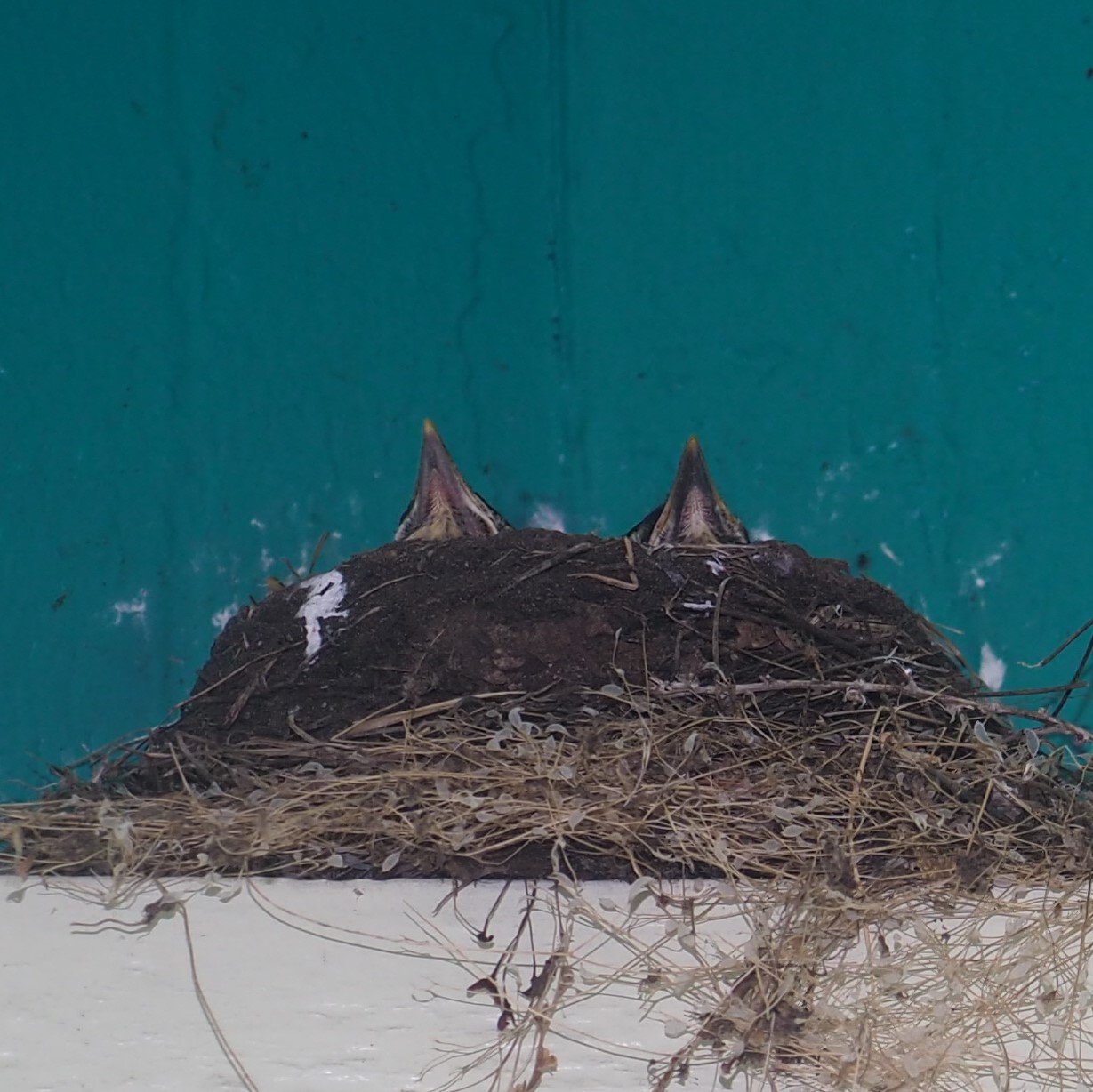
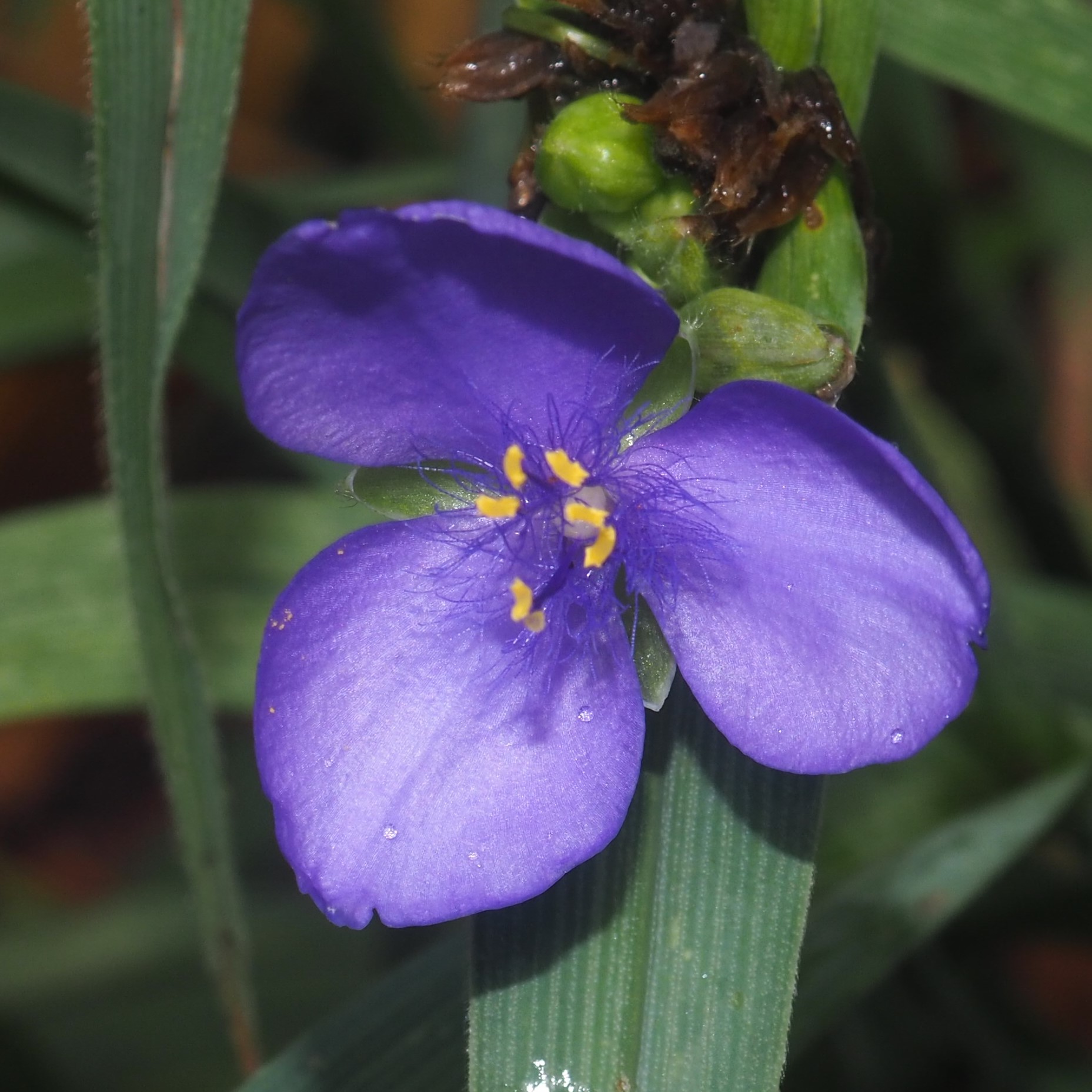
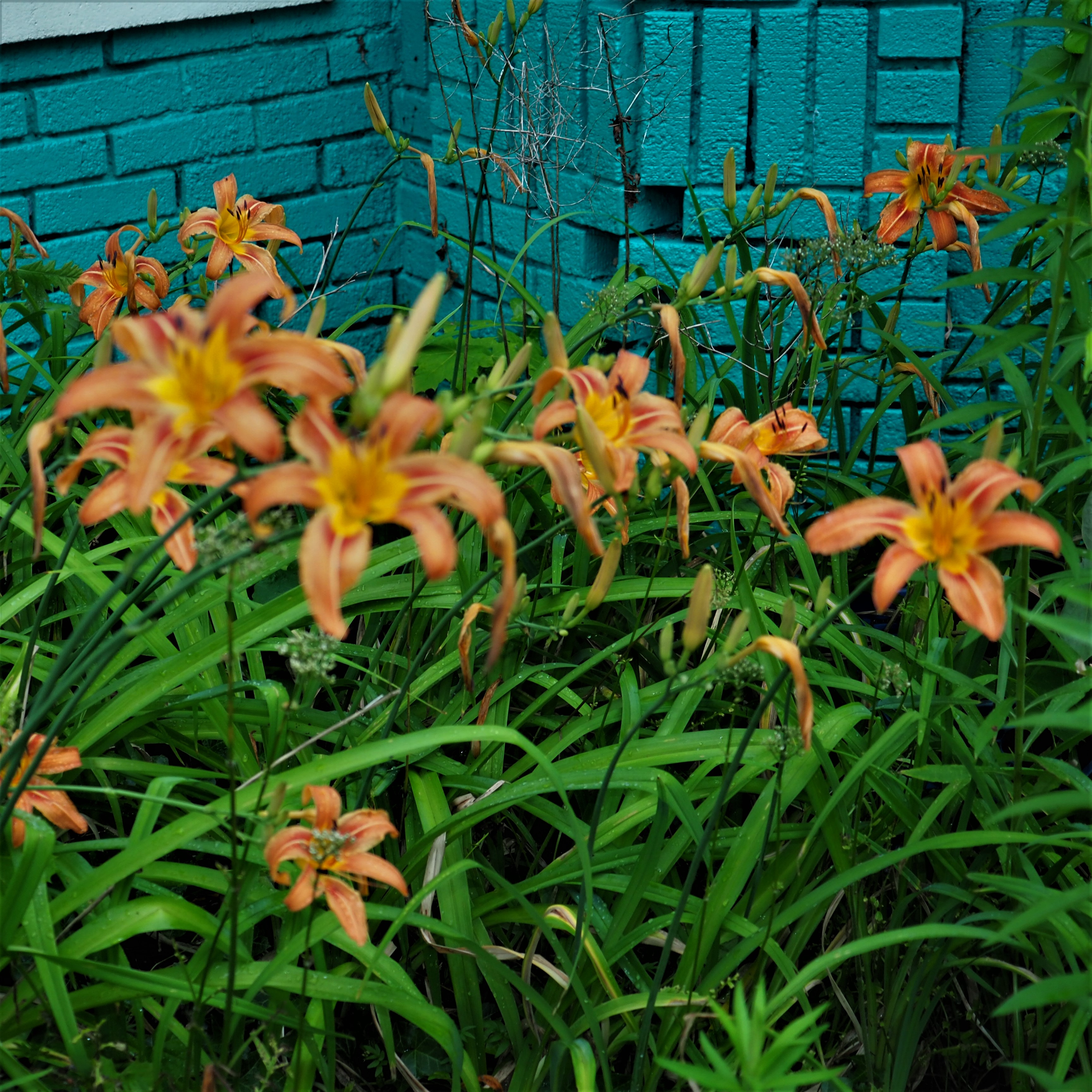
Here is a single Common Day Lily. In the side yard, here is a Stella d'Oro day lily. And next to it is a small patch of Honeysuckle.
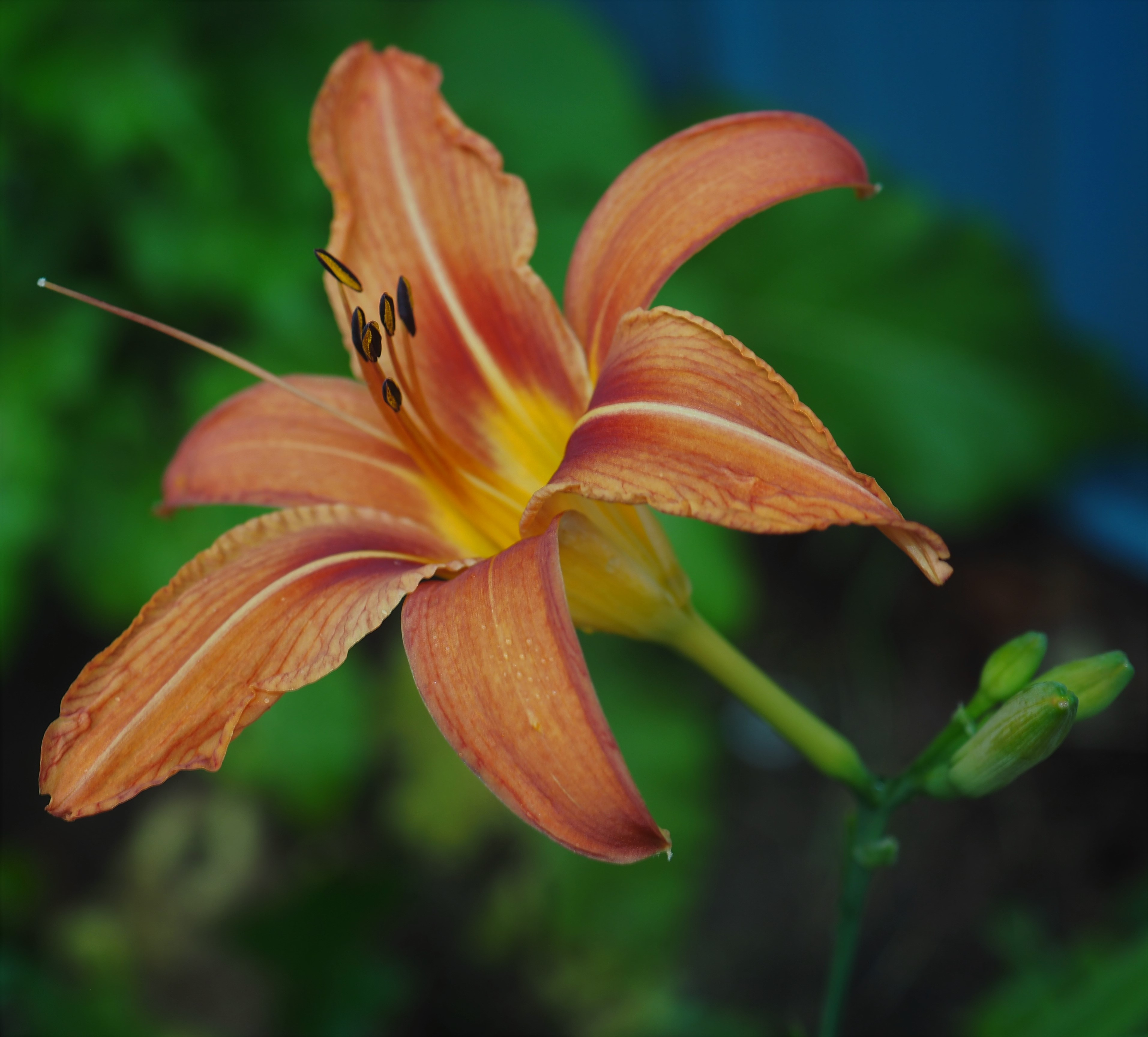

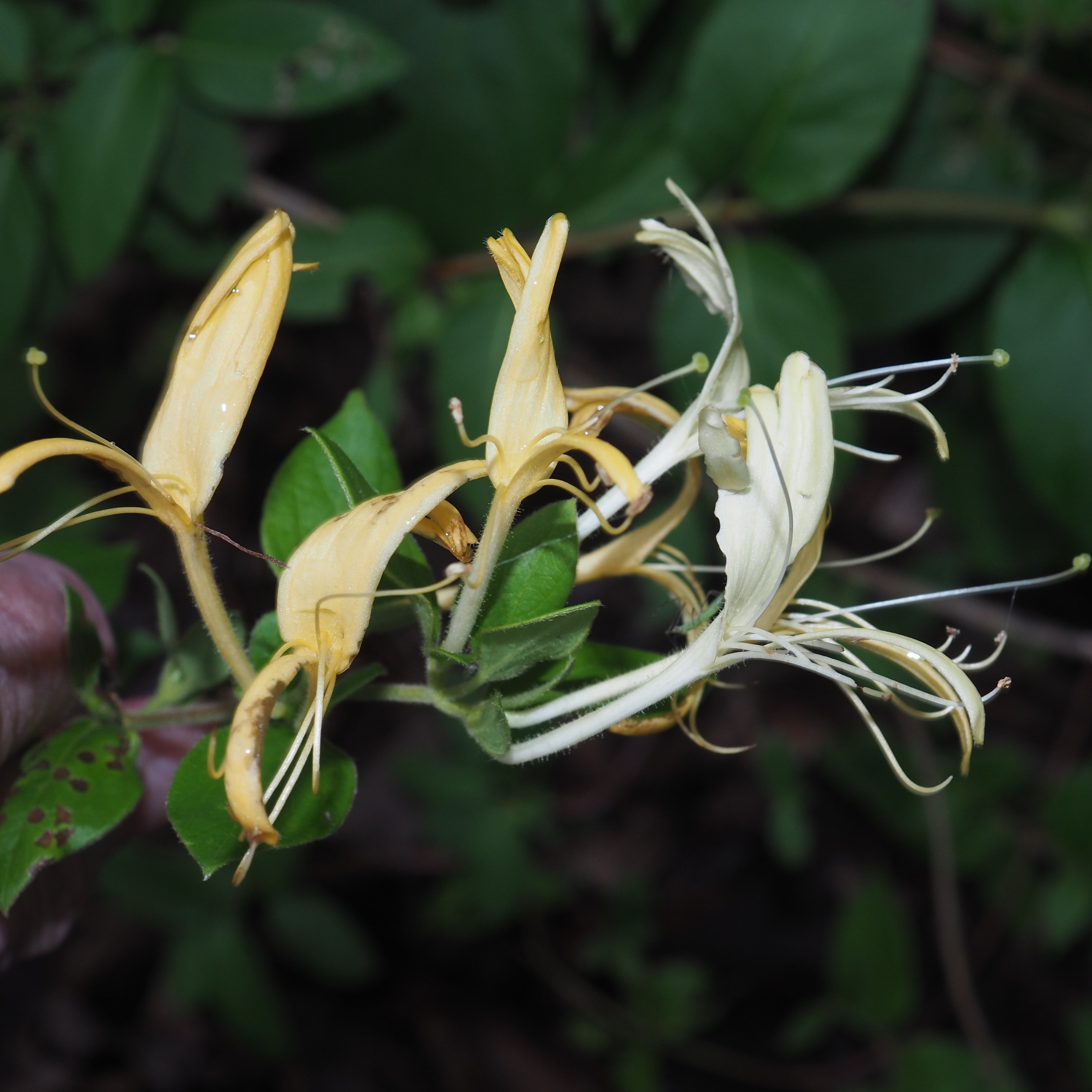
Crossing the driveway, see how gigantically tall the Blackberry vine has gotten. The berries are growing slowly though. Here they are dripping with the rain. But the day before the endless rain began, I had a small sampling of the Black Raspberries. If they will recover from the wet, they promise to be many, huge, black and sweet.
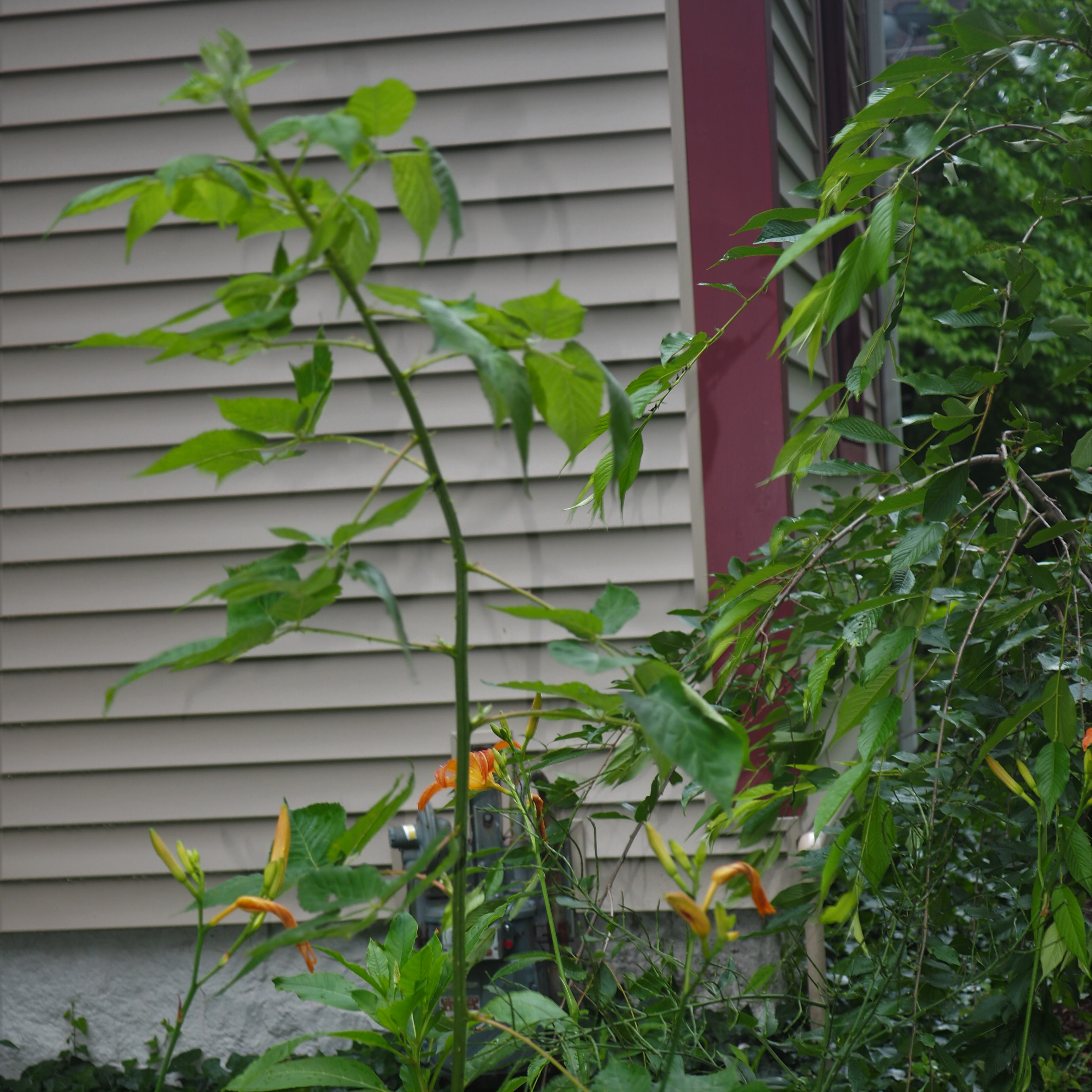
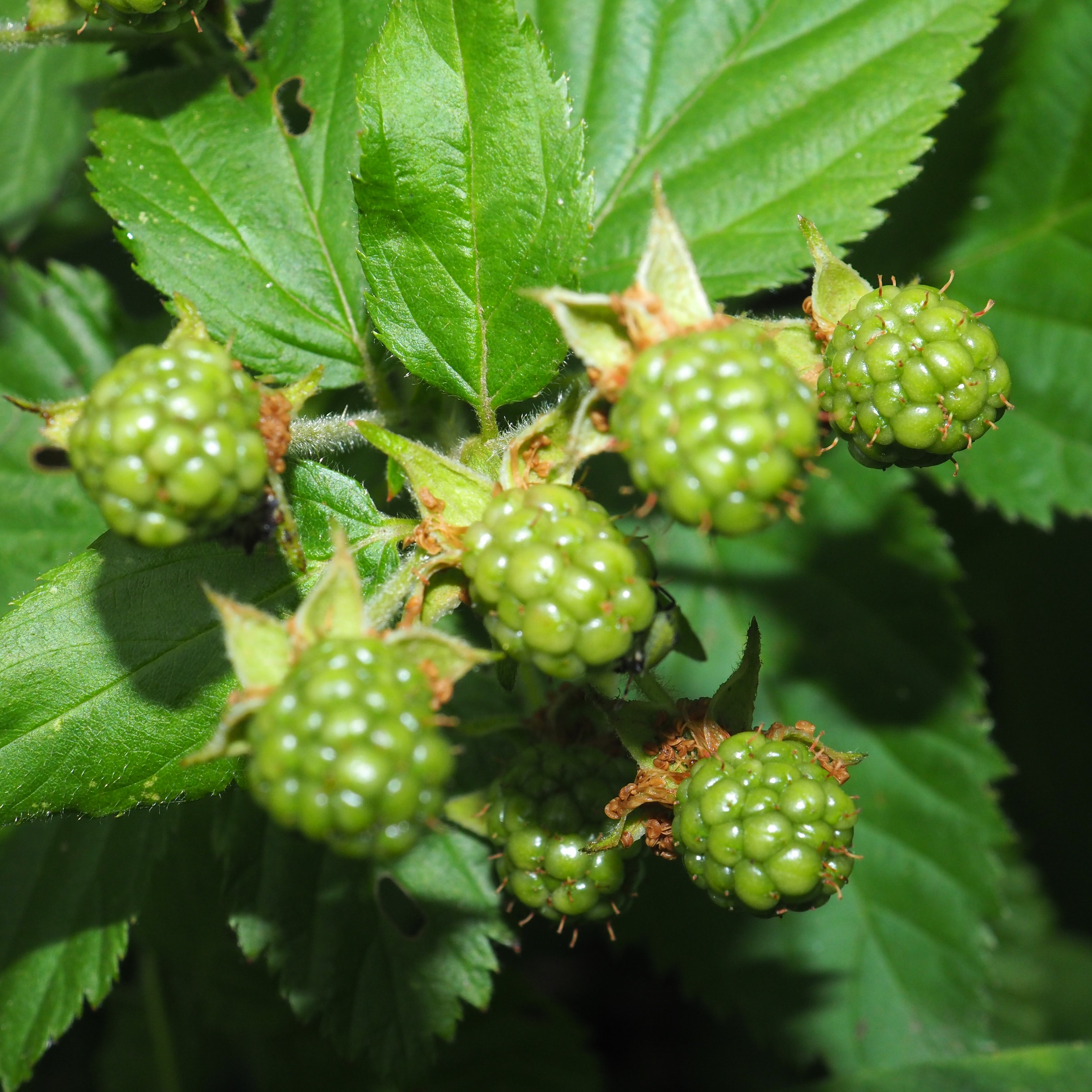
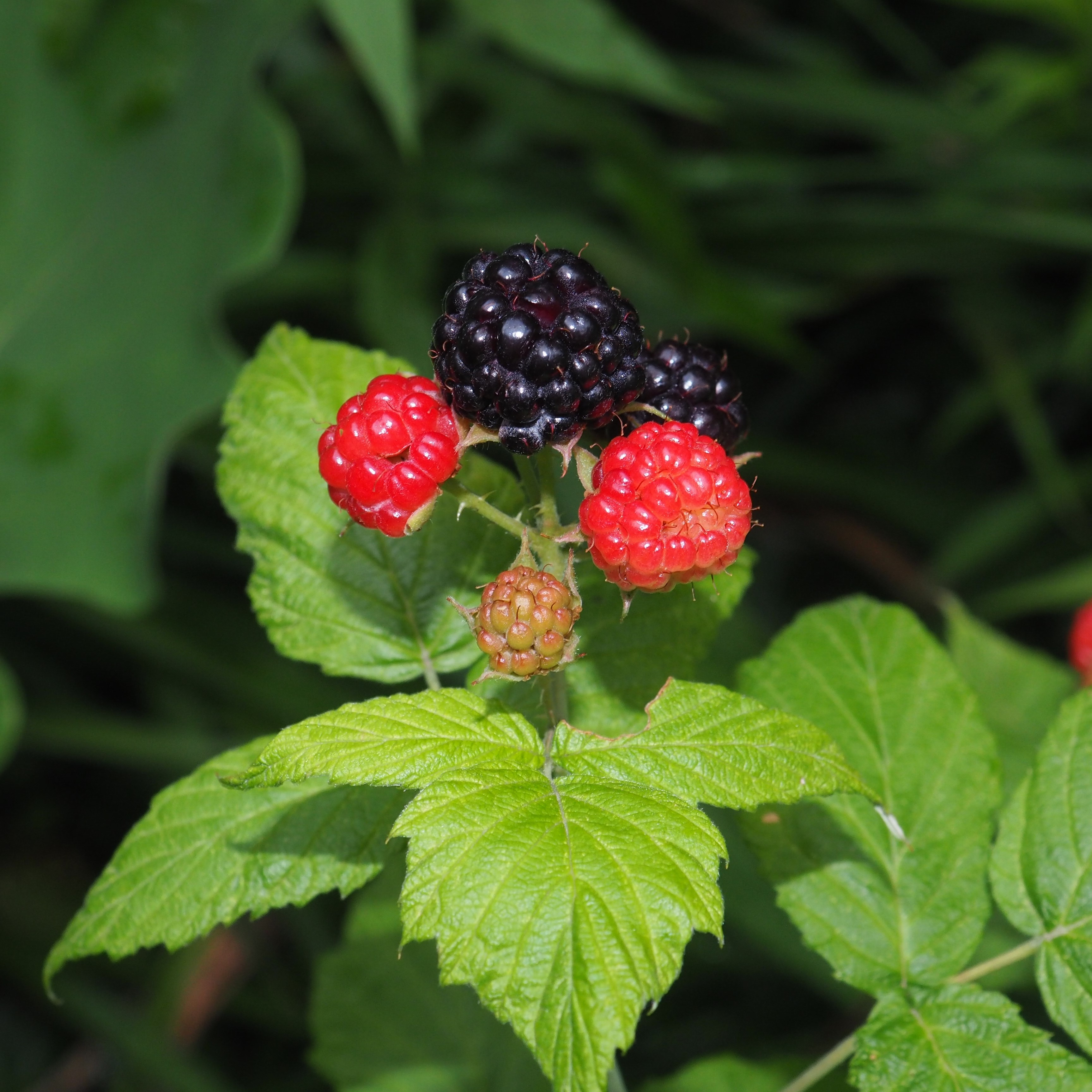
Walking back through the gate toward the back yard, we pass budding Wild Grapes. The Trumpetvine is becoming covered with buds. In the back yard itself, the Fleabane has grown and spread.
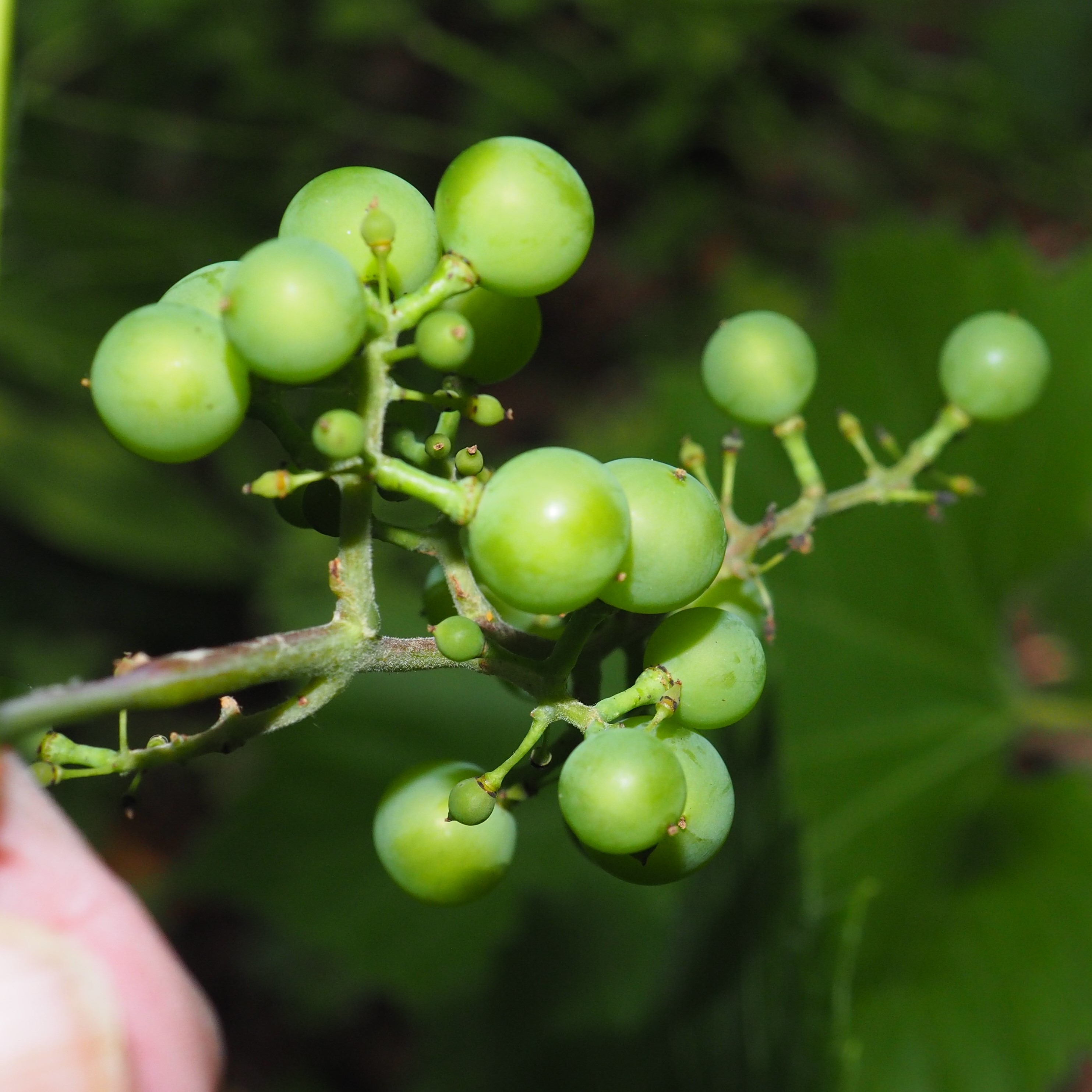
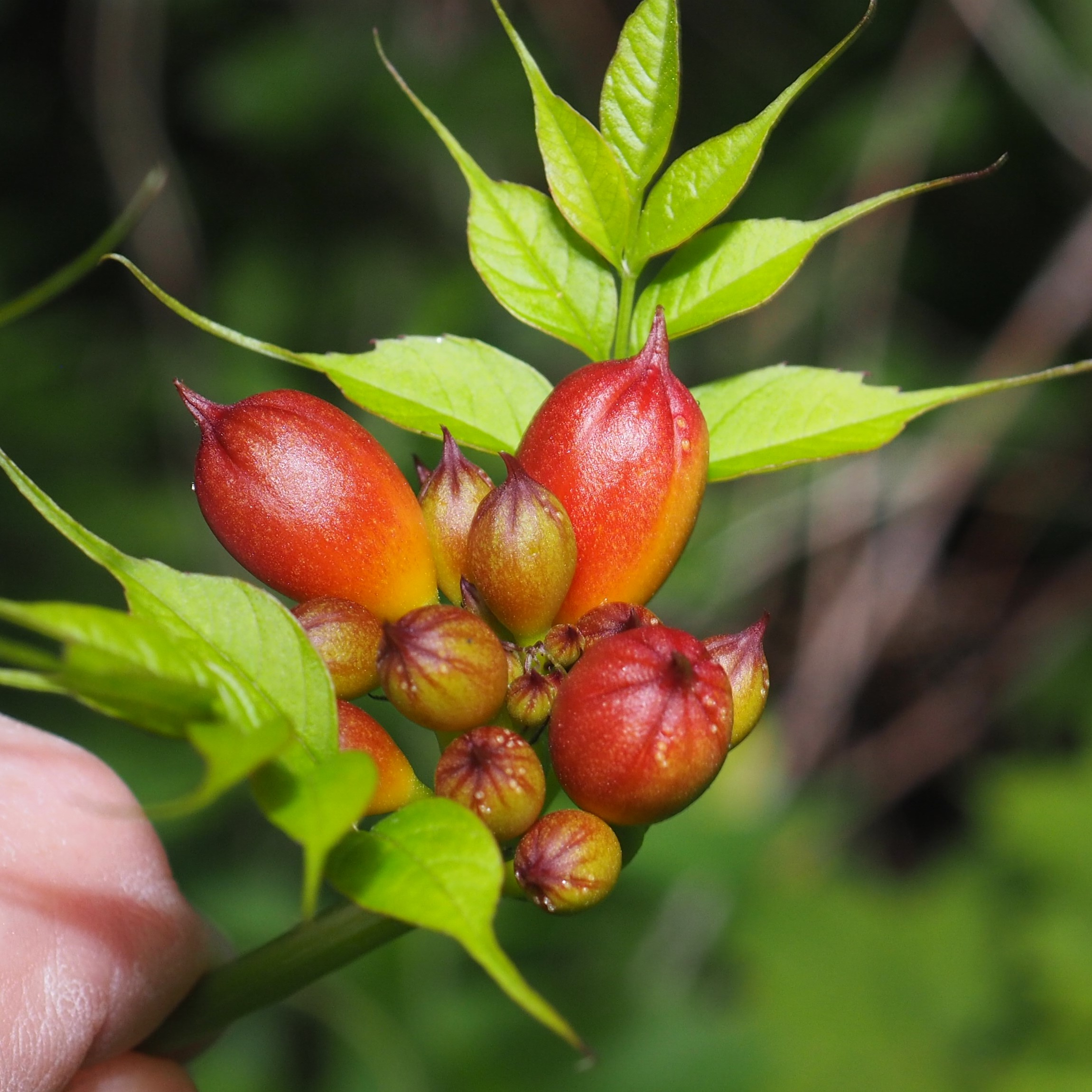
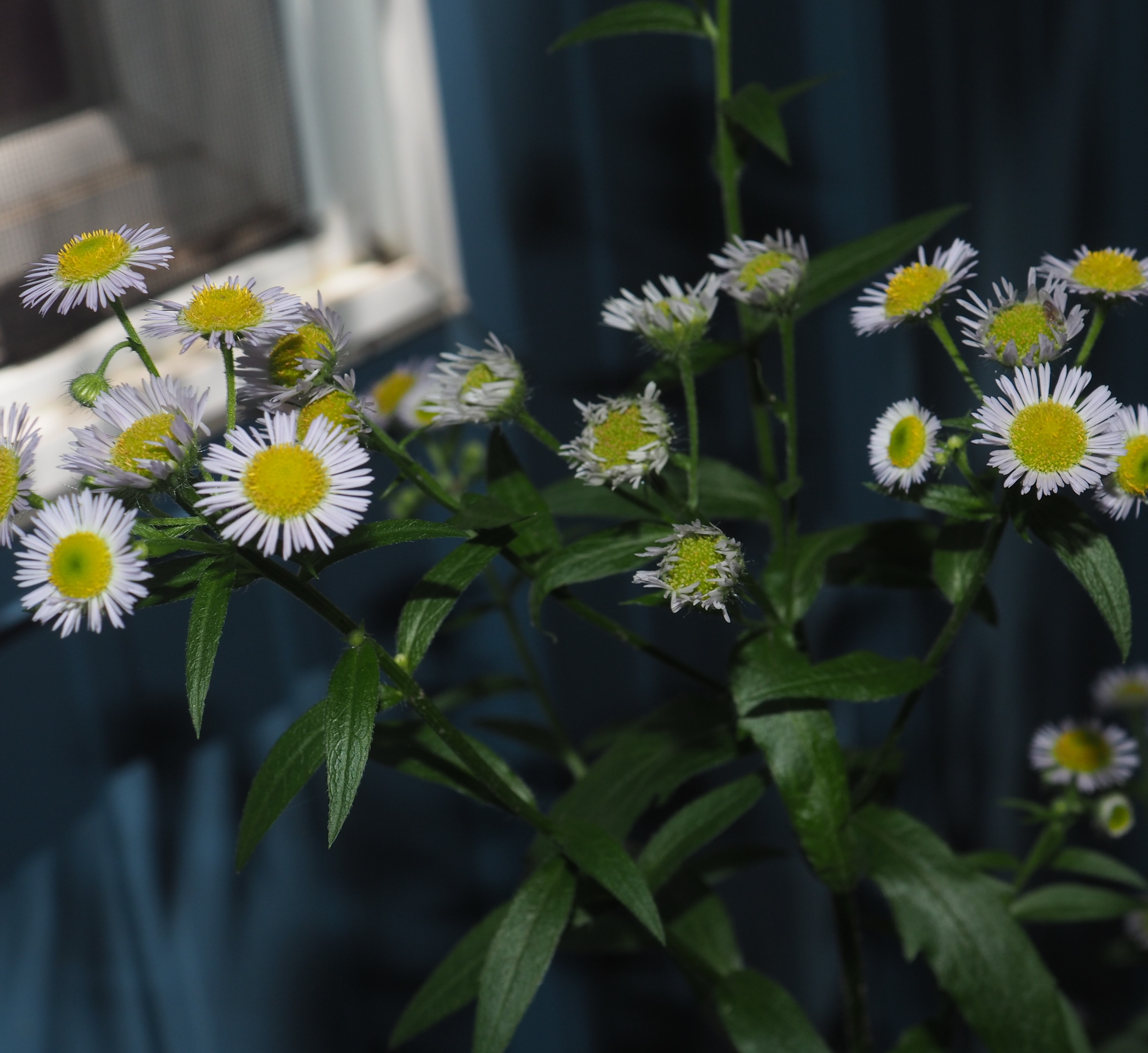
As we aim toward the Spiders, we first revisit the tinier red or orange Mites. They have been on all four walls of the Woodshop, and some in the vegetation (like number 2).
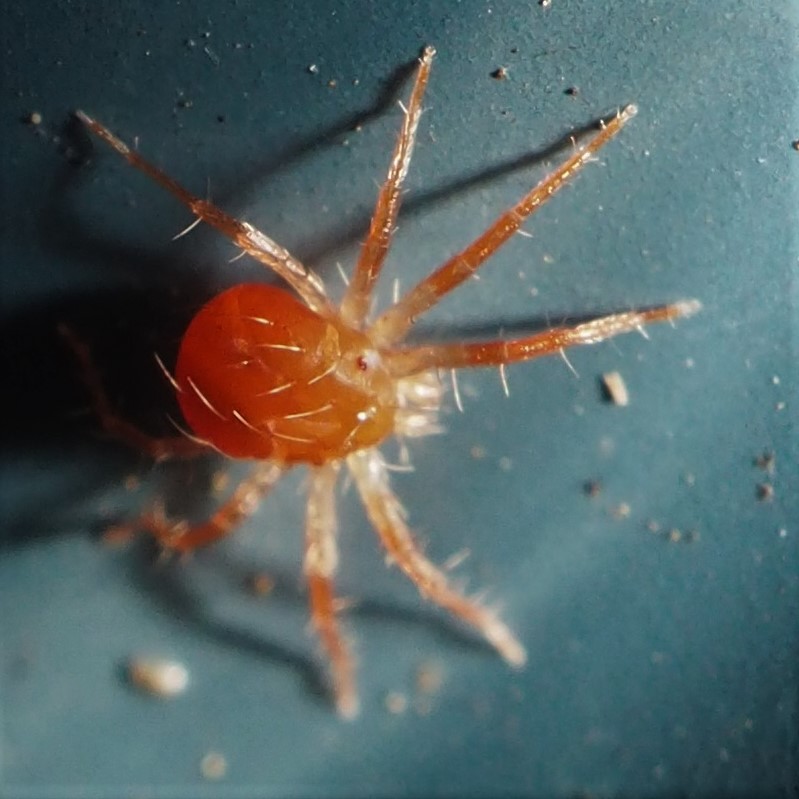
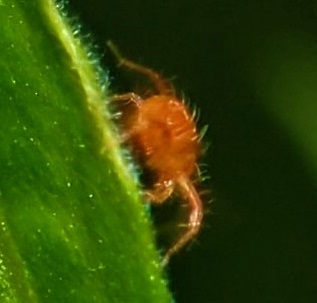
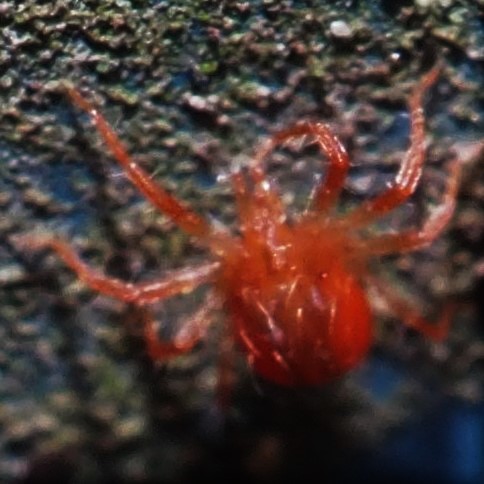
The Harvestmen have been all over the Wall and also into the greenery. But I only got a few pictures. In picture 2, the Harvestman seems to have harvested a Pillbug. I've hardly ever seen anything try to get through that scaly coat. Oh dear. I'm never sure where to put the Slugs, which have been all over the past few rainy days. They spook Spooky by climbing into her food when she eats outside. They mostly seem to be one kind.
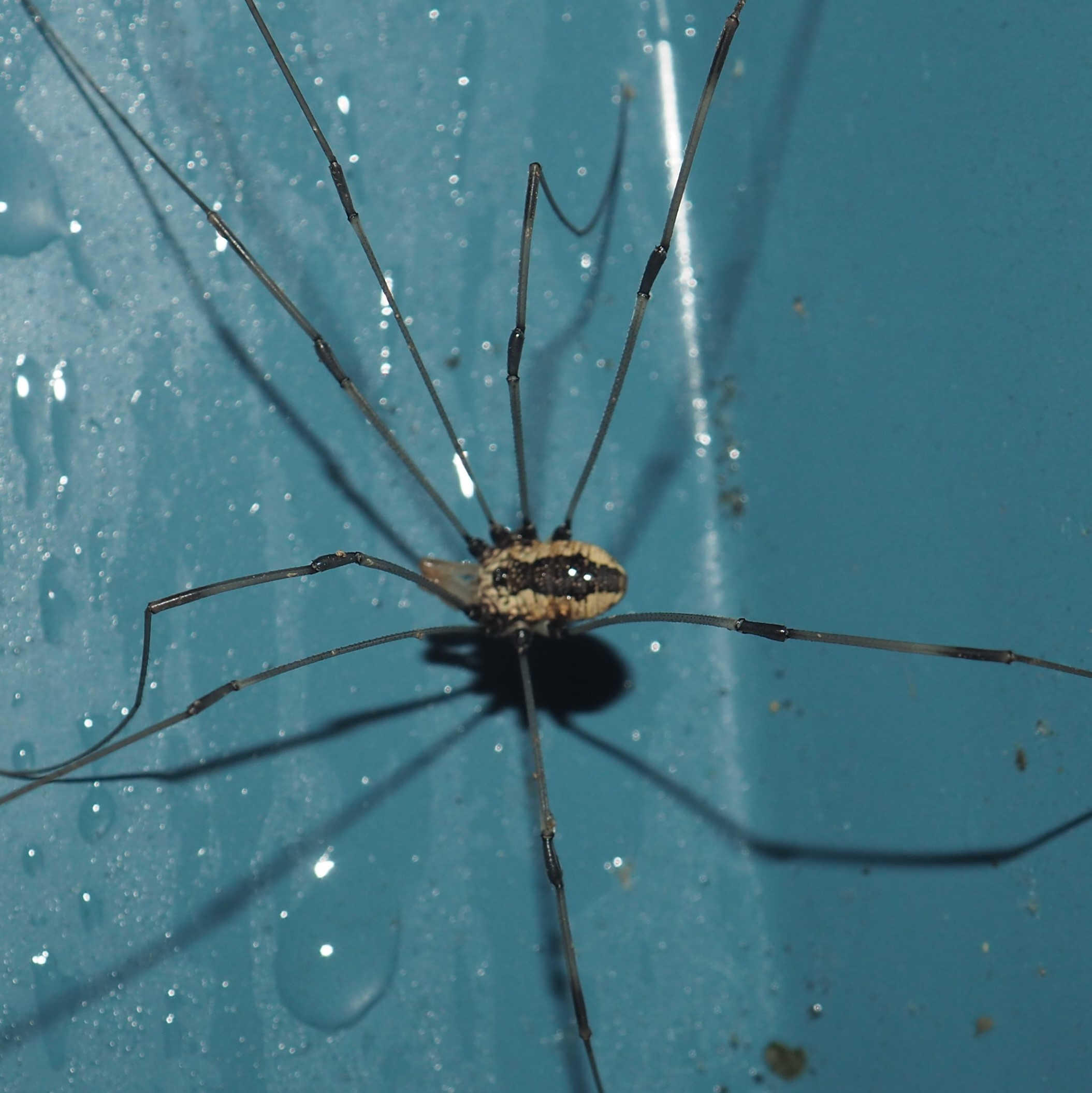

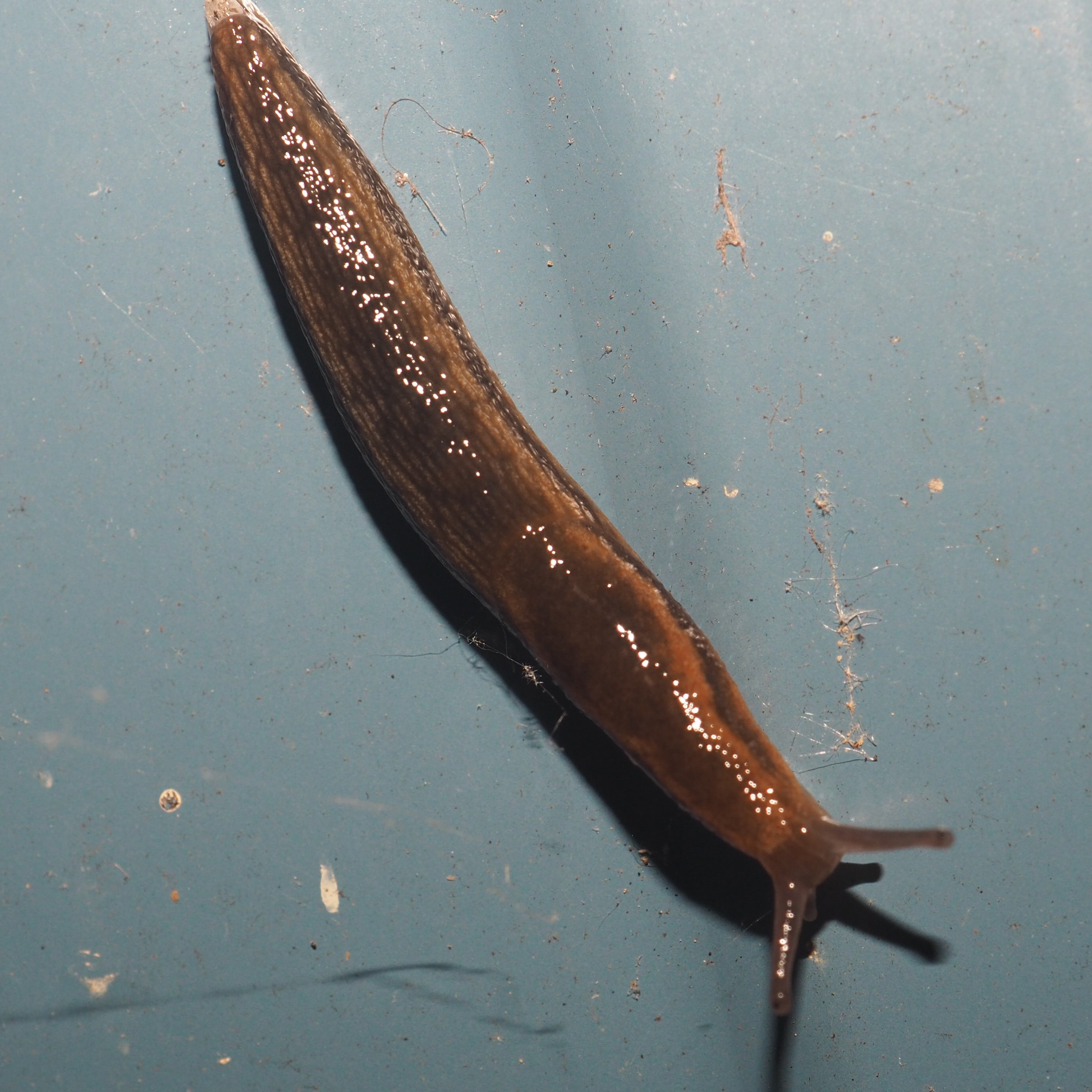
Here we are with the Spiders! Some of them too seem to be wearing their red suits. But Spider 1 was seen on June 26, and Spider 2 on June 22. My notes say Spider 2 was tiny.
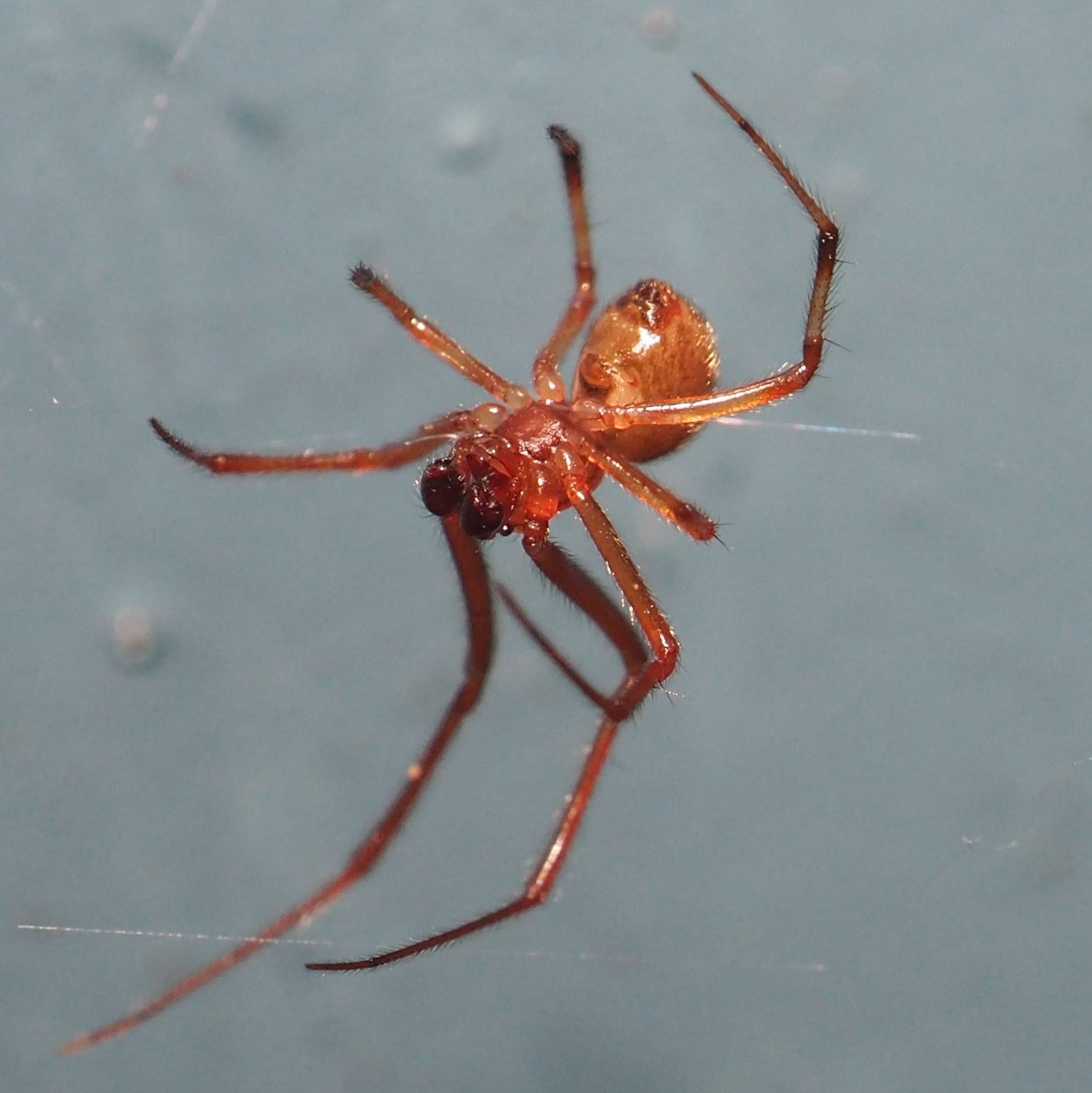
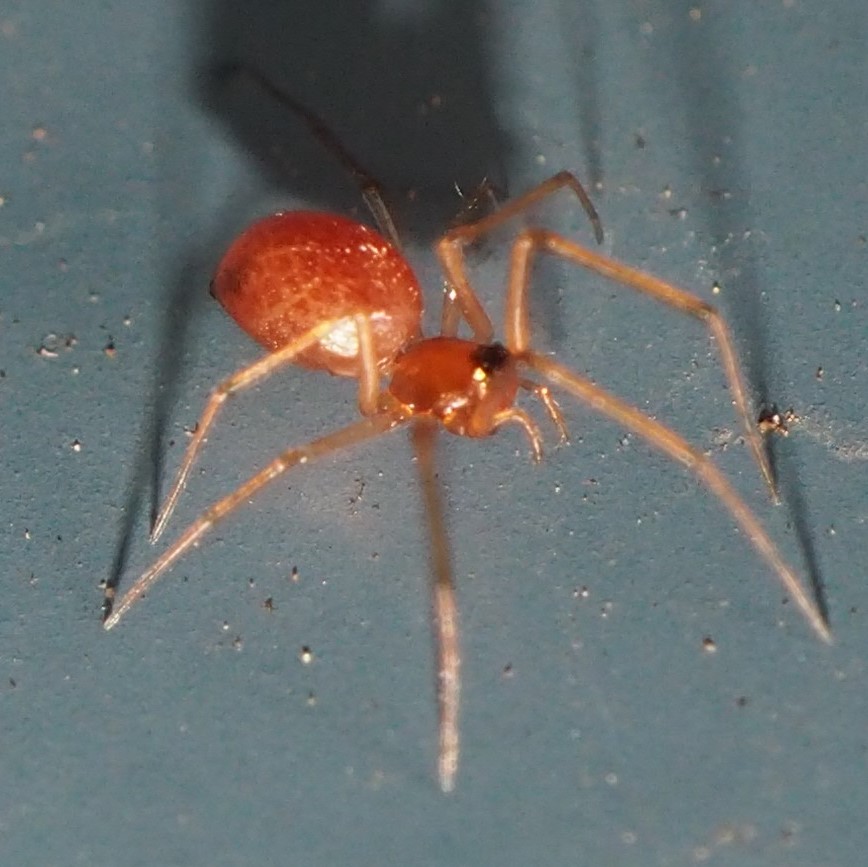
Here are some of the many Cobweb Spiders.
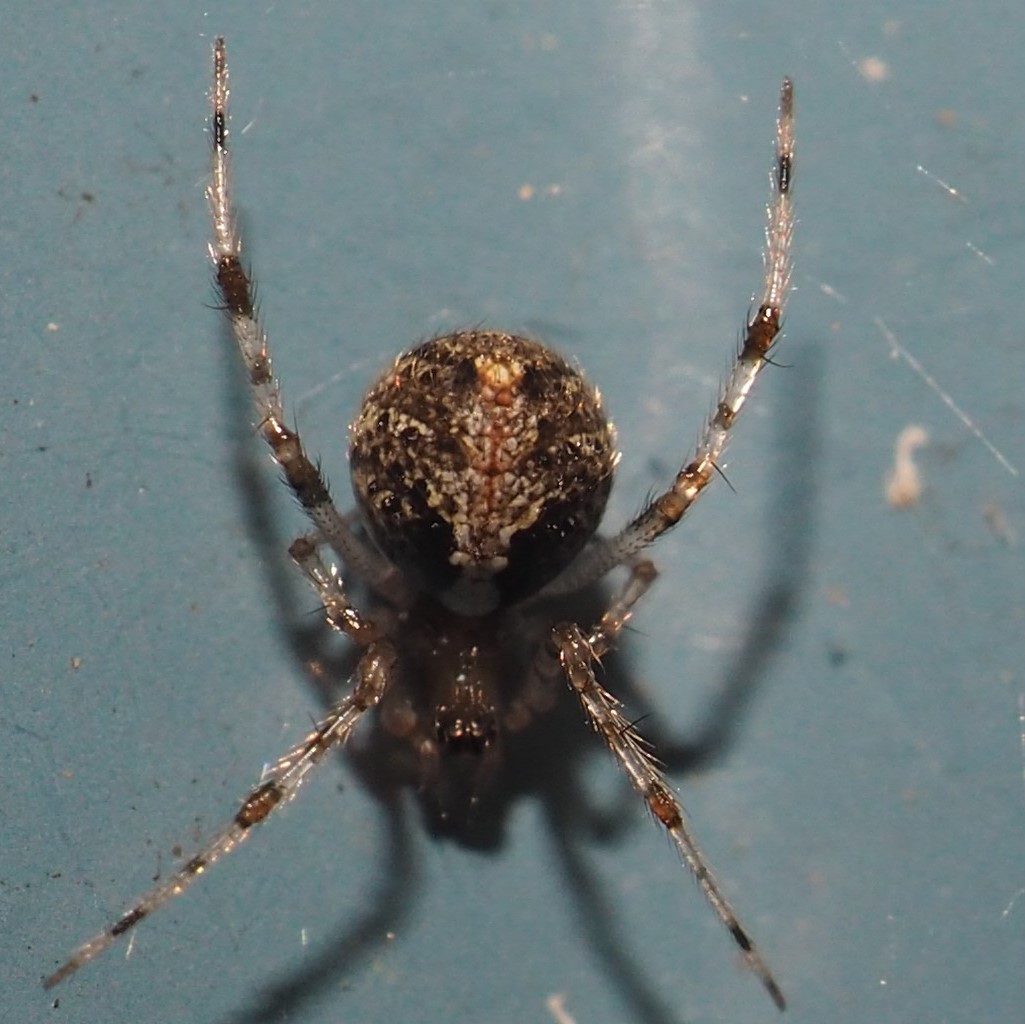
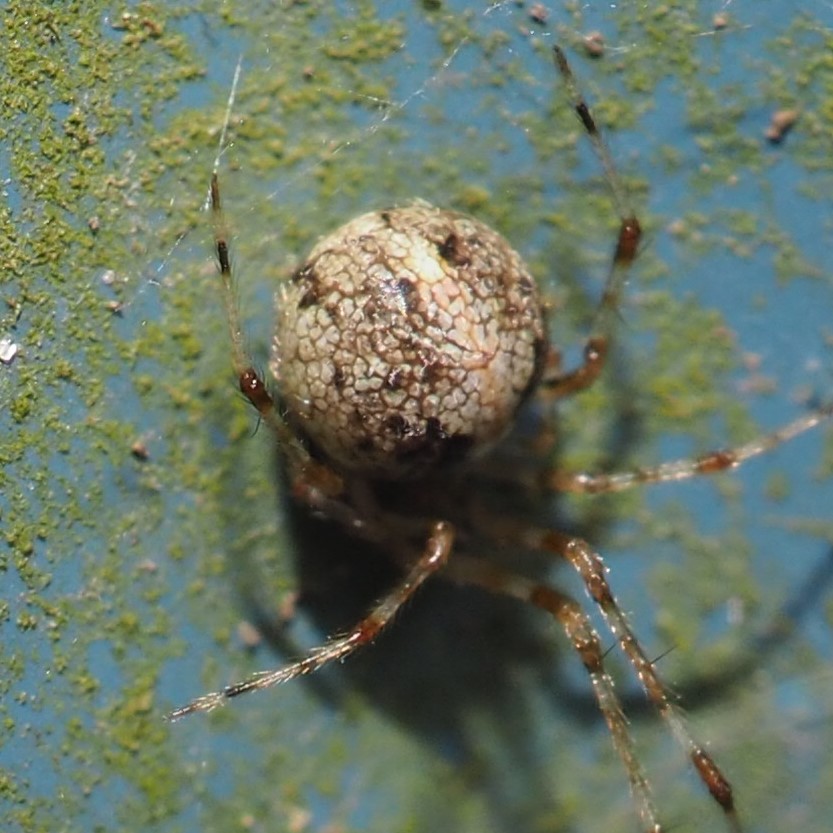

This is the Euryopis Spider, resting on a shop nut. Then a strange thing - a five-legged Spider. I think now that it is a Spider, maybe it is a Nursery Web Spider. Third is some sort of Crab Spider. When I first saw it I thought it must be some kind of Bug, but that was because I couldn't see the whole thing, but rather just a jug. CLICK on the Spider to see what I THOUGHT I was seeing. Arachnojoe on iNat said it is one of the large Crab Spiders.
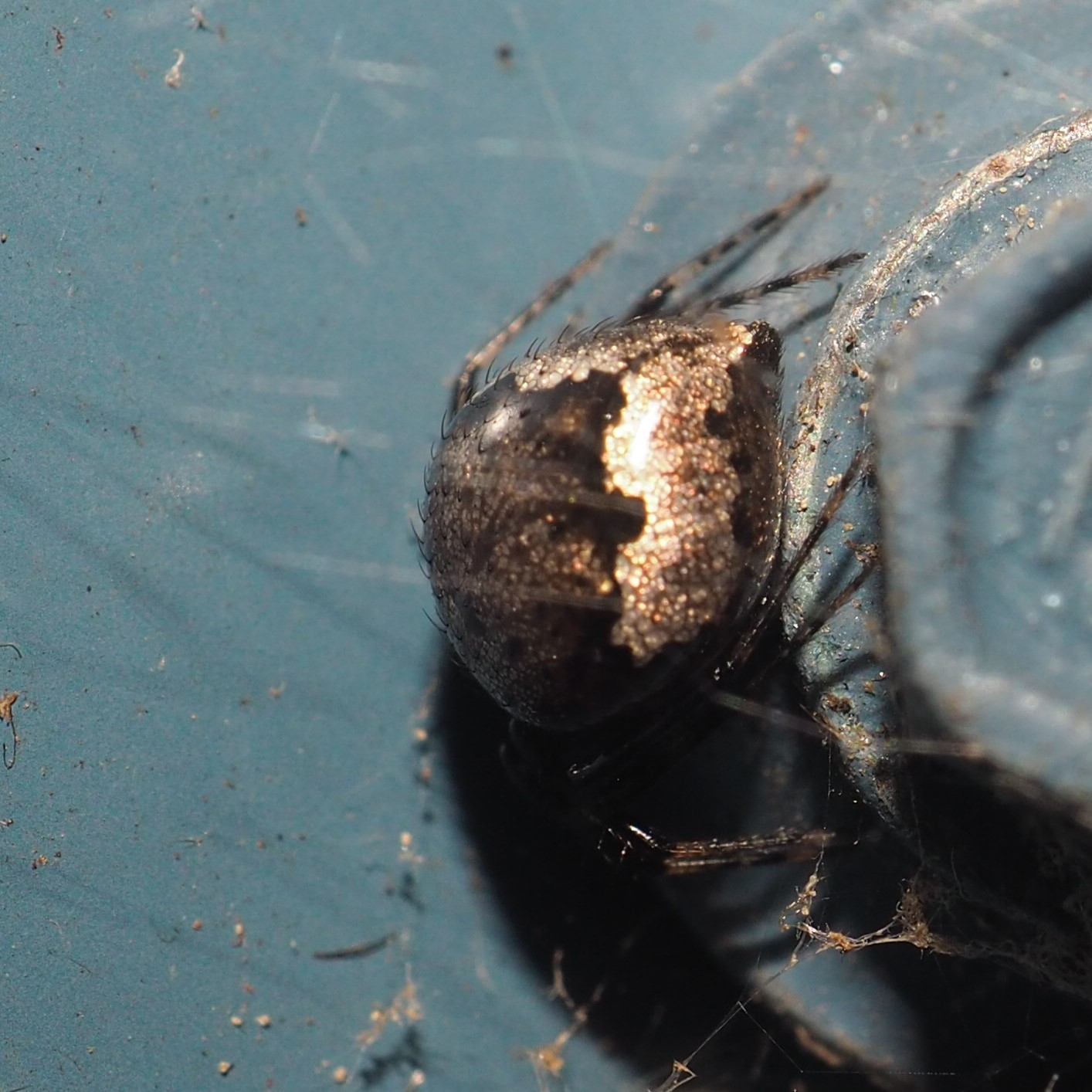
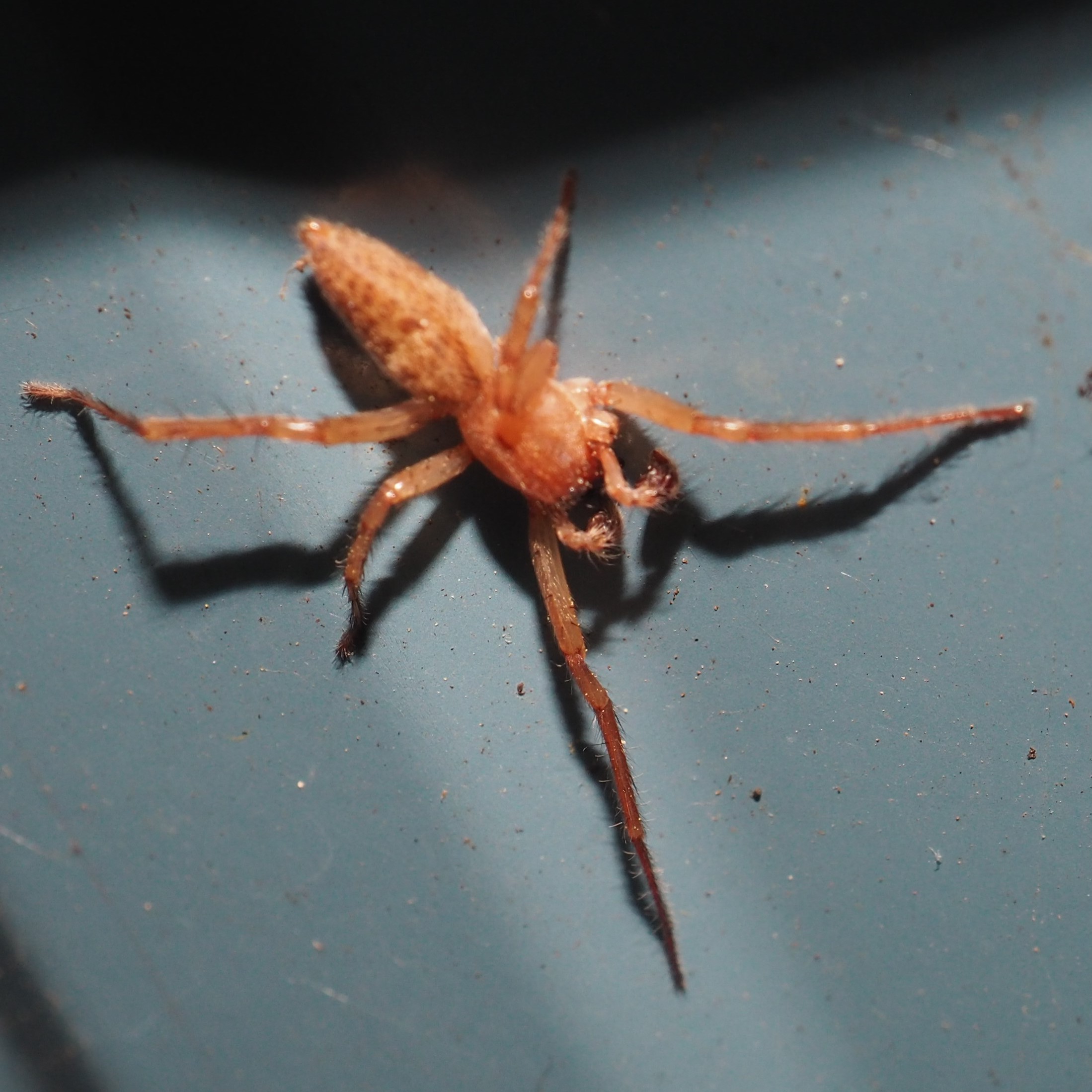
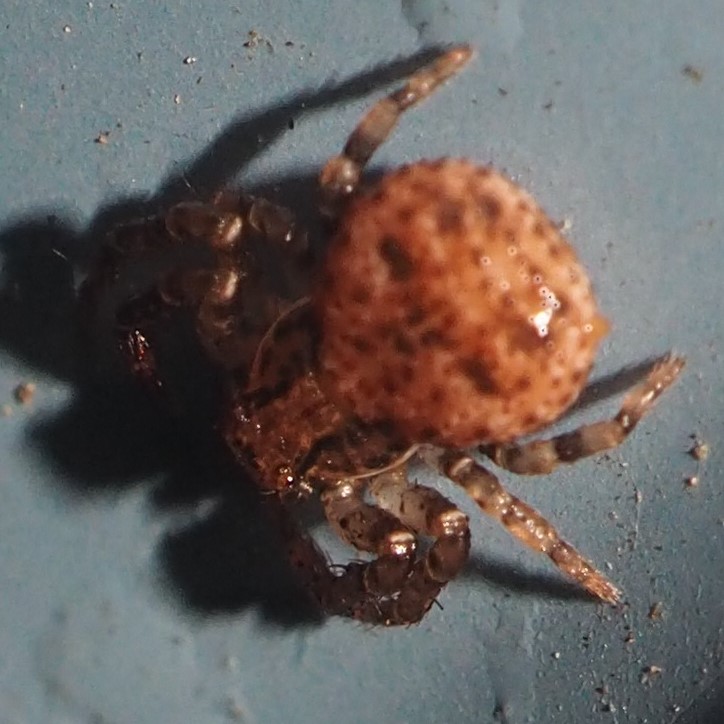
This first Spider is in the same genus as my favorite Jumping Spider, Naphrys pulex. But it clearly isn't N. pulex. Spider 2 is. Spider 3 is a very interesting one, with its abdomen in red and yellow spots.

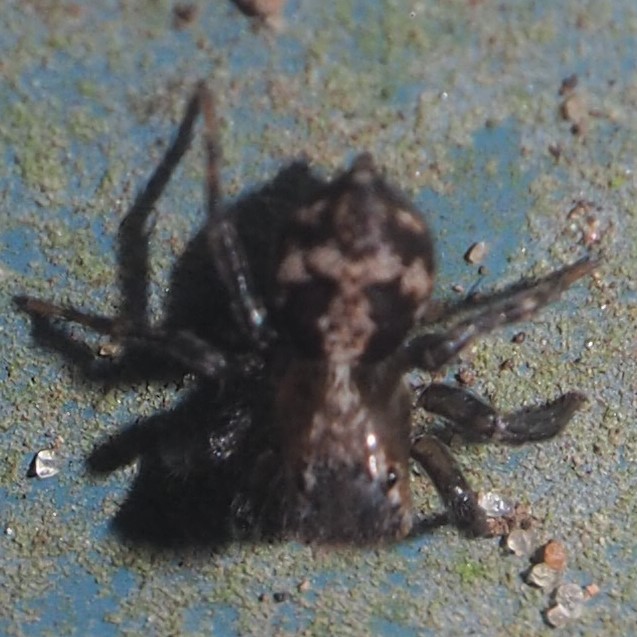
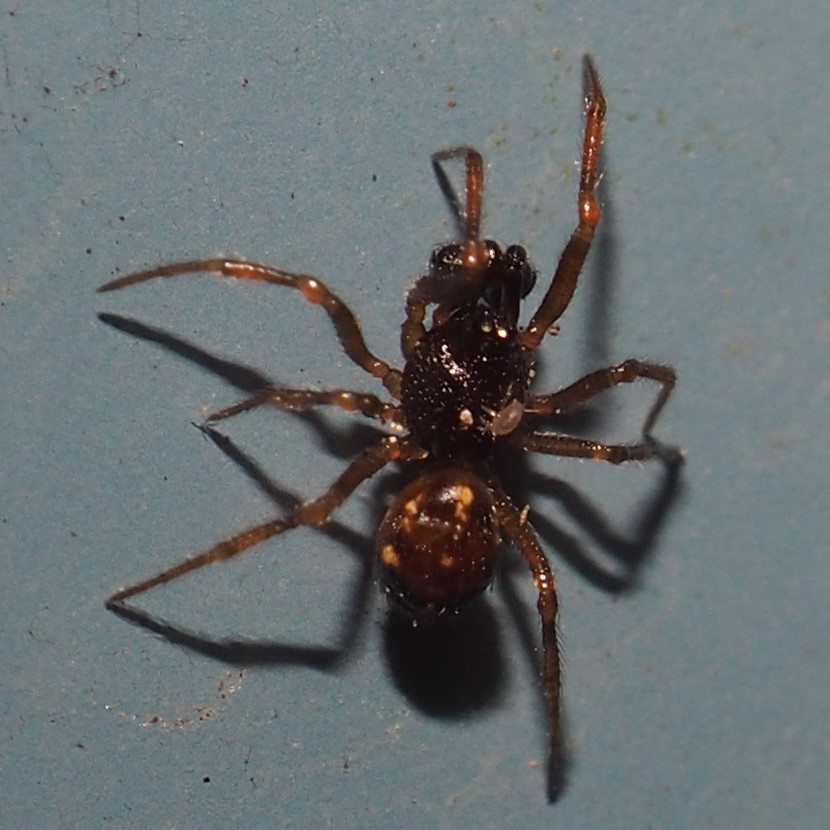
I like this little black Spider. The second seems to be pinkish-white - I don't recognize it, but it's pretty. Number 3 I thought had caught an Ant, but the big round bottom doesn't look ant-ish.
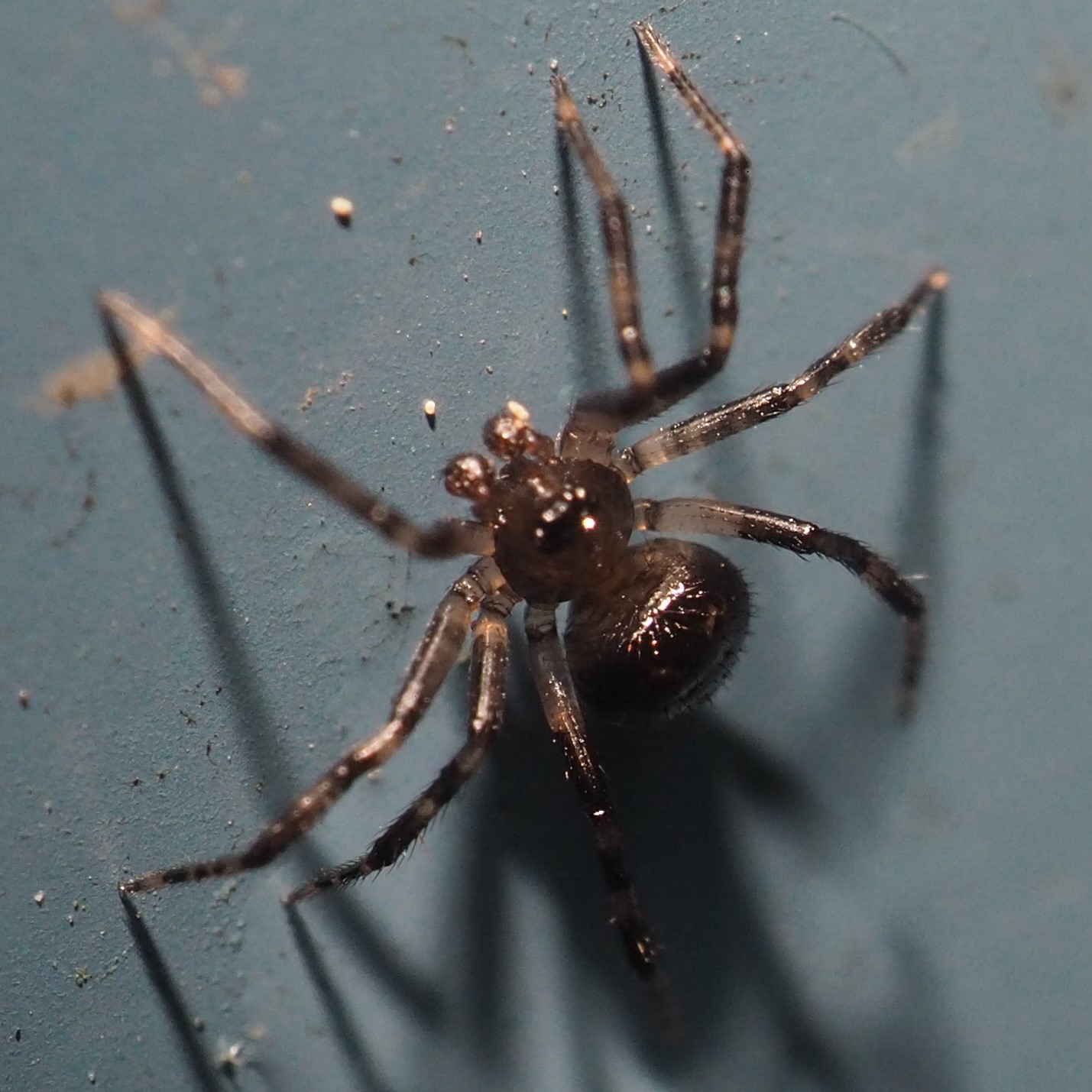
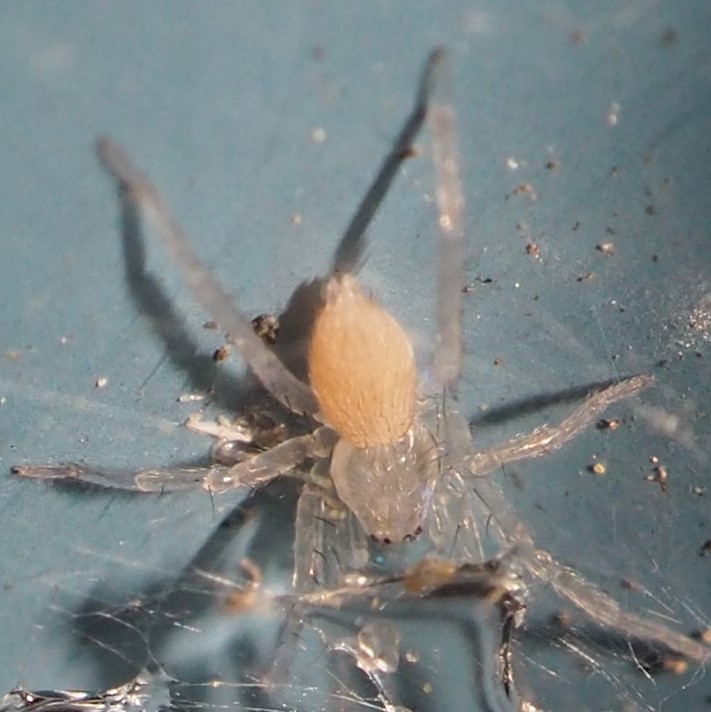
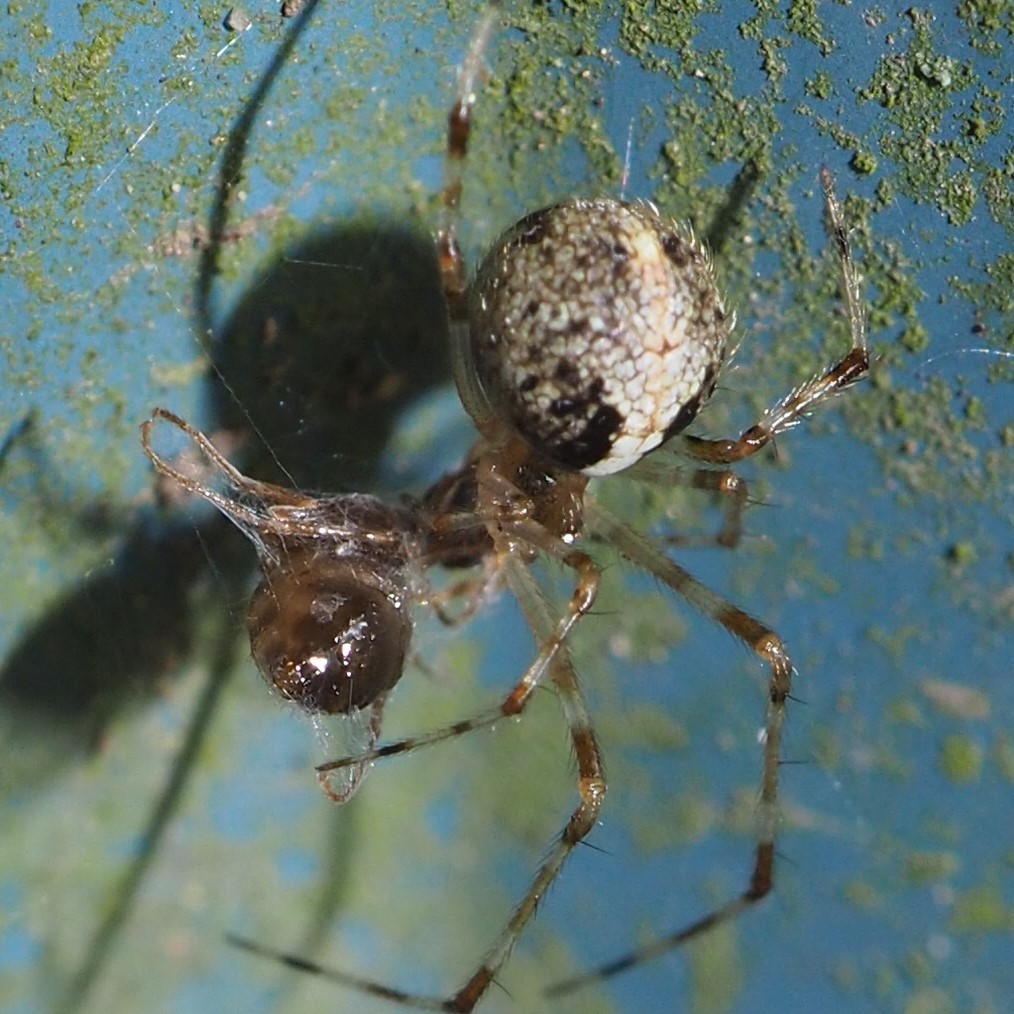
We had a few Wasps. This first one is a Chalcidoid Wasp. They tend to be more iridescent. The second looks like an Ichneumonid. Third is a true mystery and was playing in the mud beside the shop.
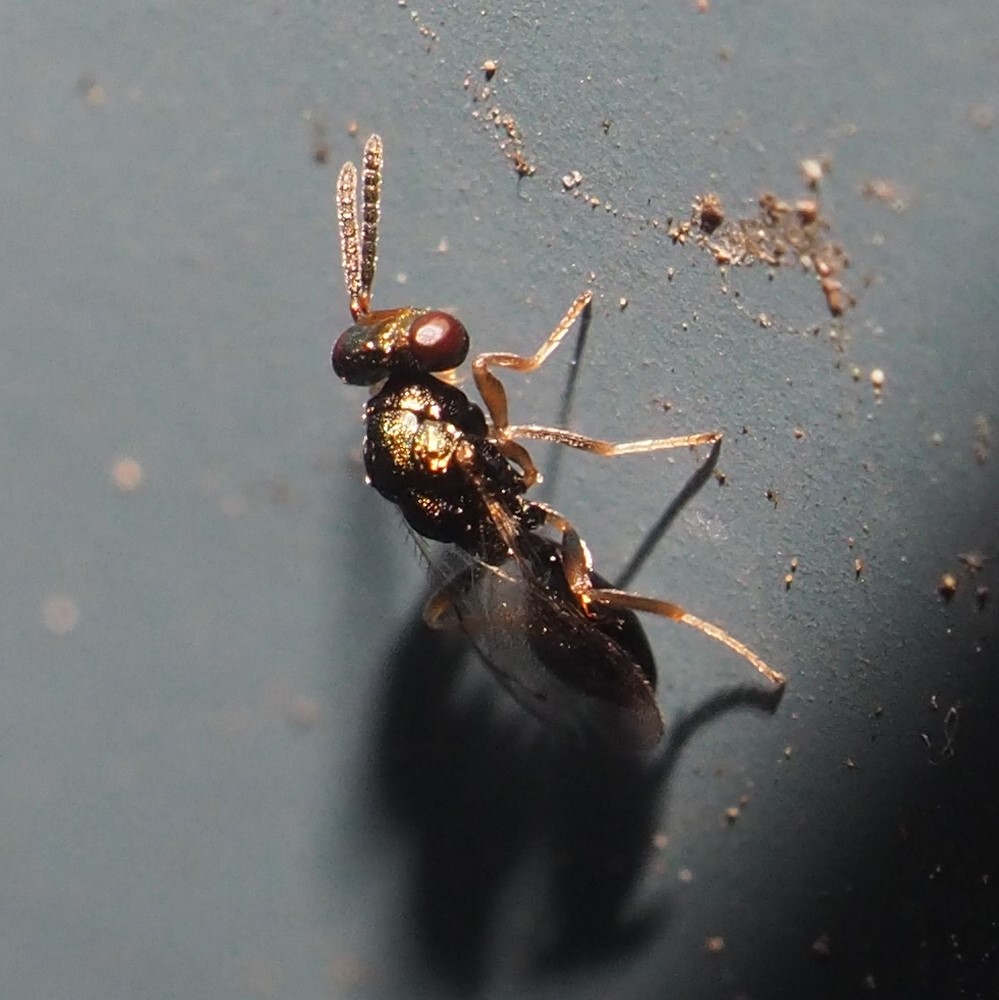
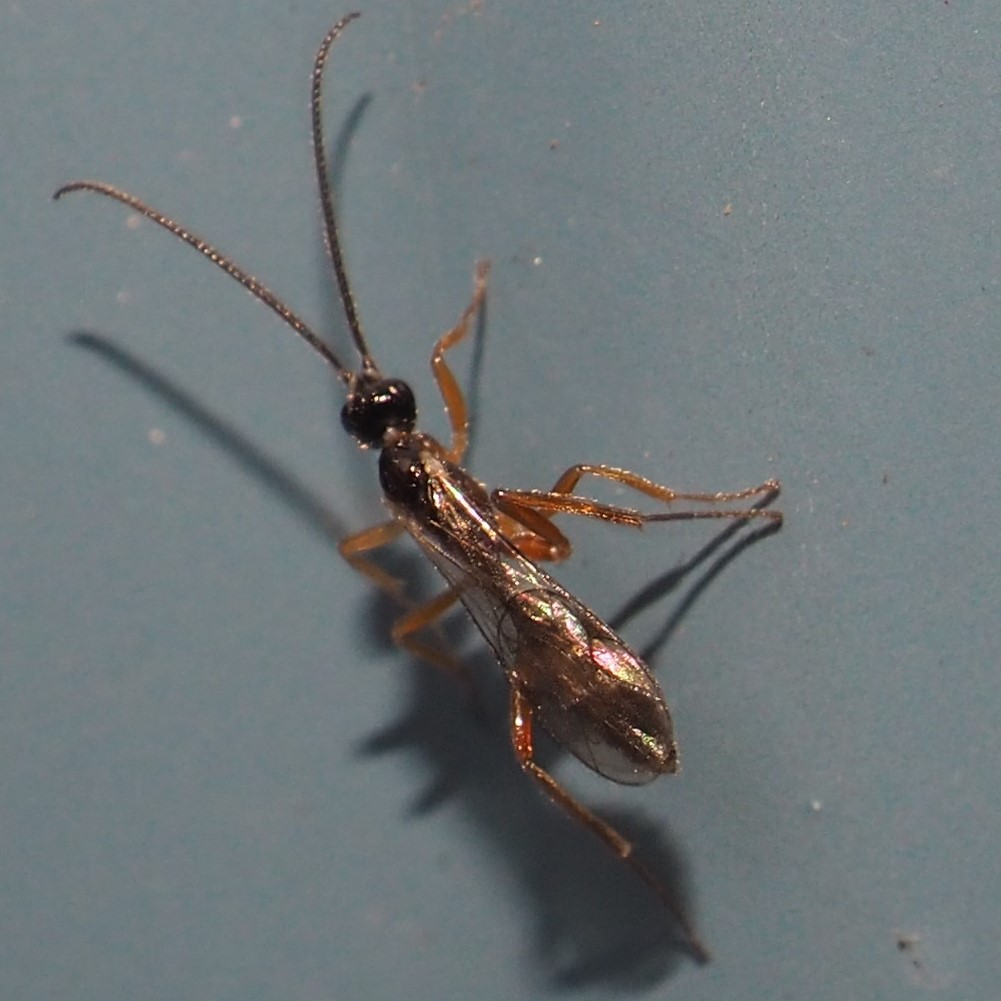
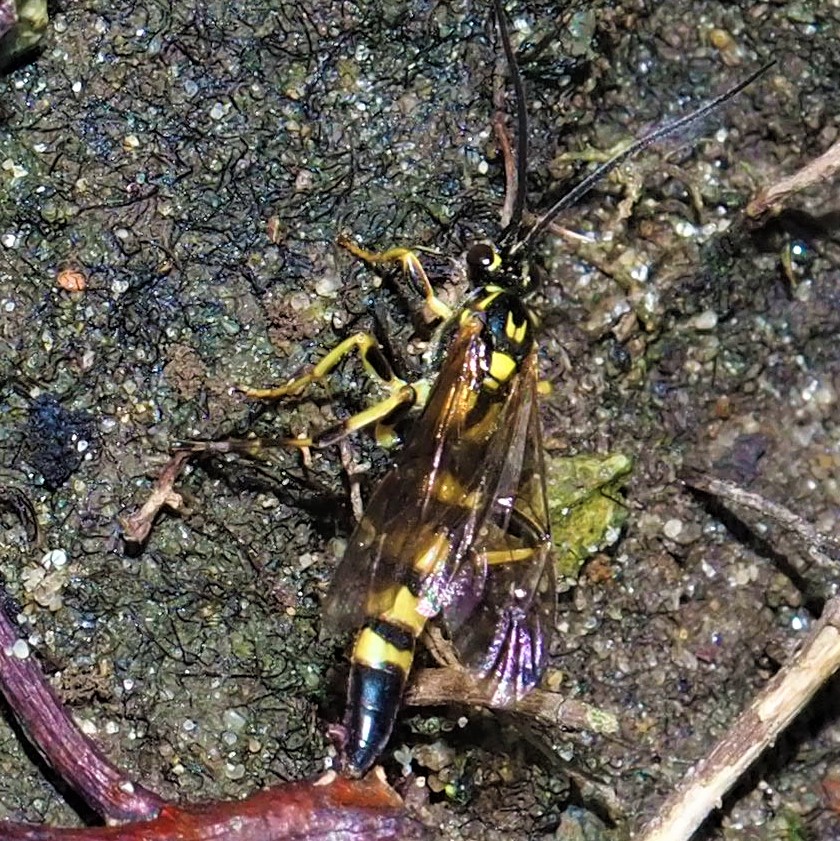
Now for the Big Surprise! This morning when I was out checking the pond, a big Green Frog was sitting on the edge. Not too much later, he was joined by a lovely female! I think they're just waiting for dusk to hop into the pond and make Frog eggs.
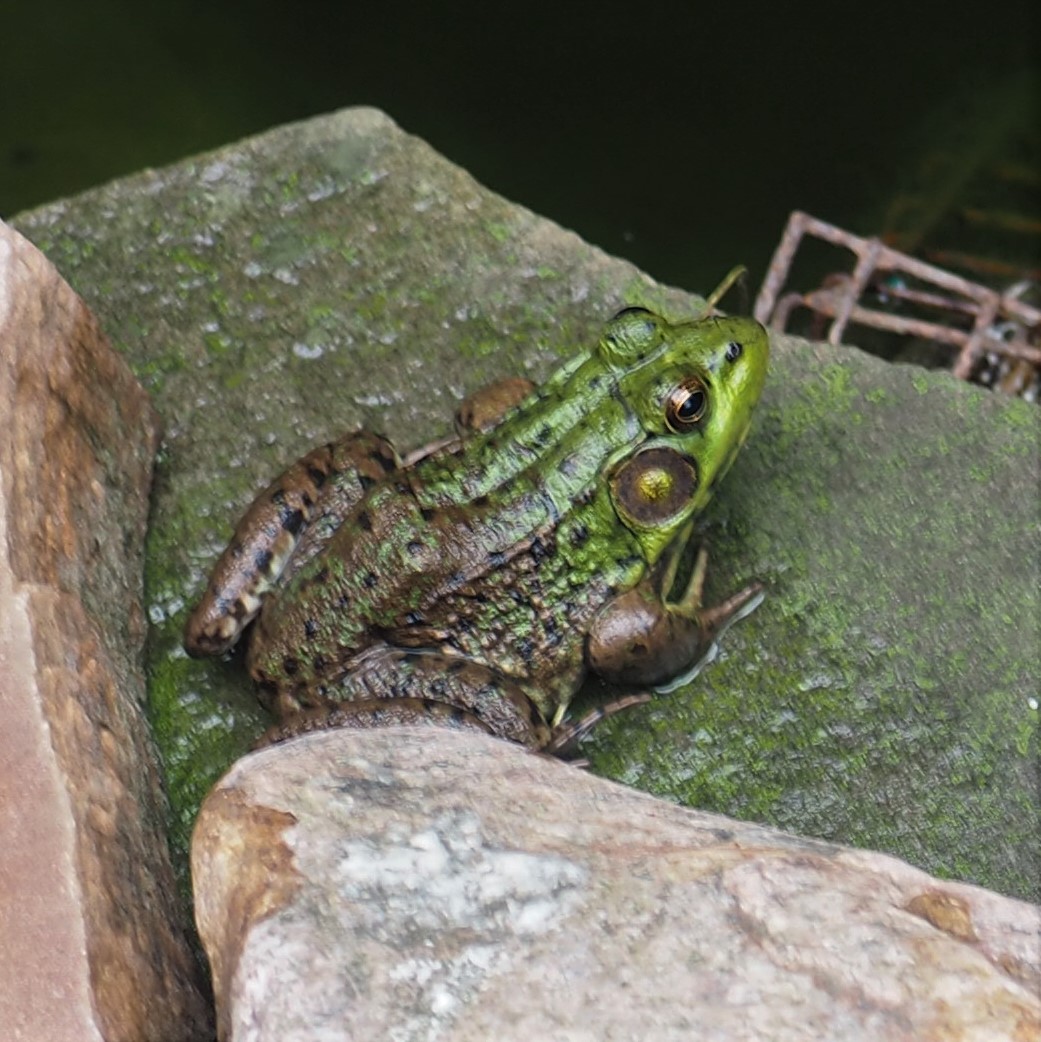
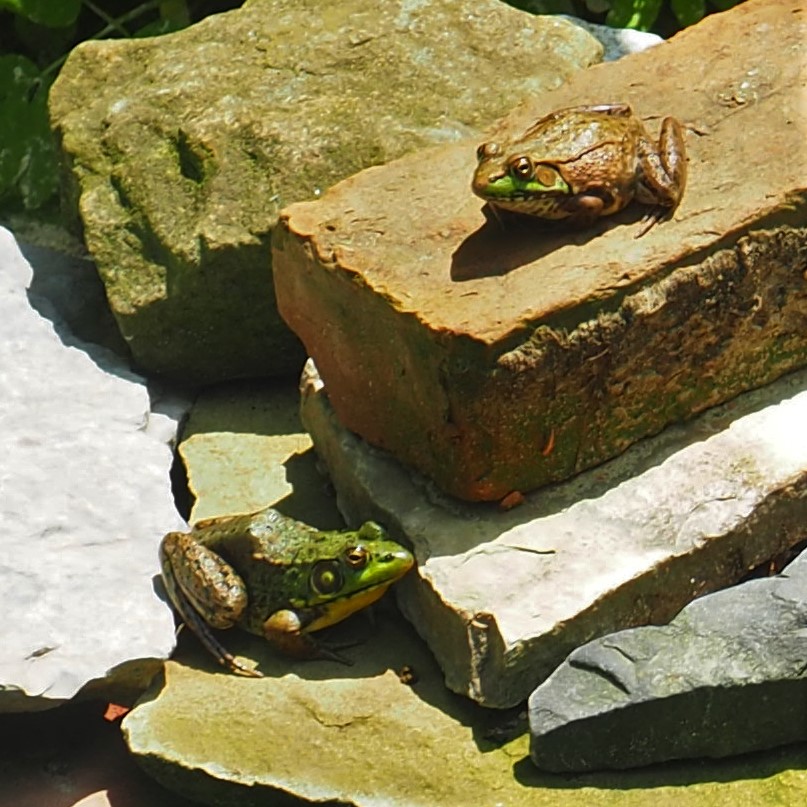
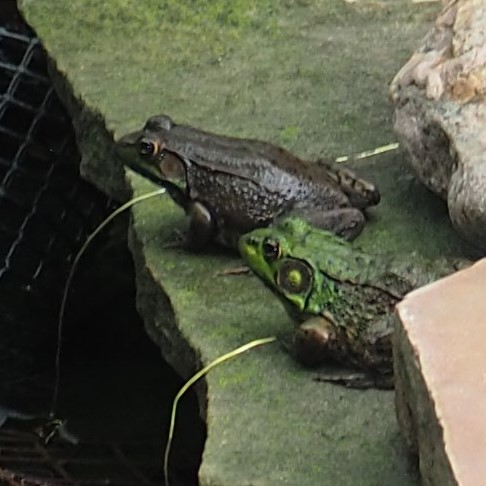
But there's more. Yesterday I noticed that in all that rain I hadn't noticed that the tadpoles had gone about their business of turning into tiny toadlets. You have to walk very carefully around the pond to see them, although they are capable of hopping several inches at a hop. This in a tiny animal a bit more than a half-inch long.
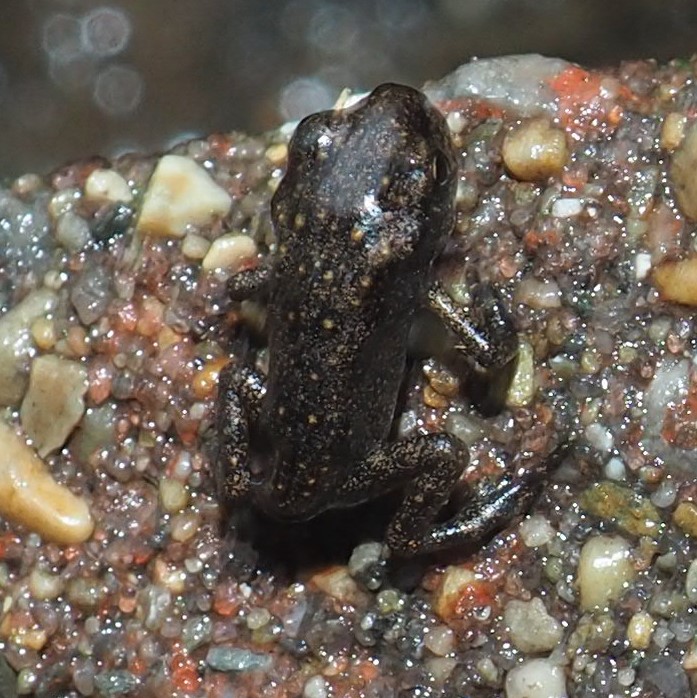
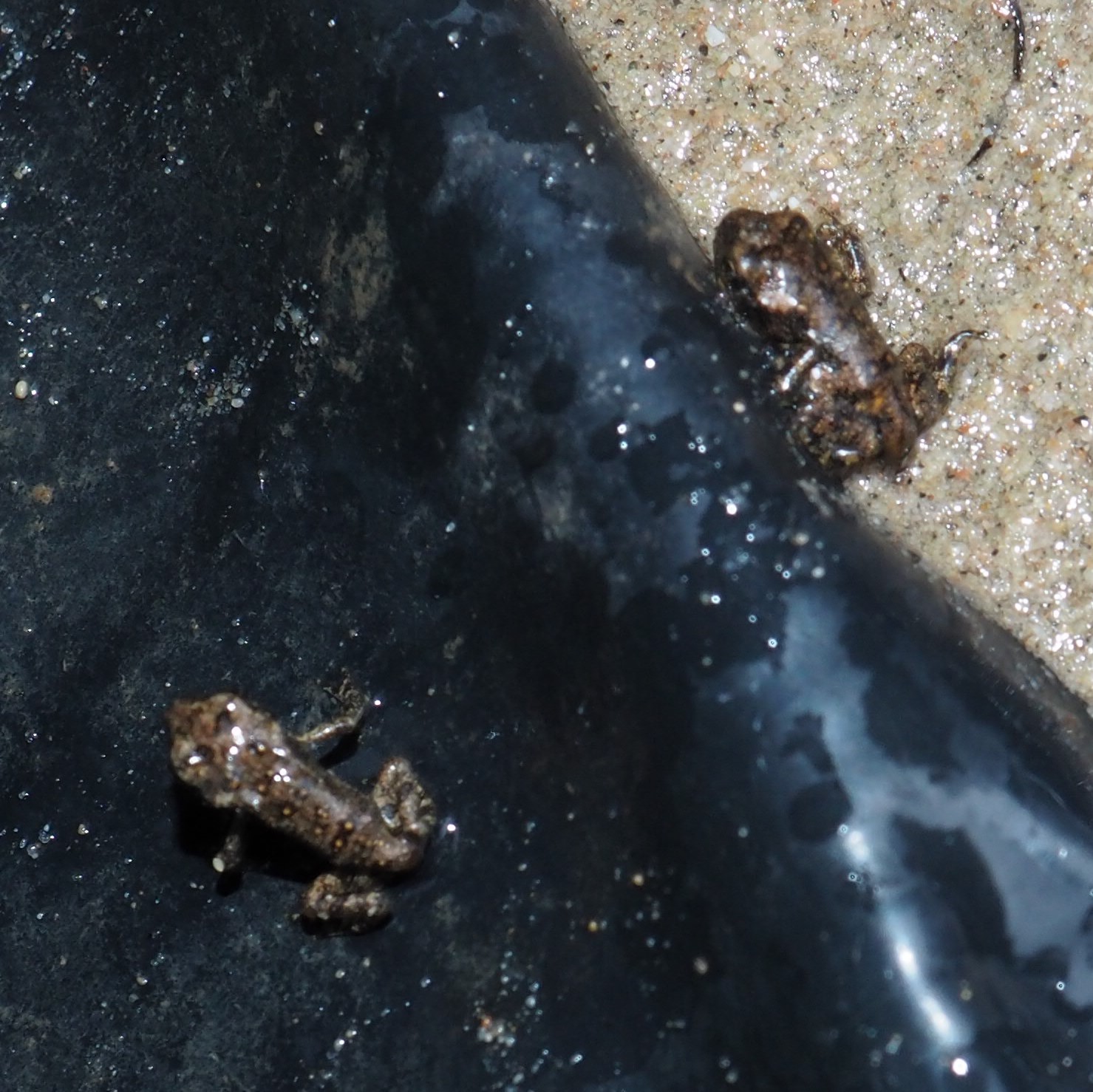
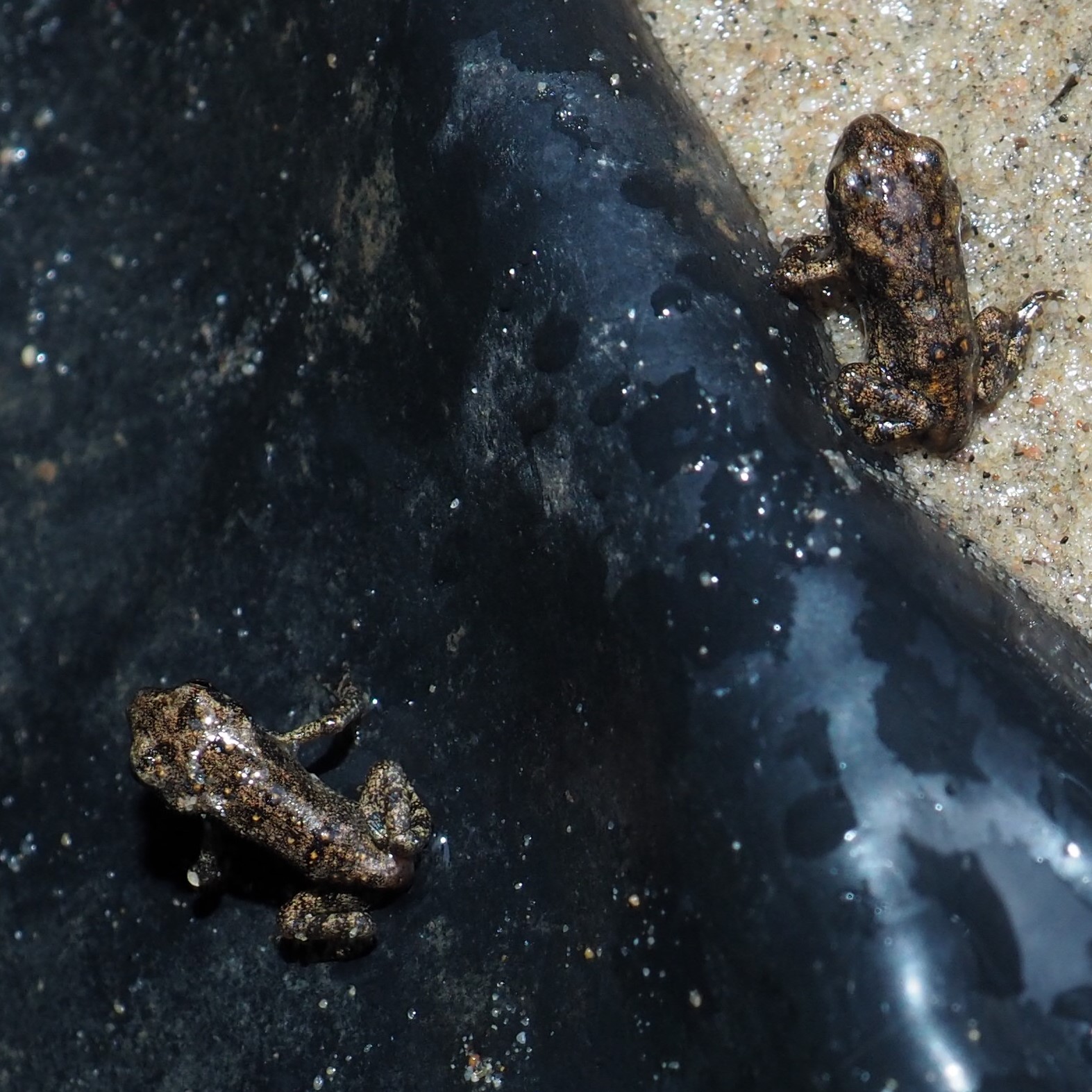
This shows that the pond is becoming like a real pond again. The fishes are mating, the frogs and toads are mating, and little creatures are being born. It's a real miracle.
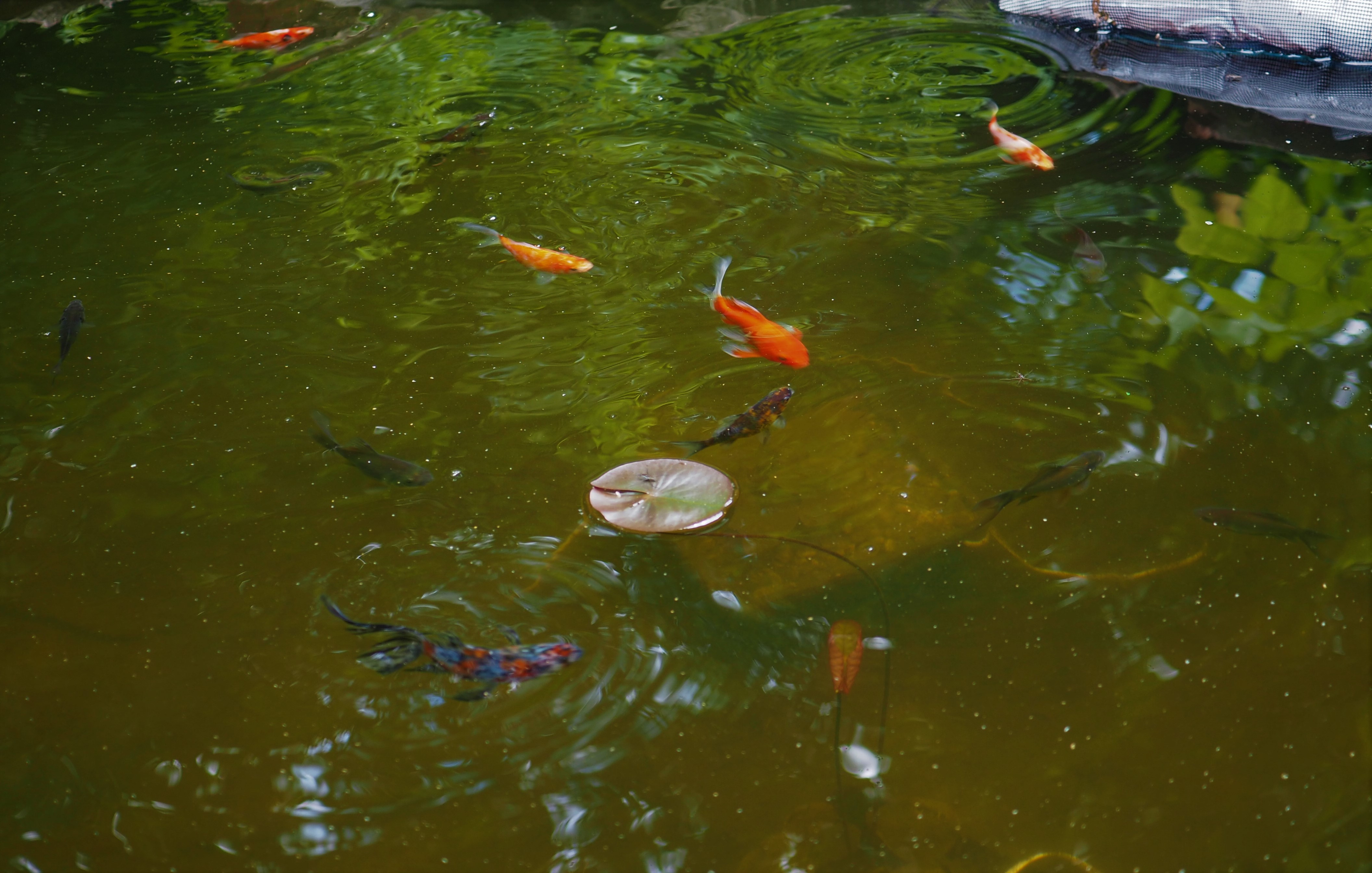
Life goes on. Come on over and sit with me by the pond and watch the antics of its denizens.
Love, Martha
Back to June 20, 2021
Forward to July 4, 2021
Back to main menu
copyright Martha O'Kennon 2021
































































































































































